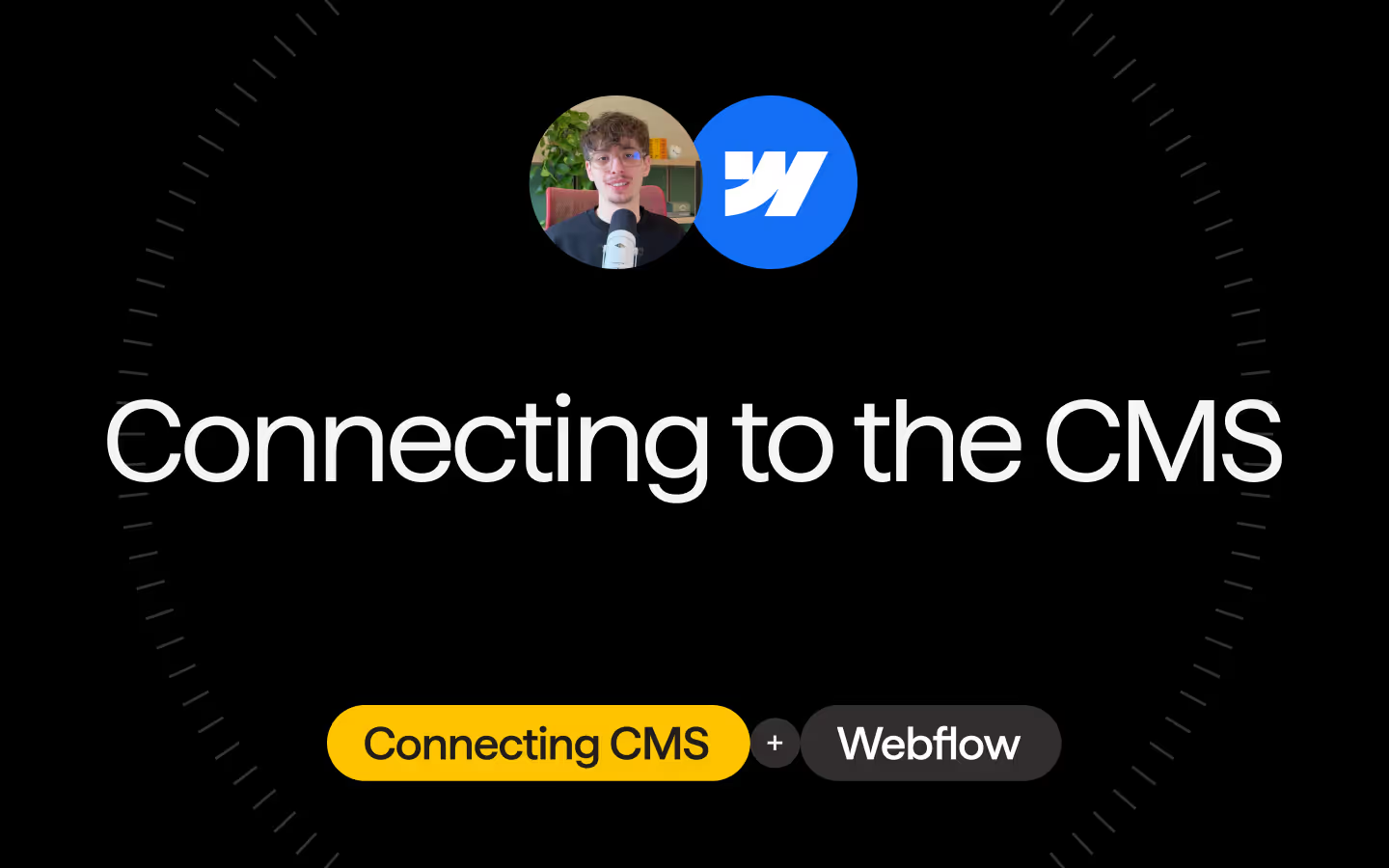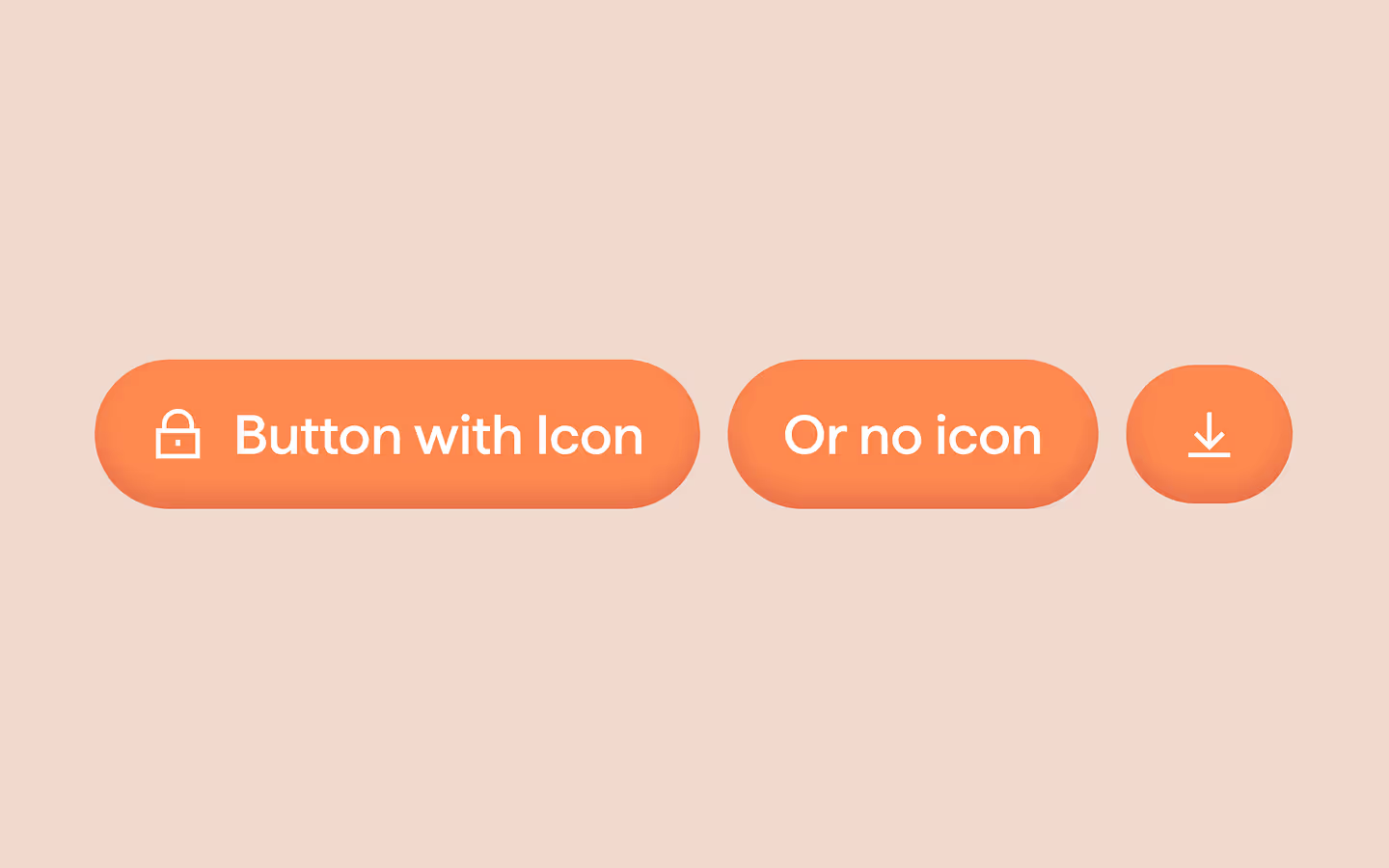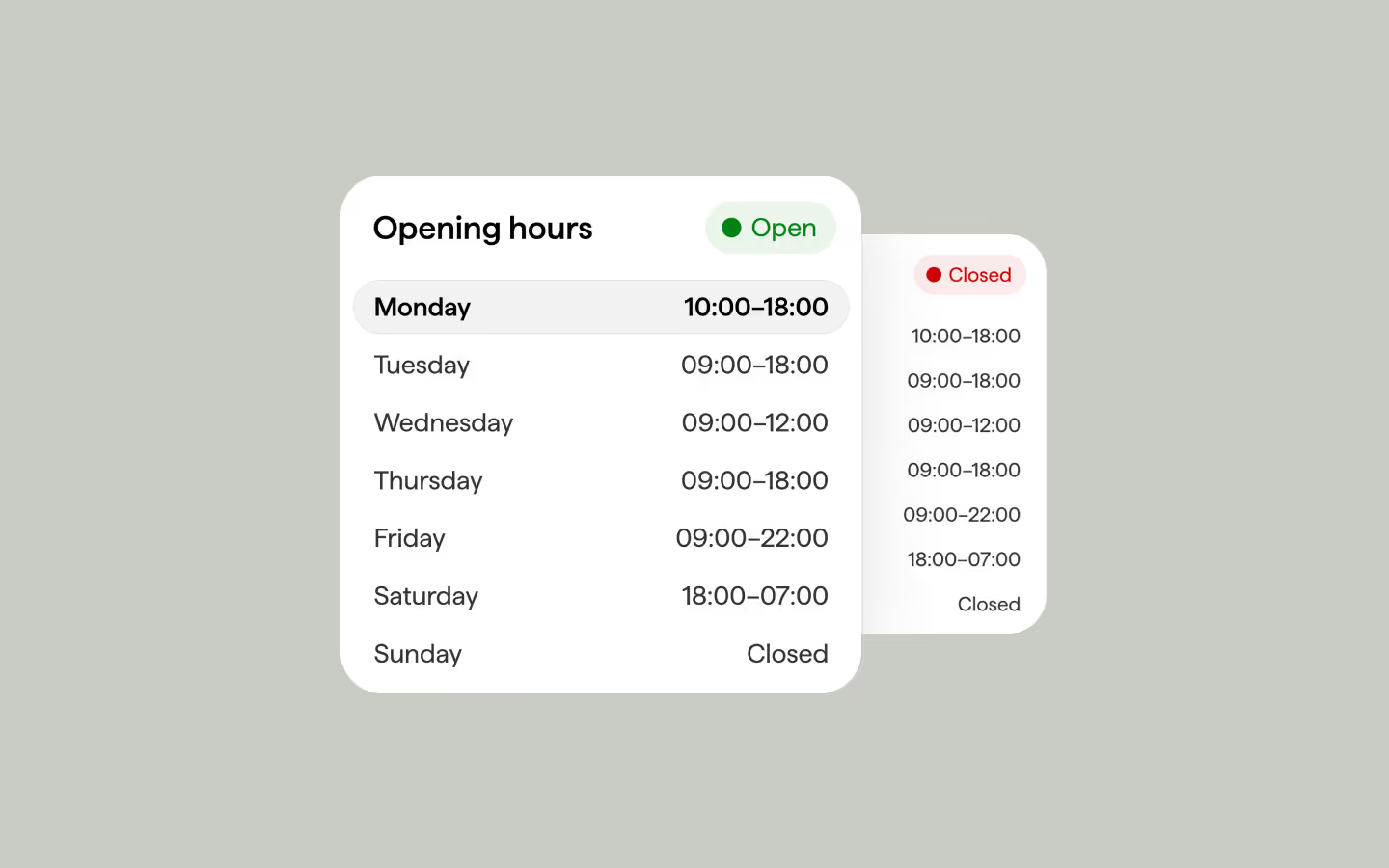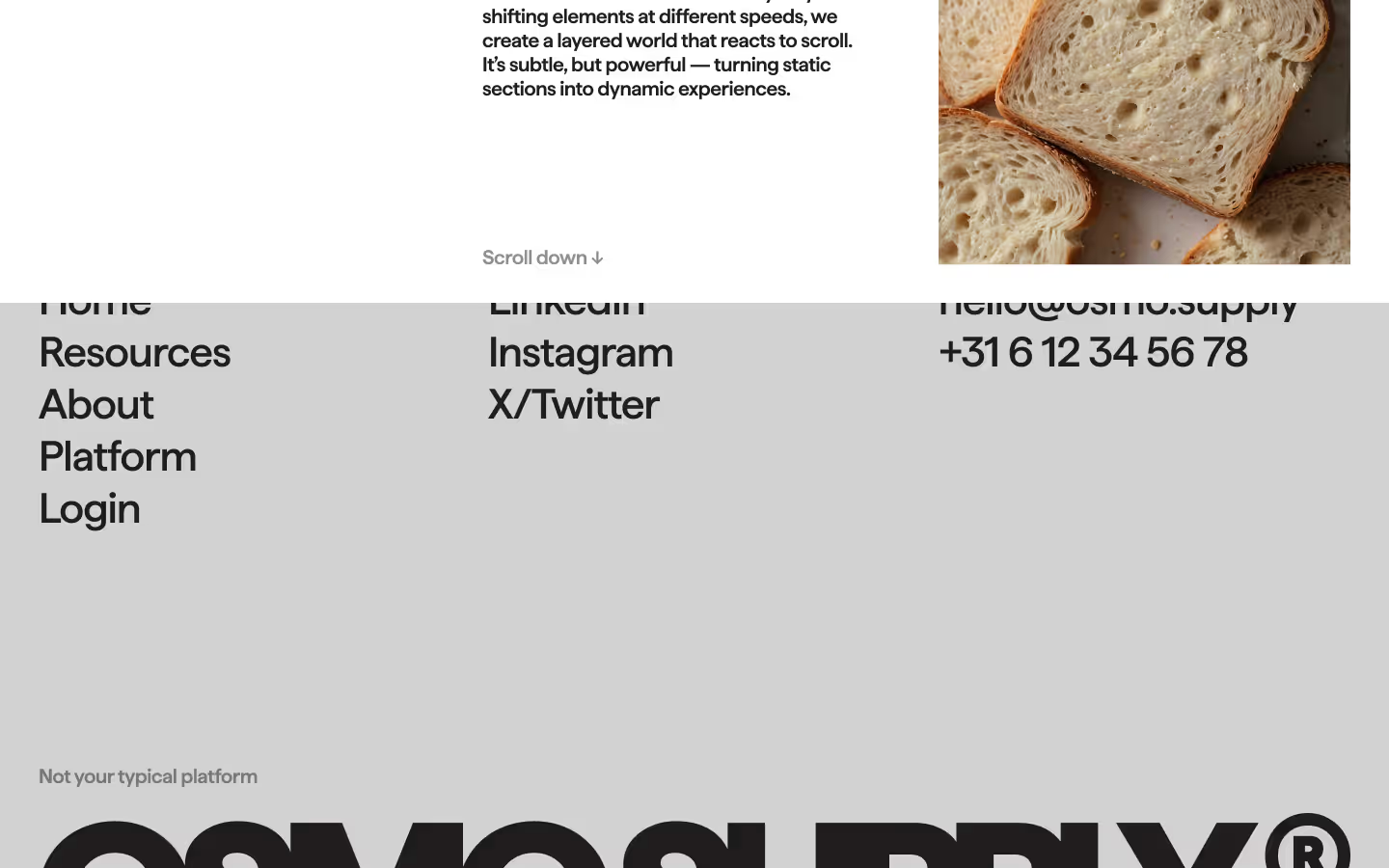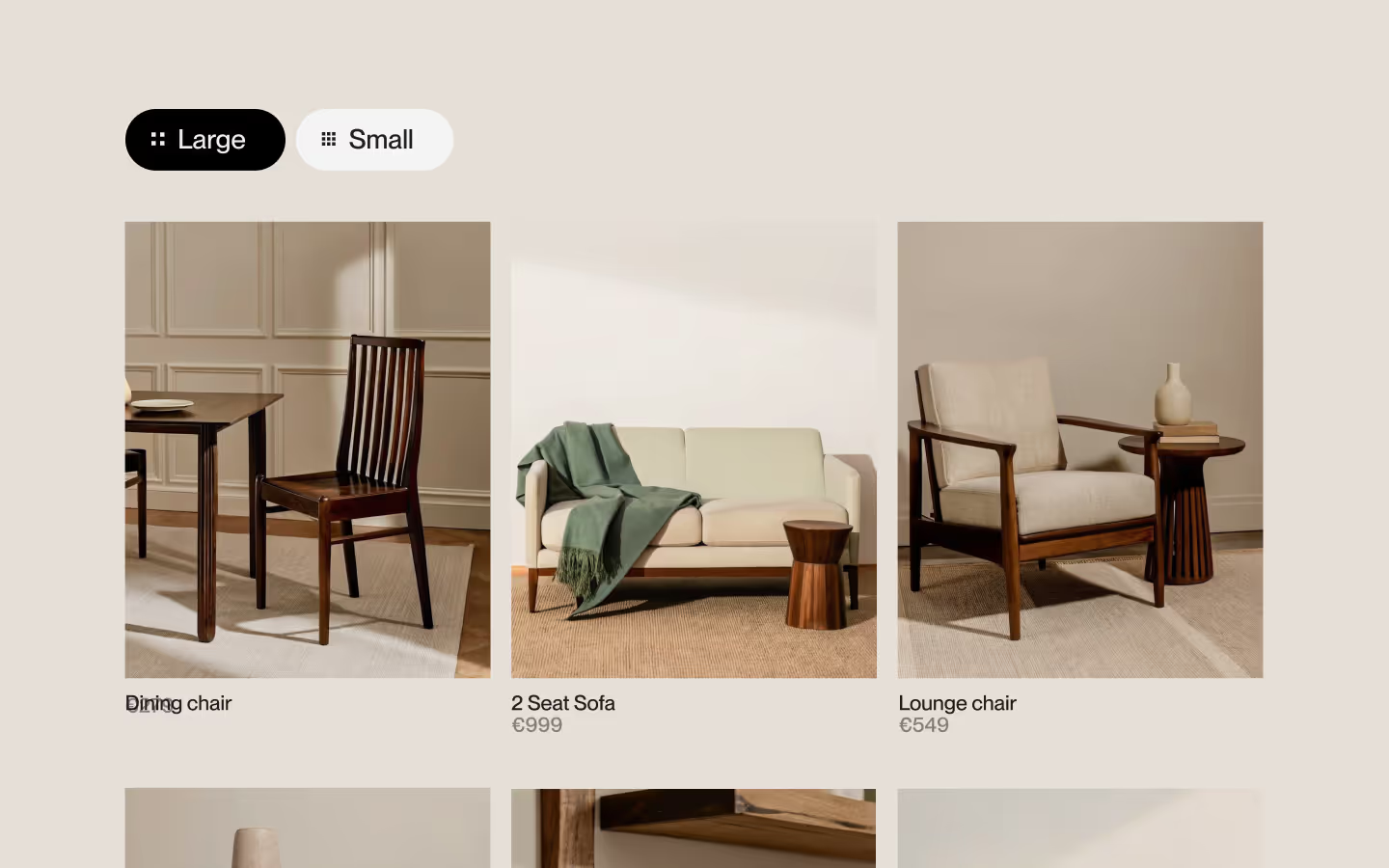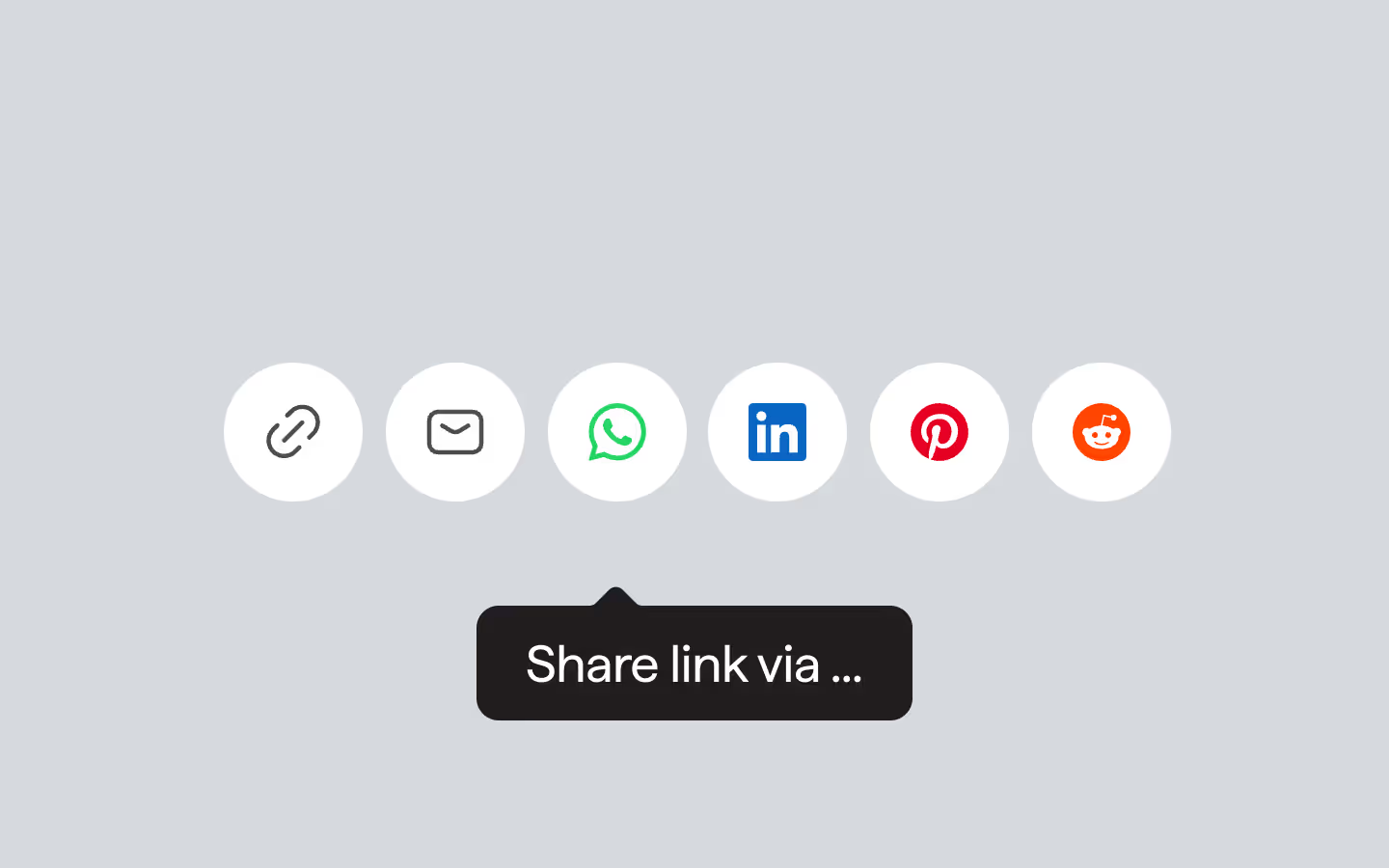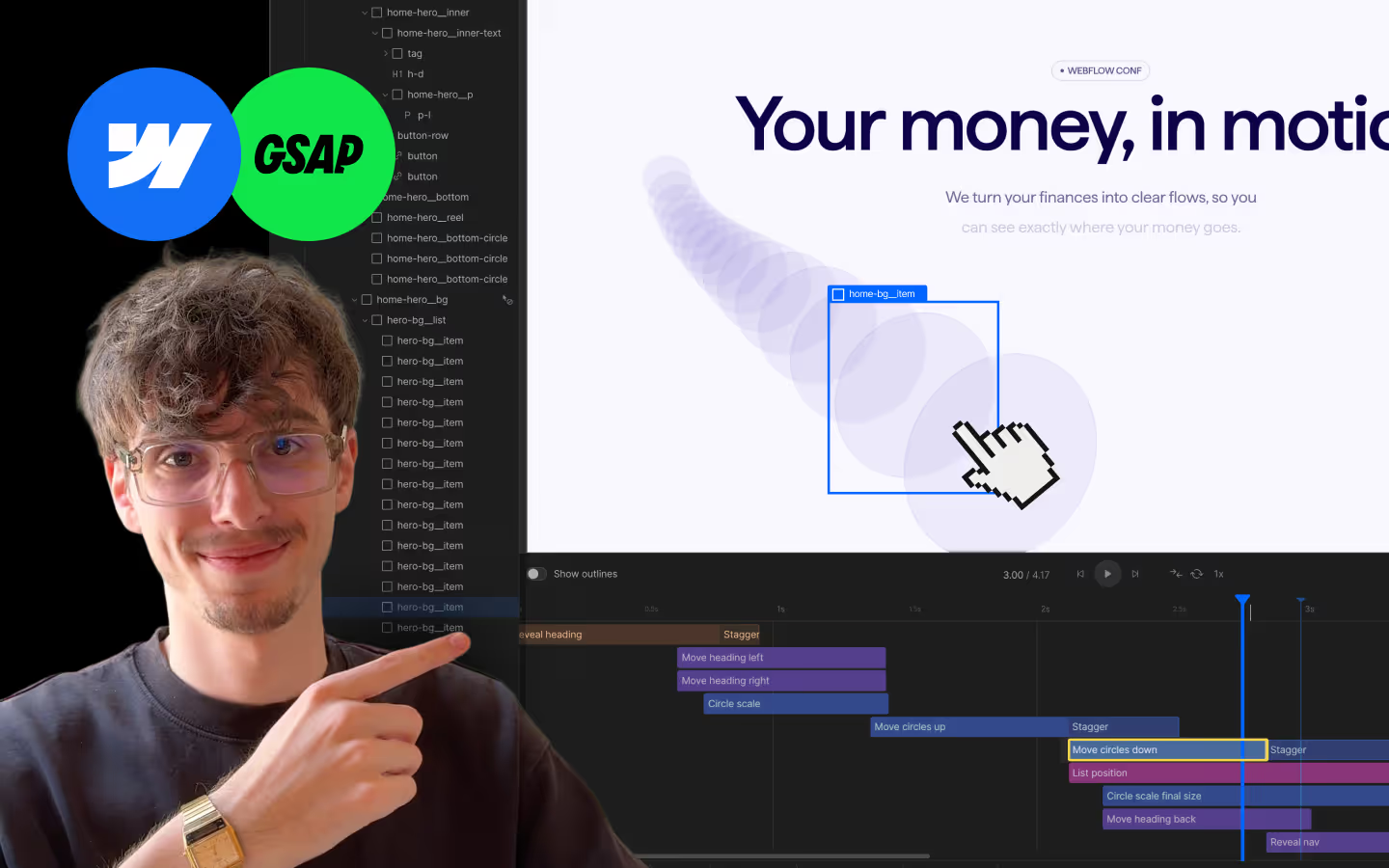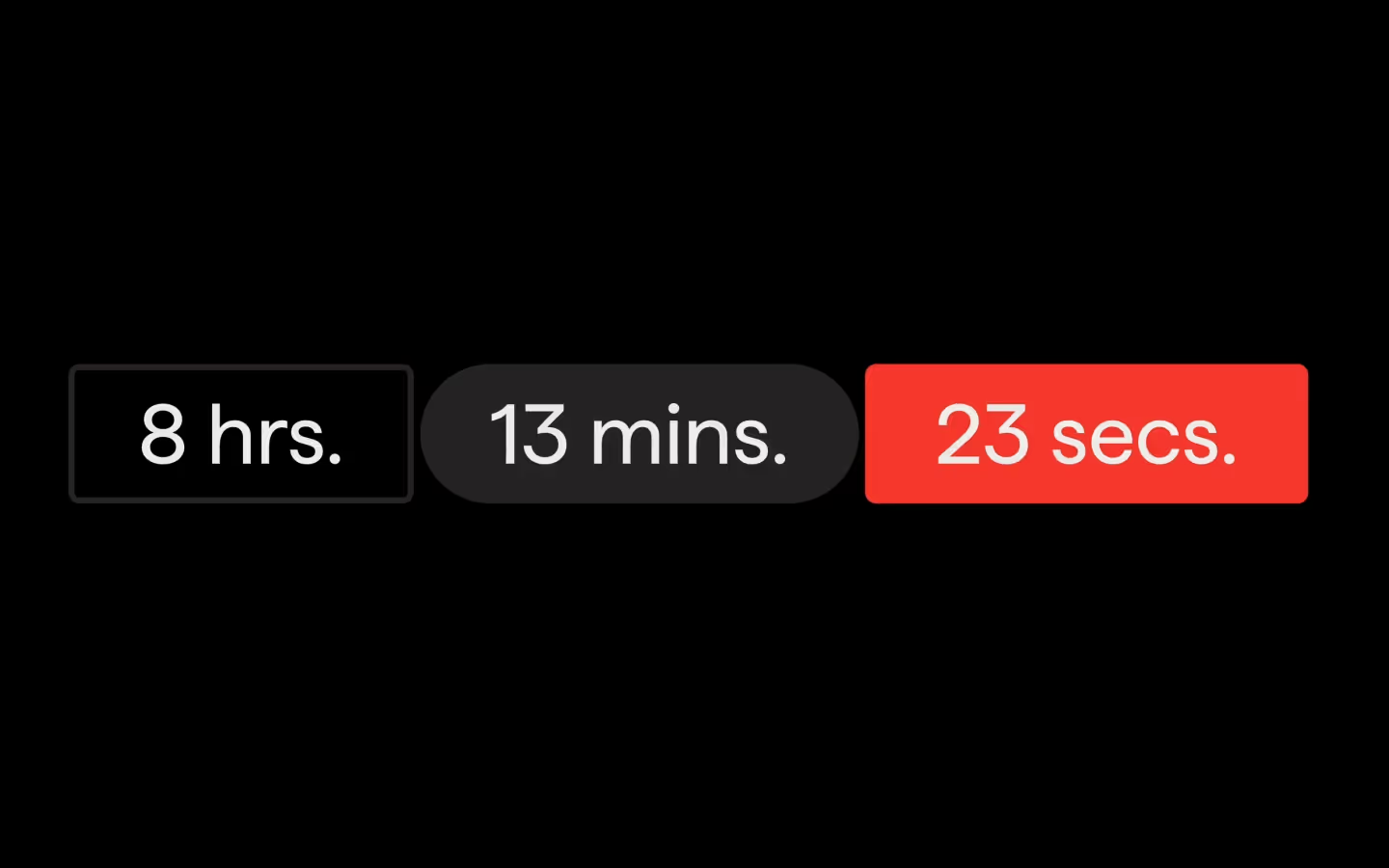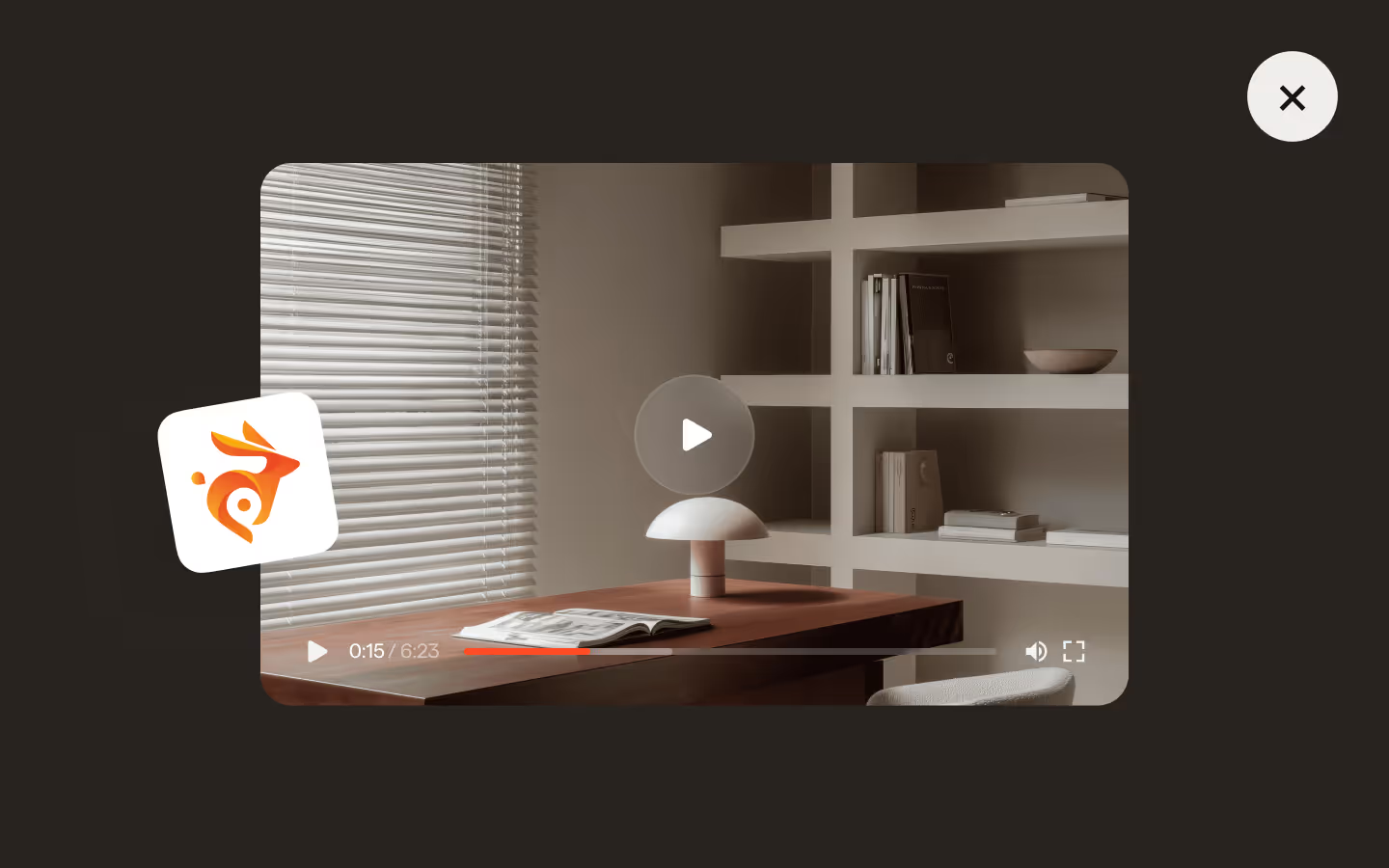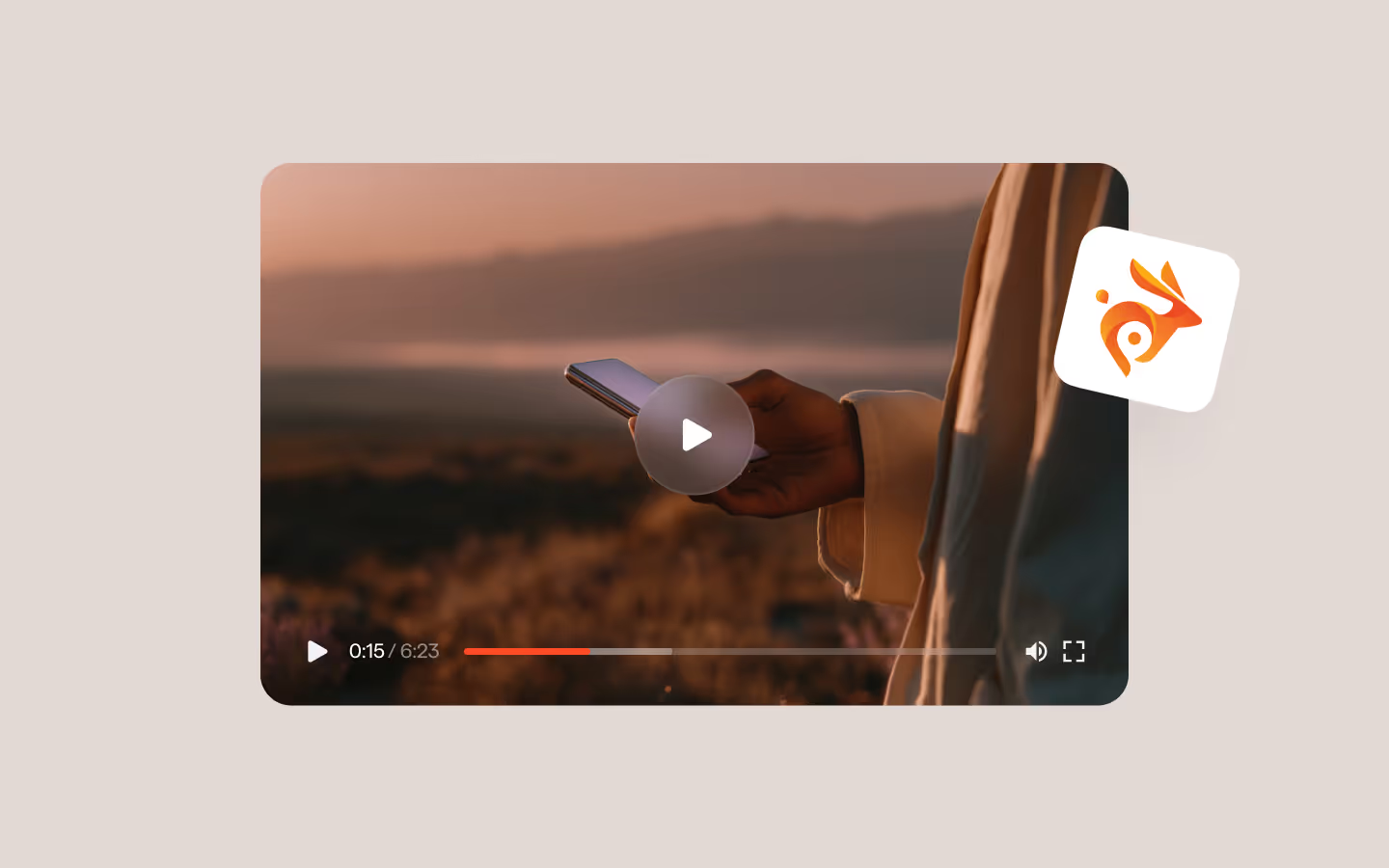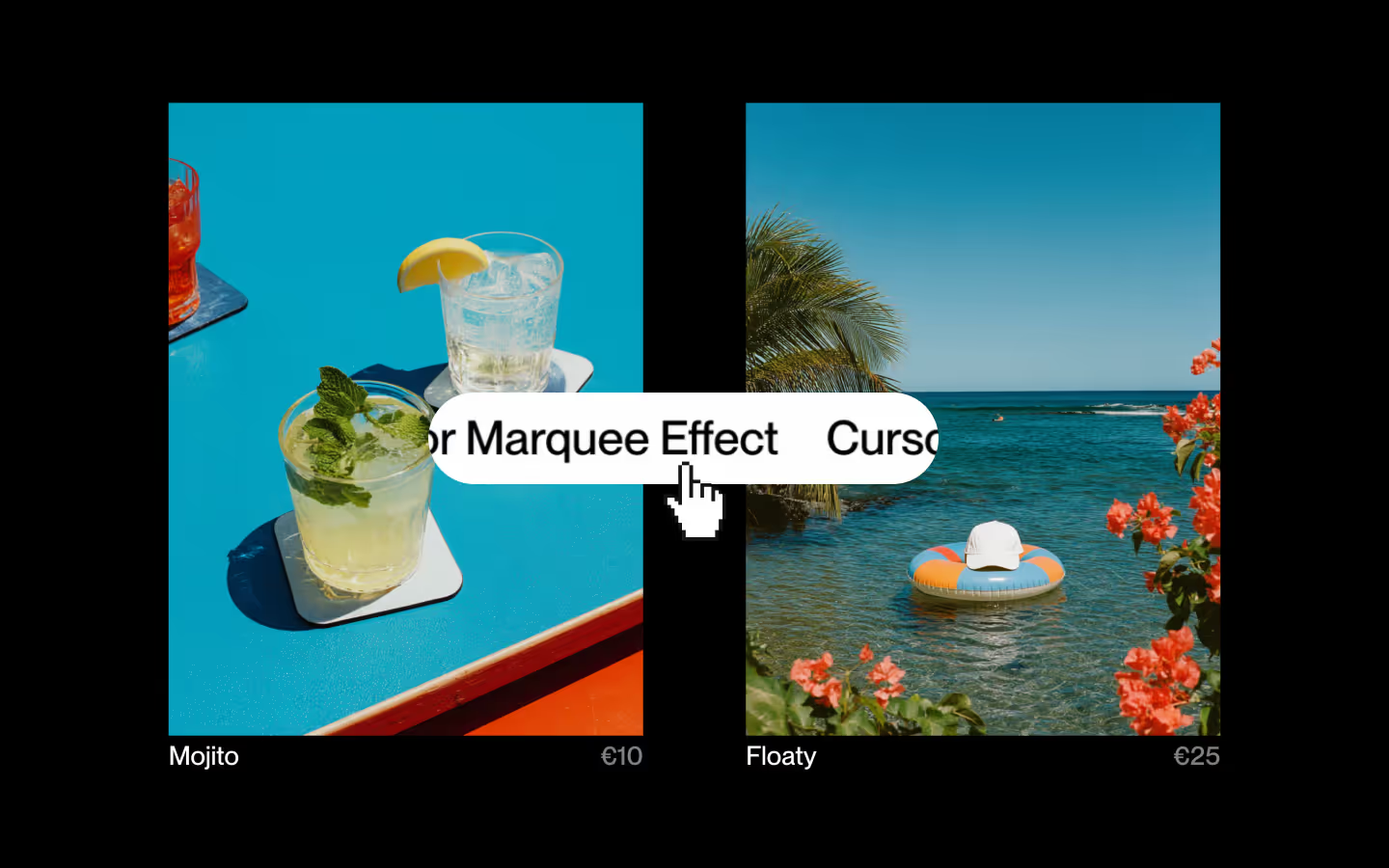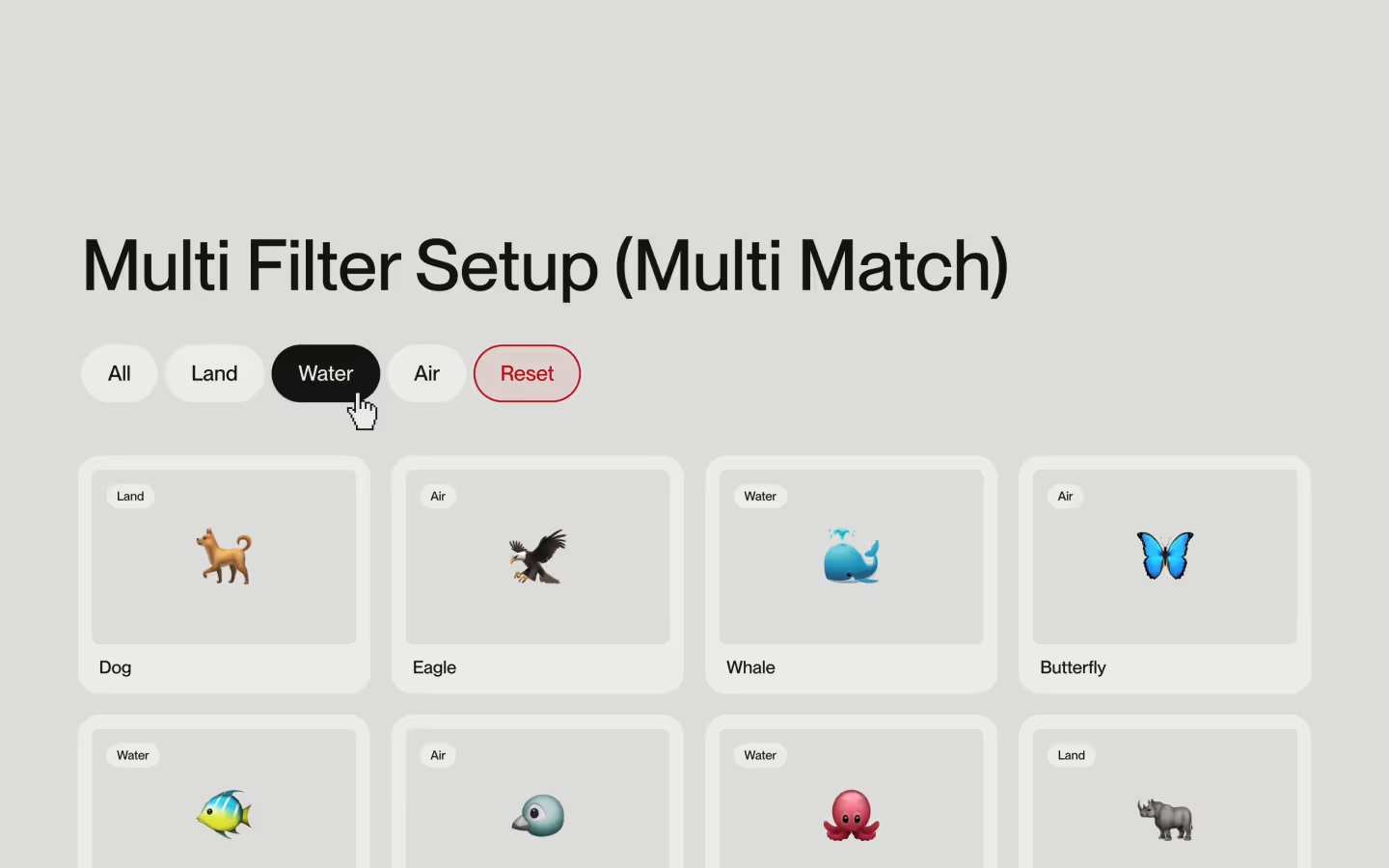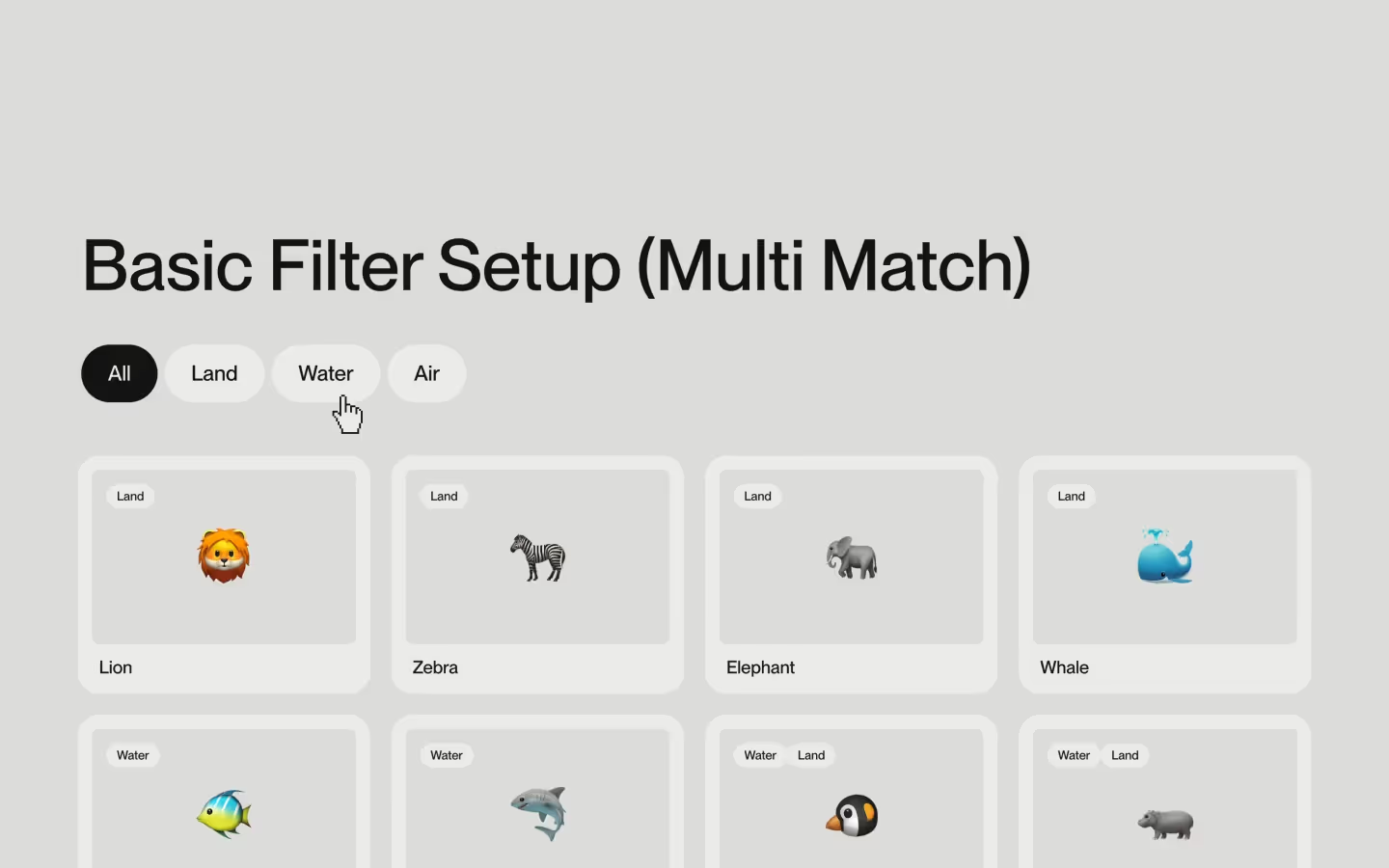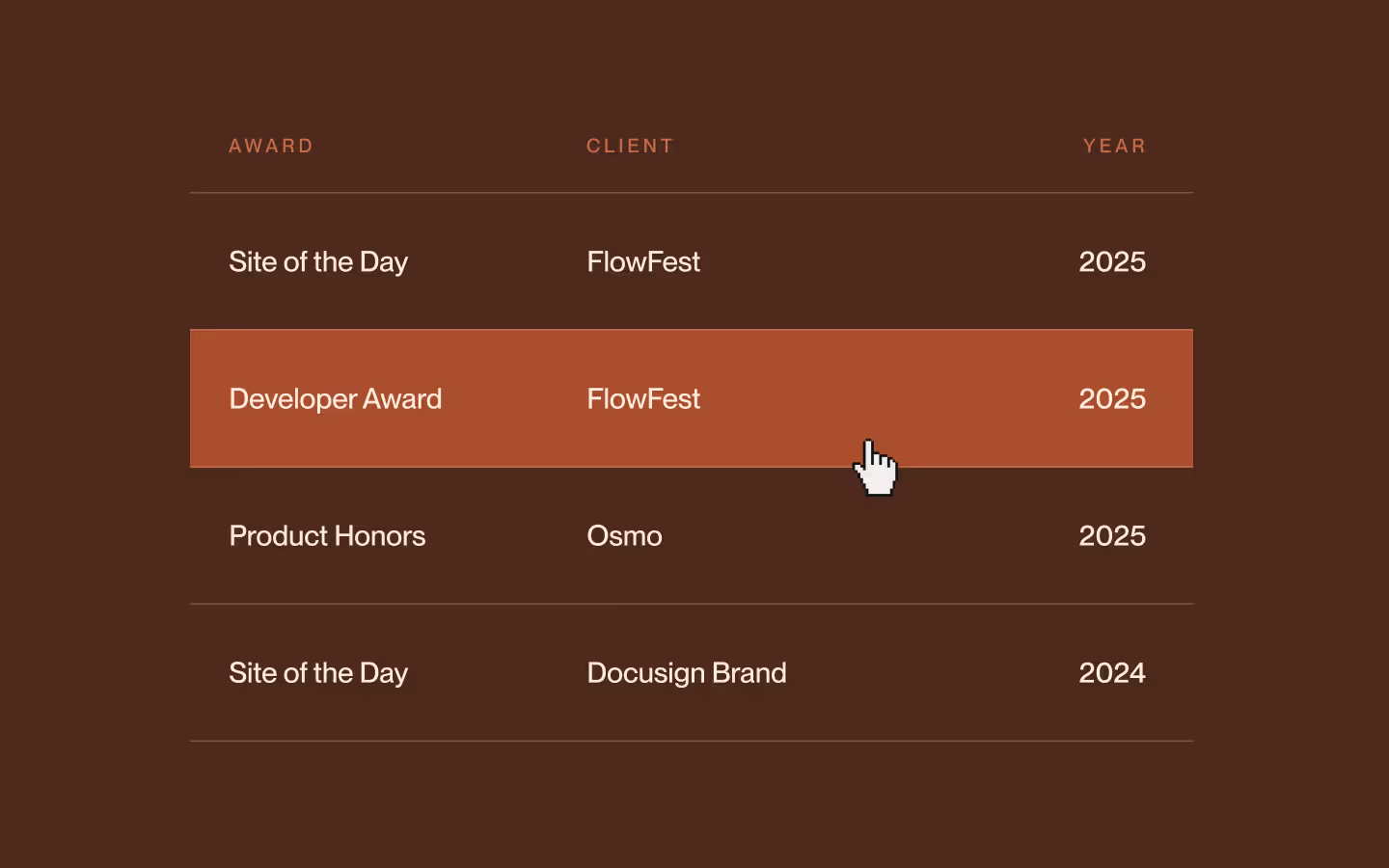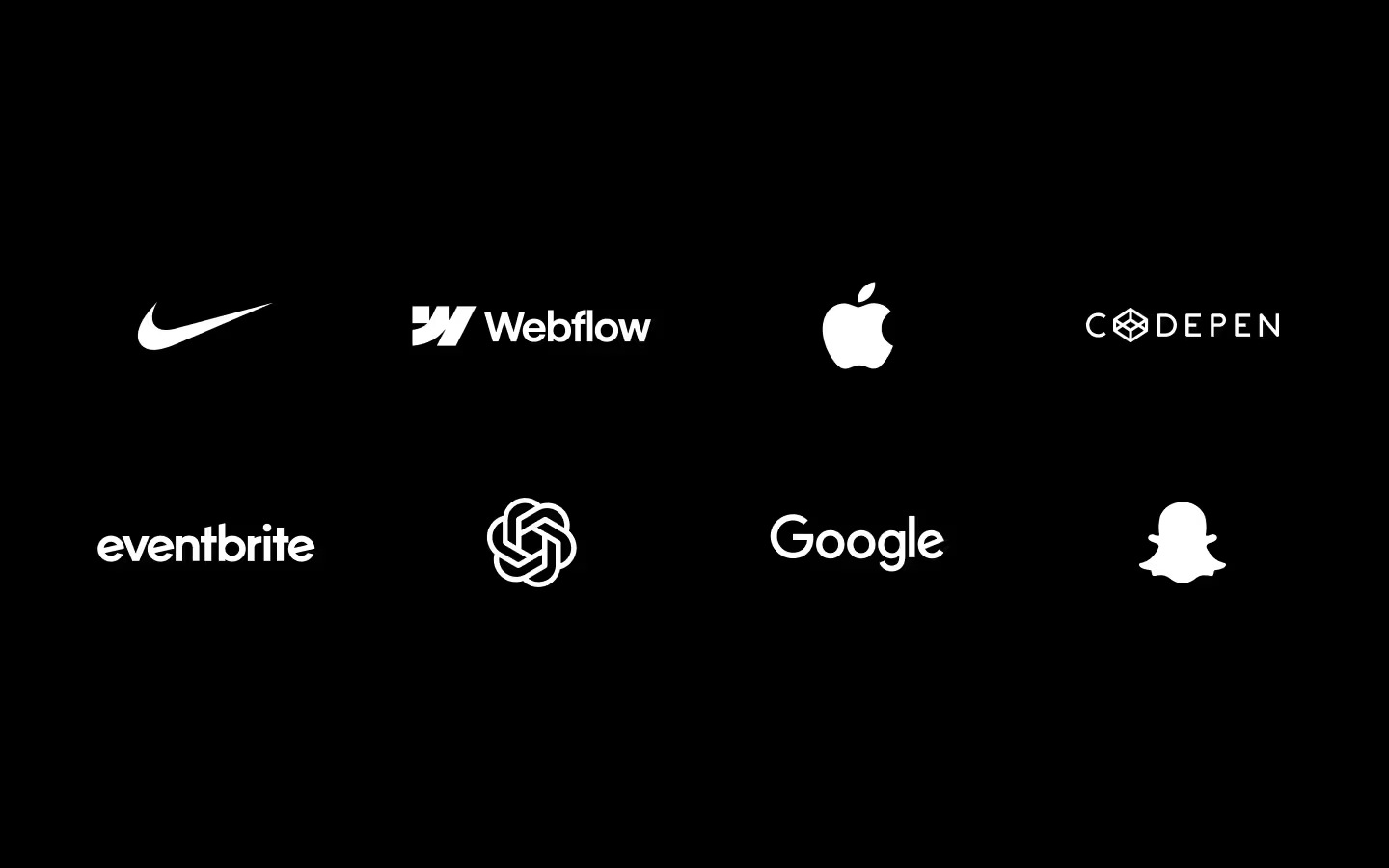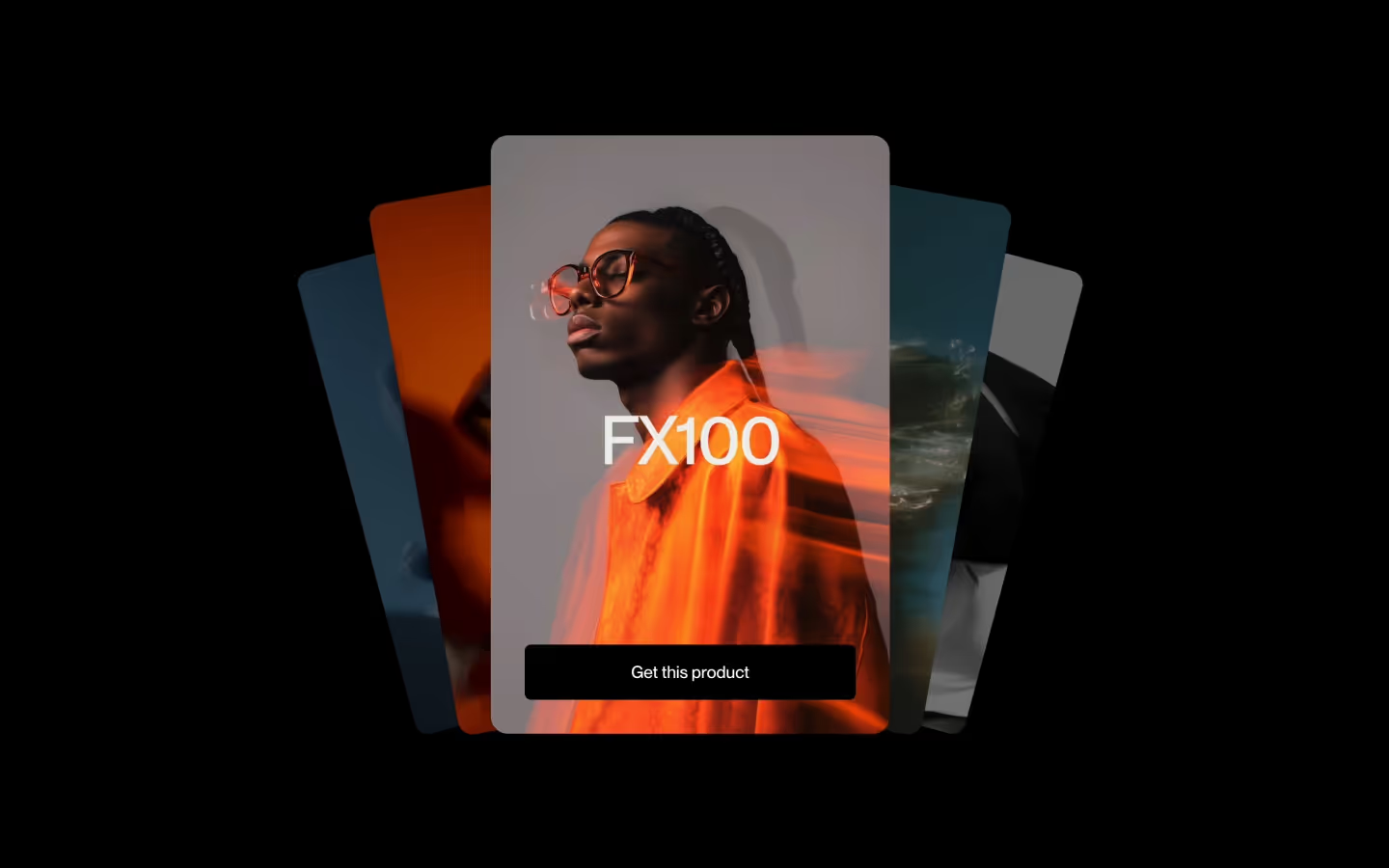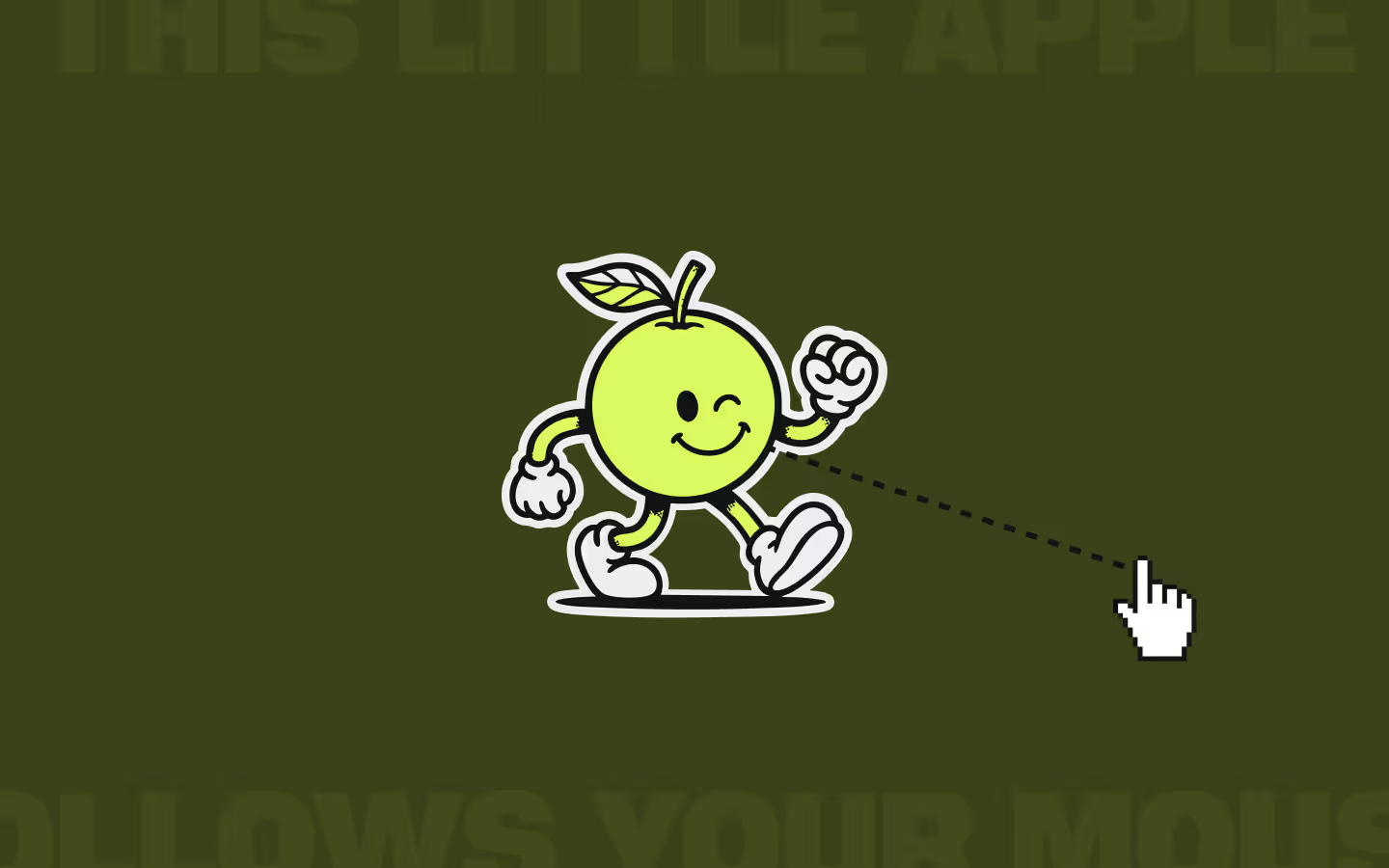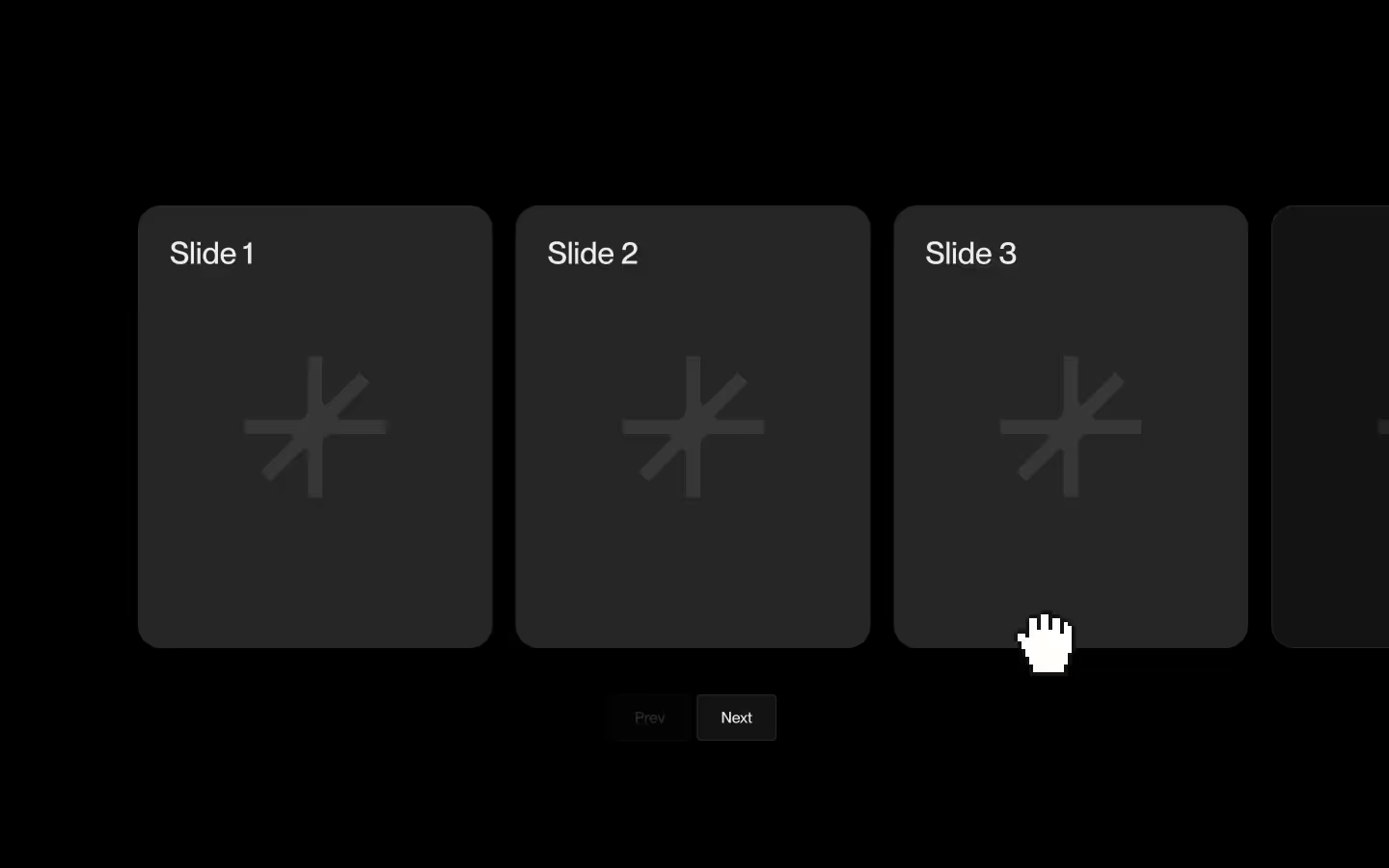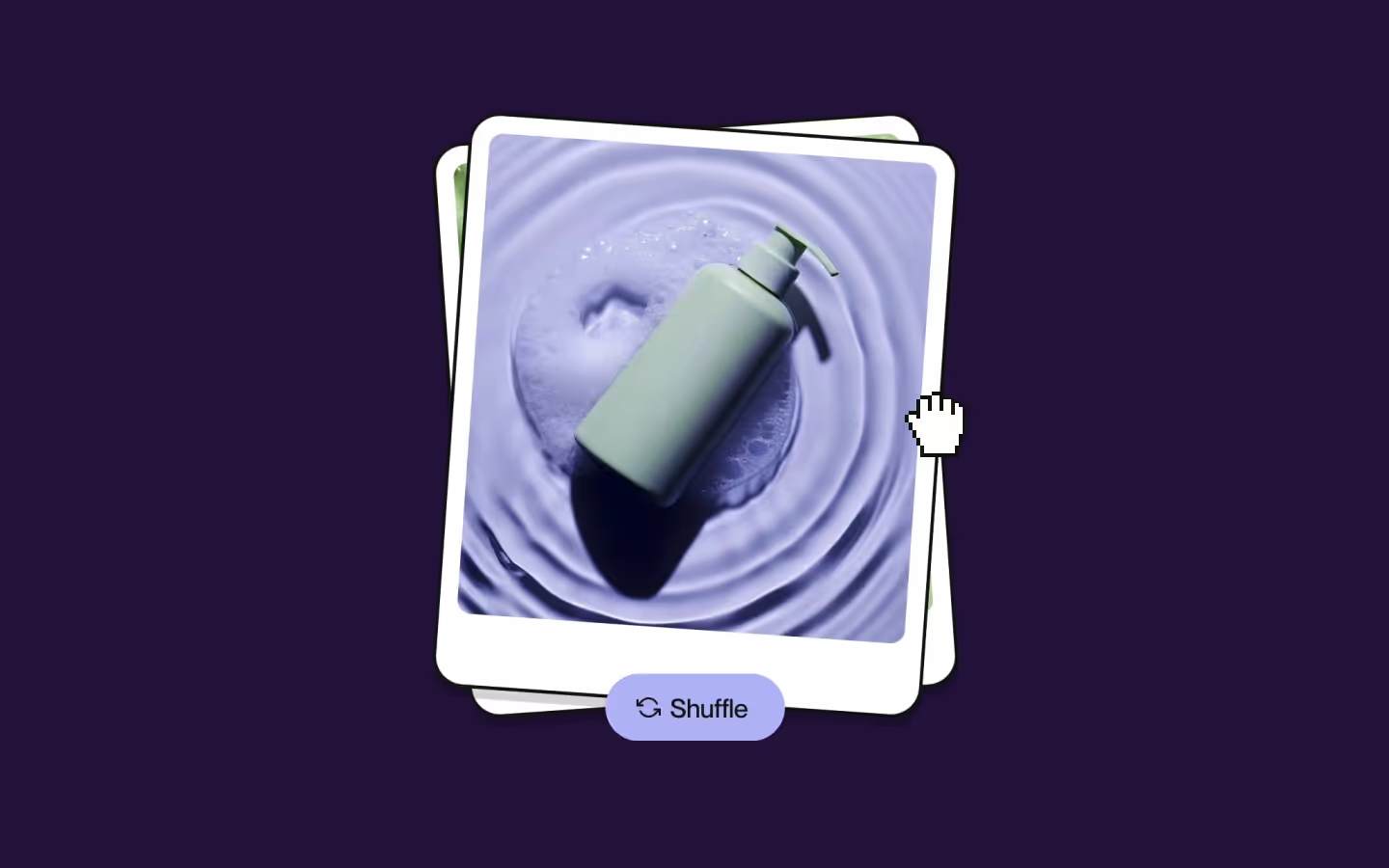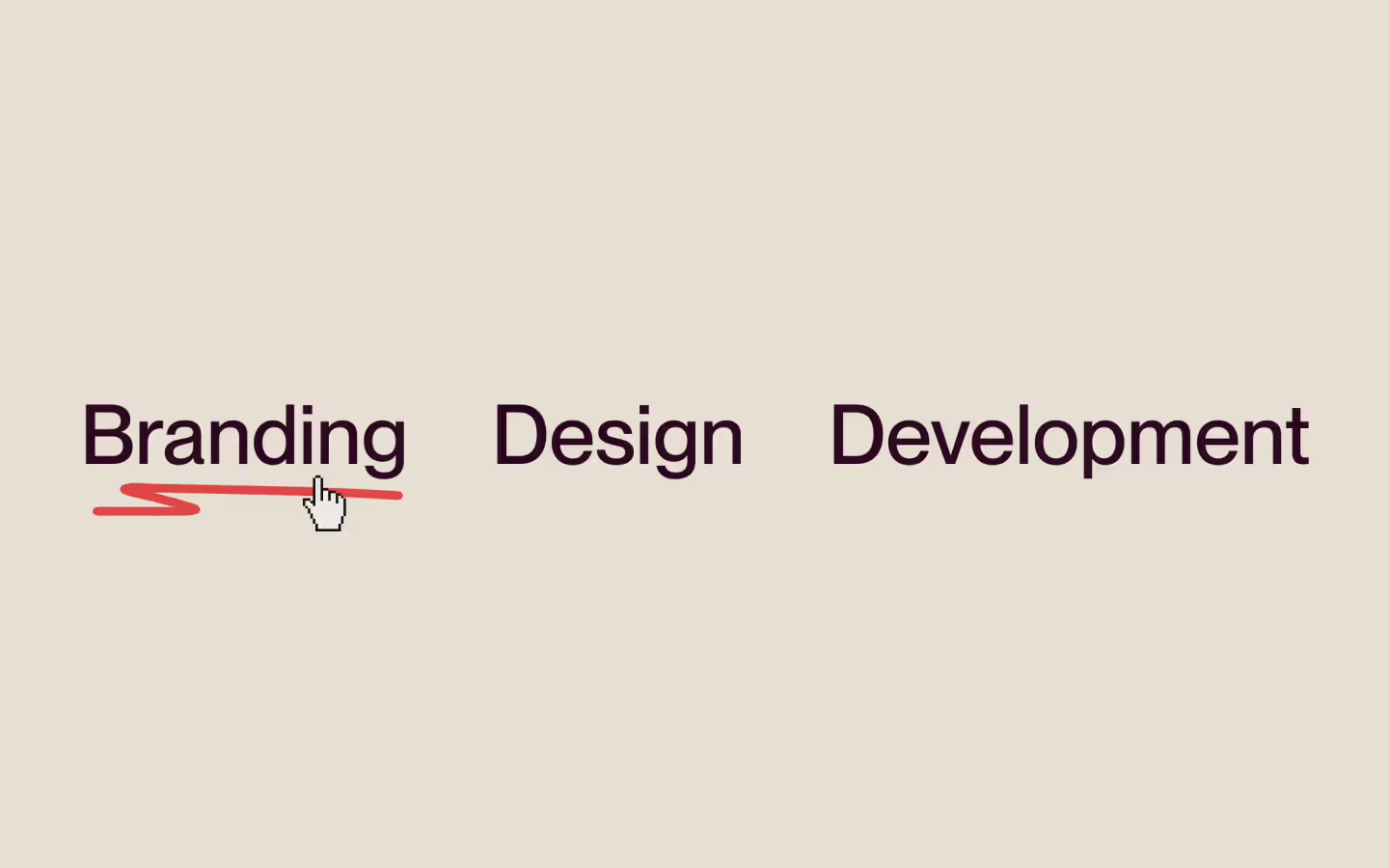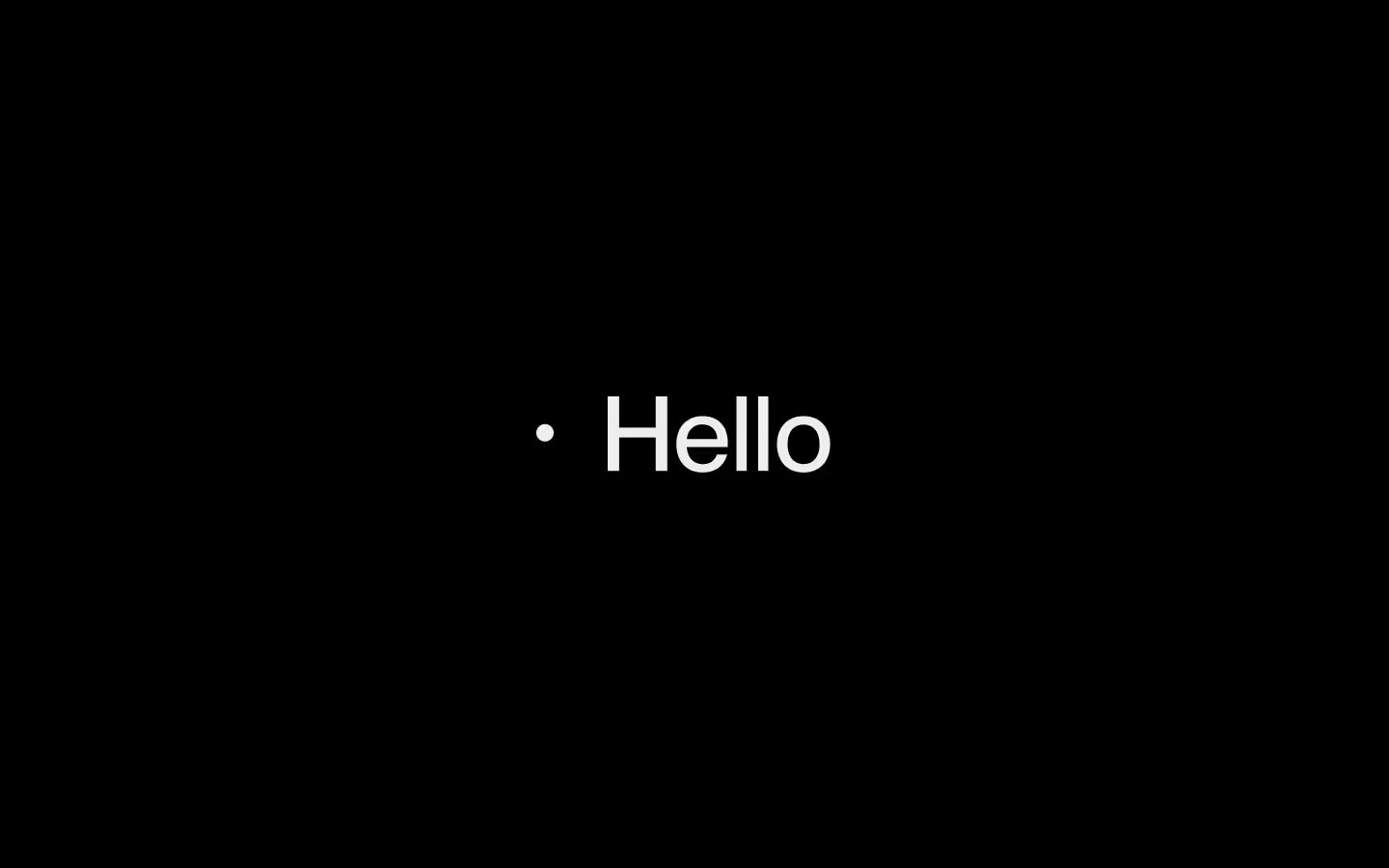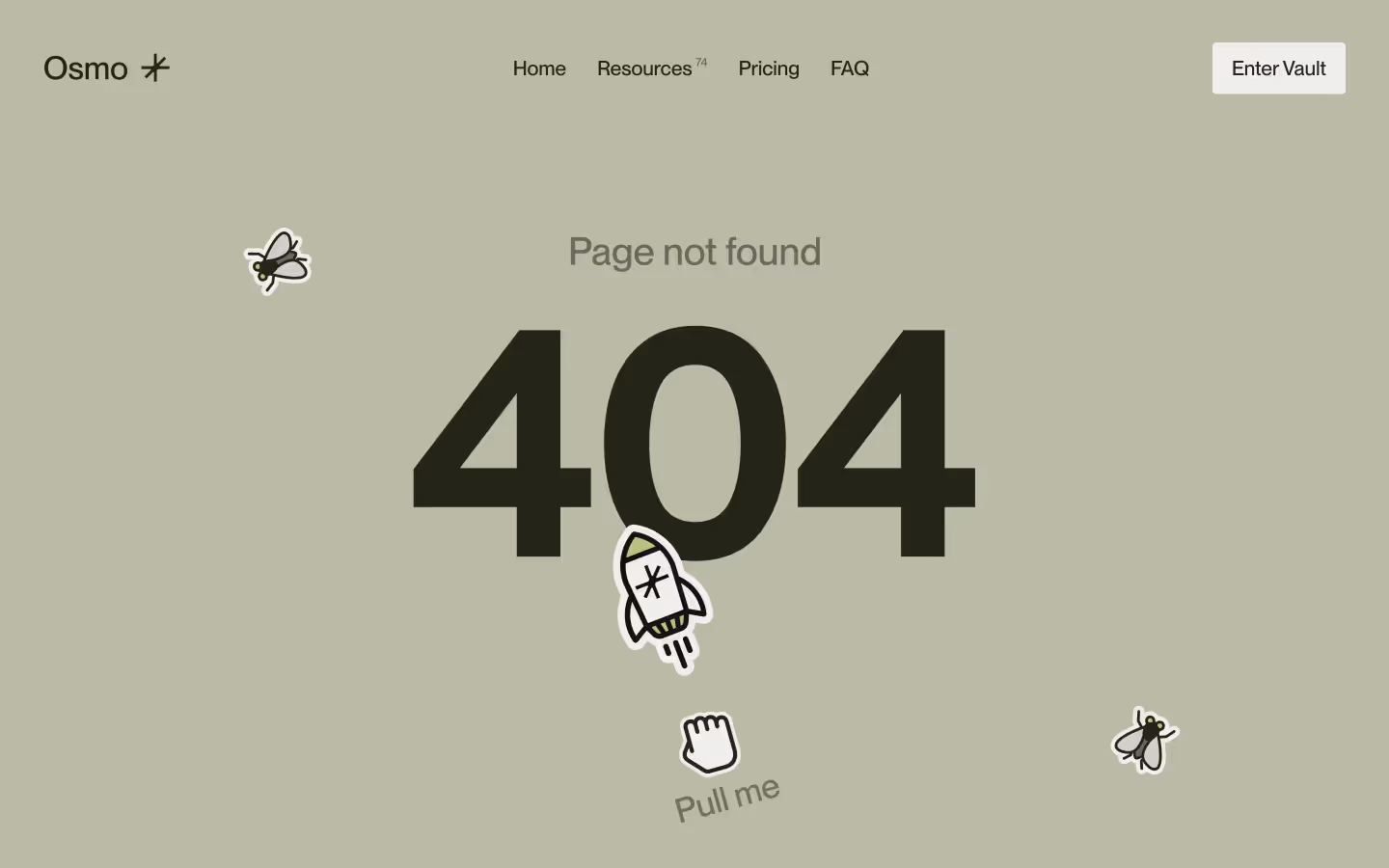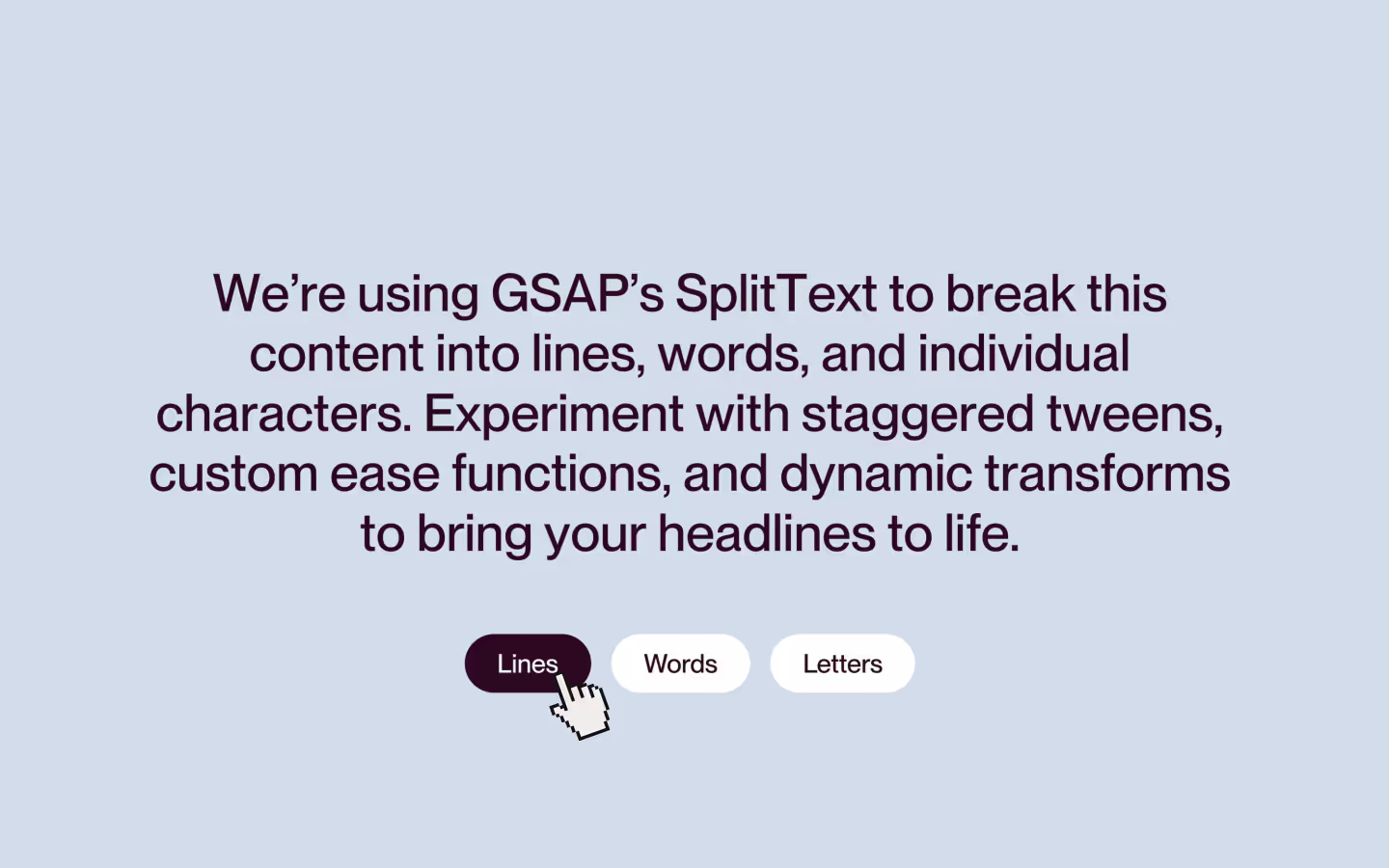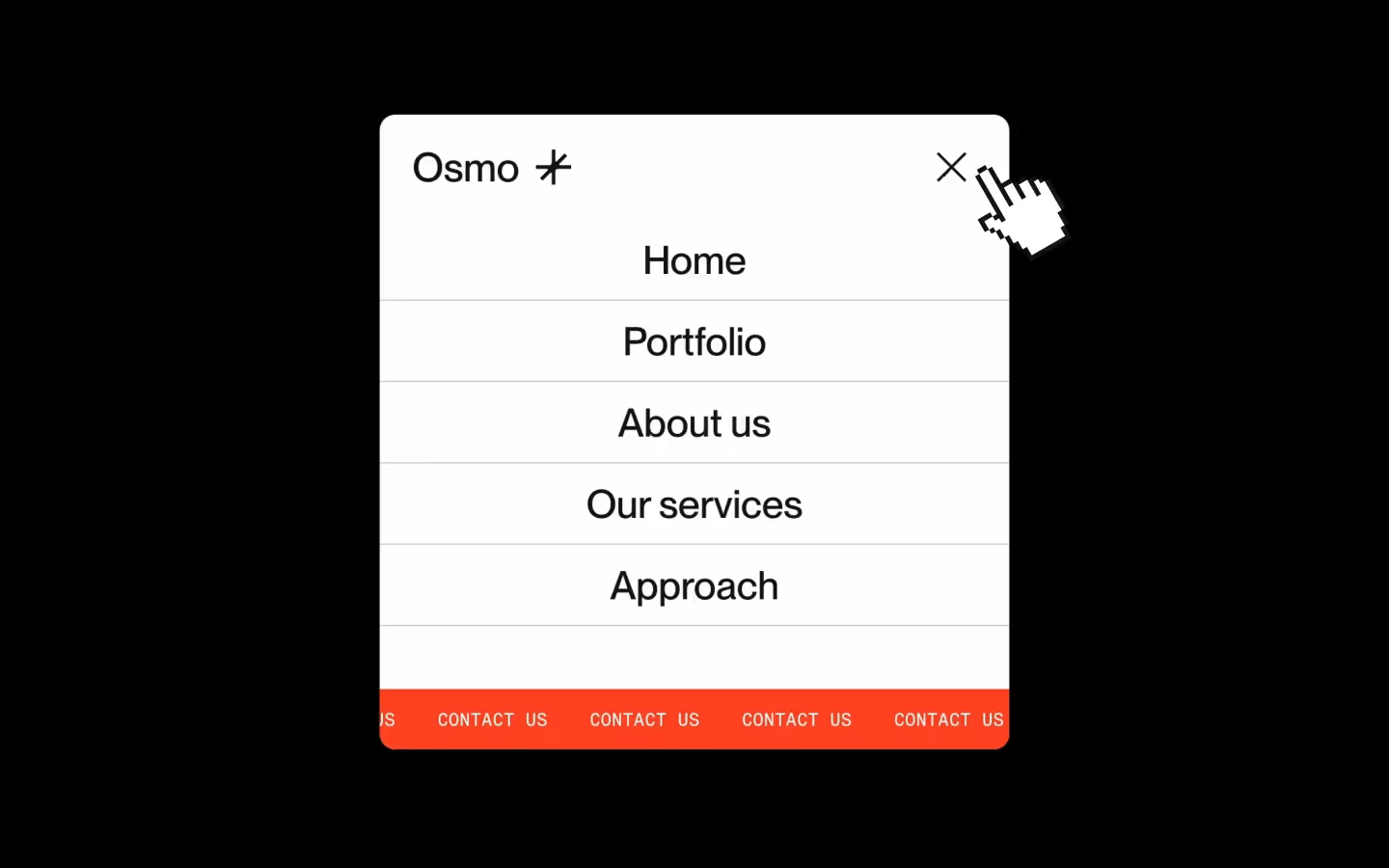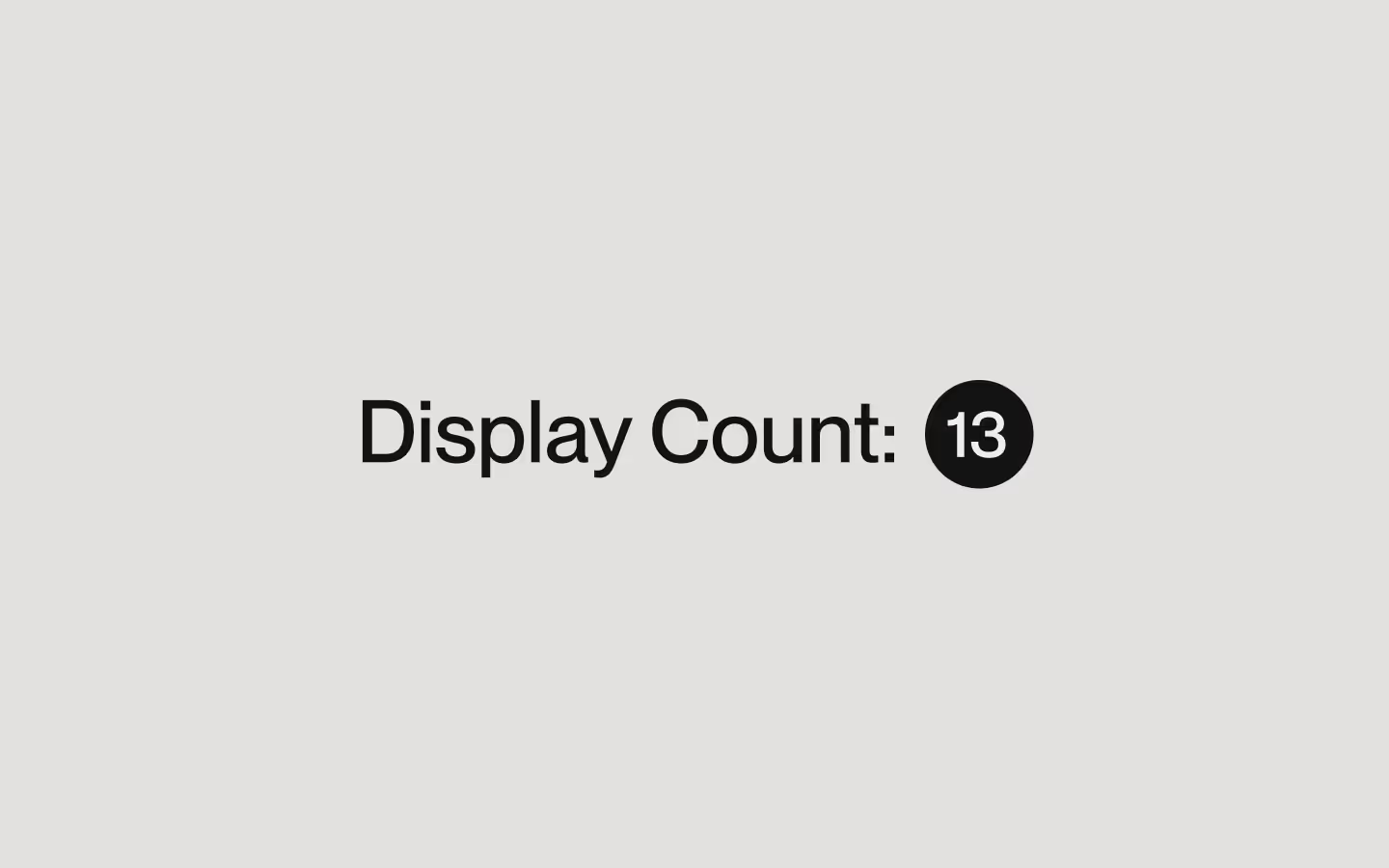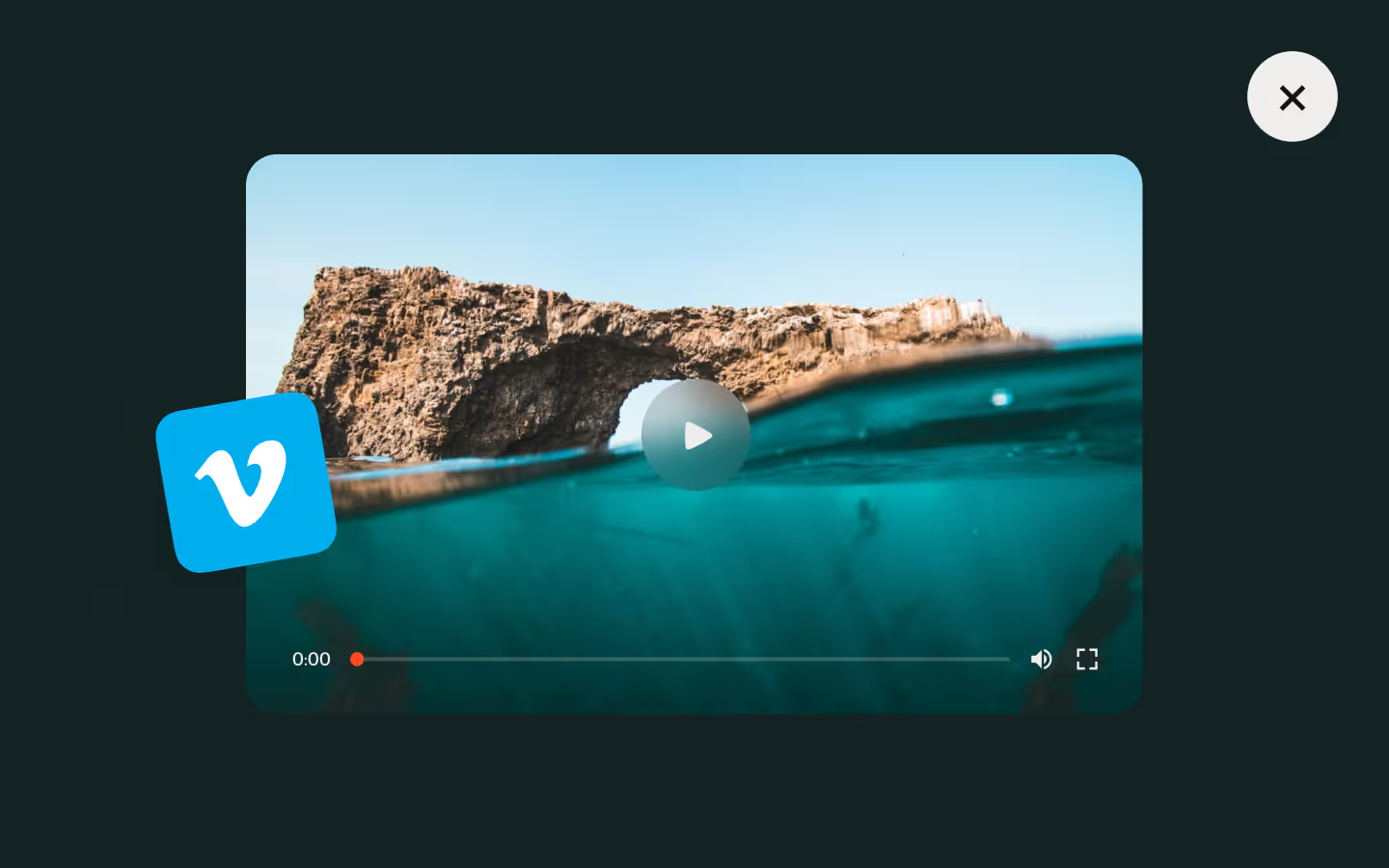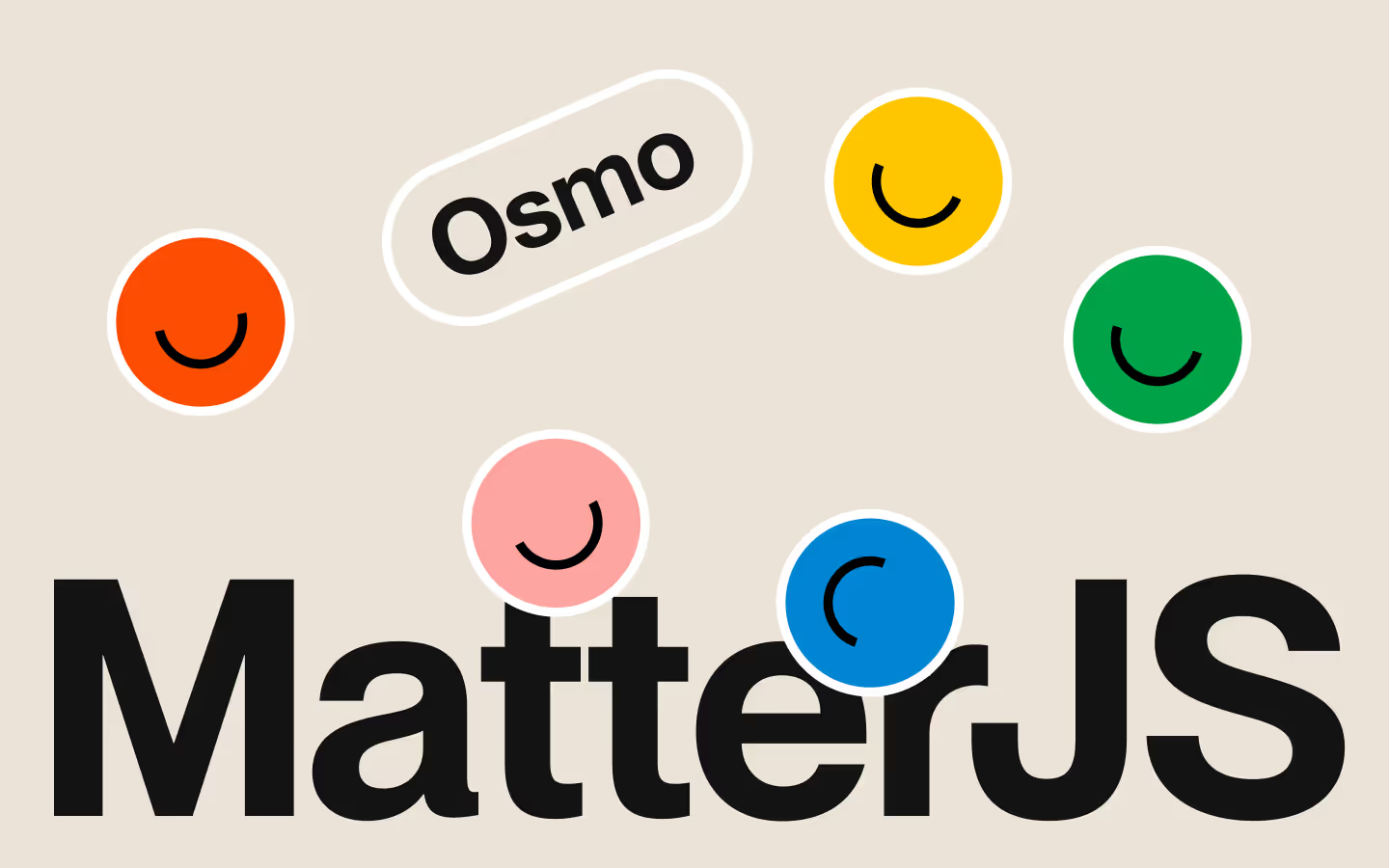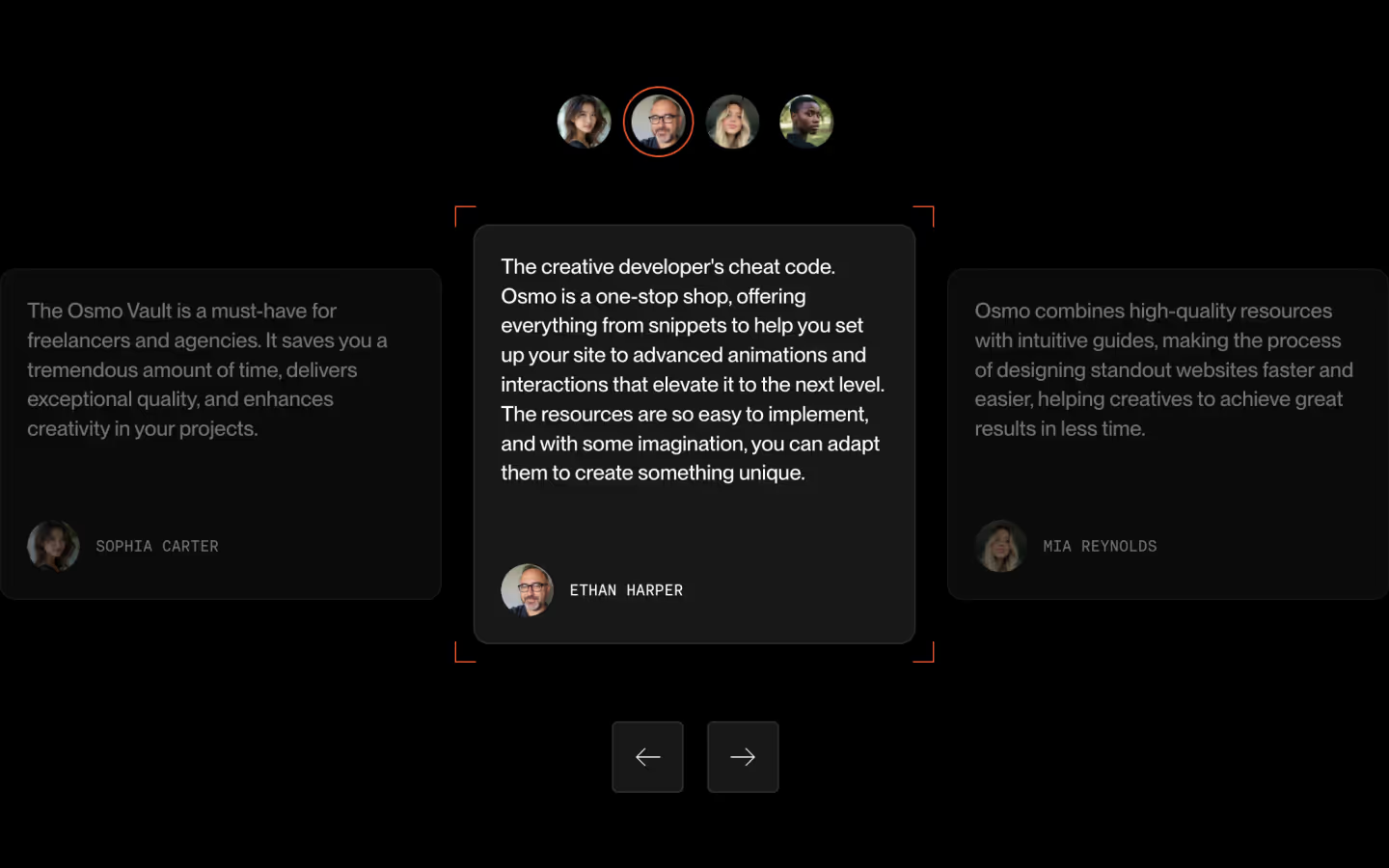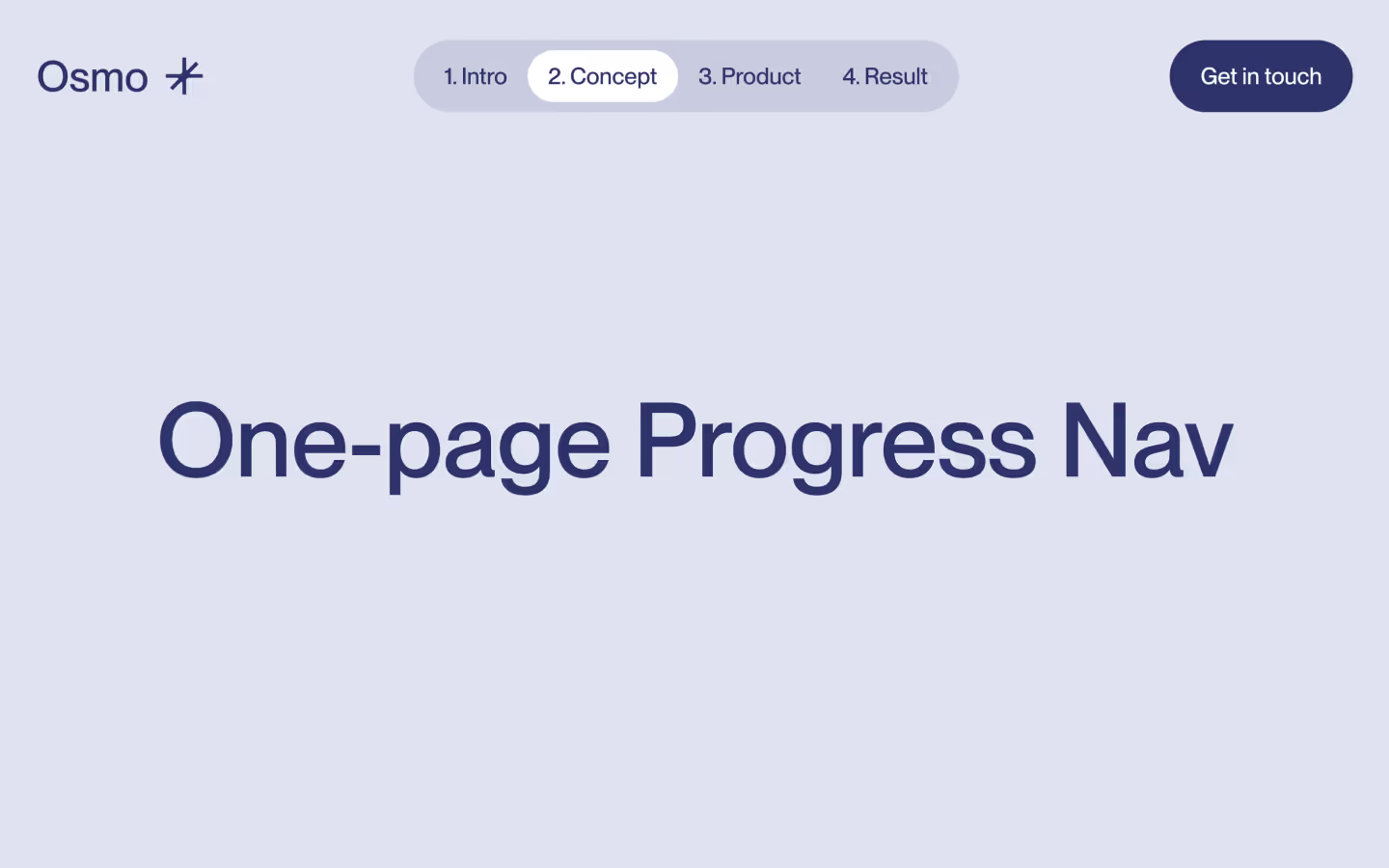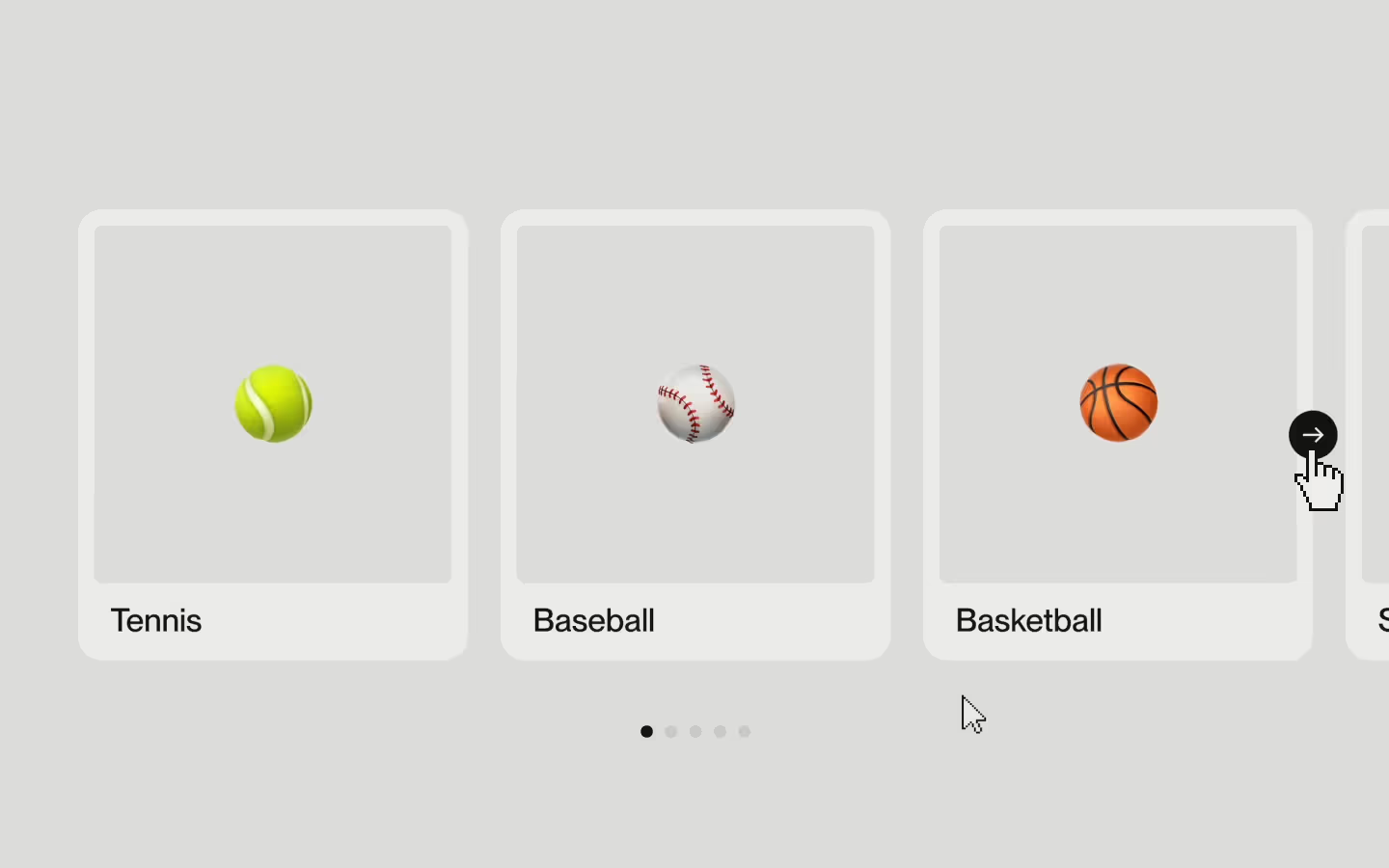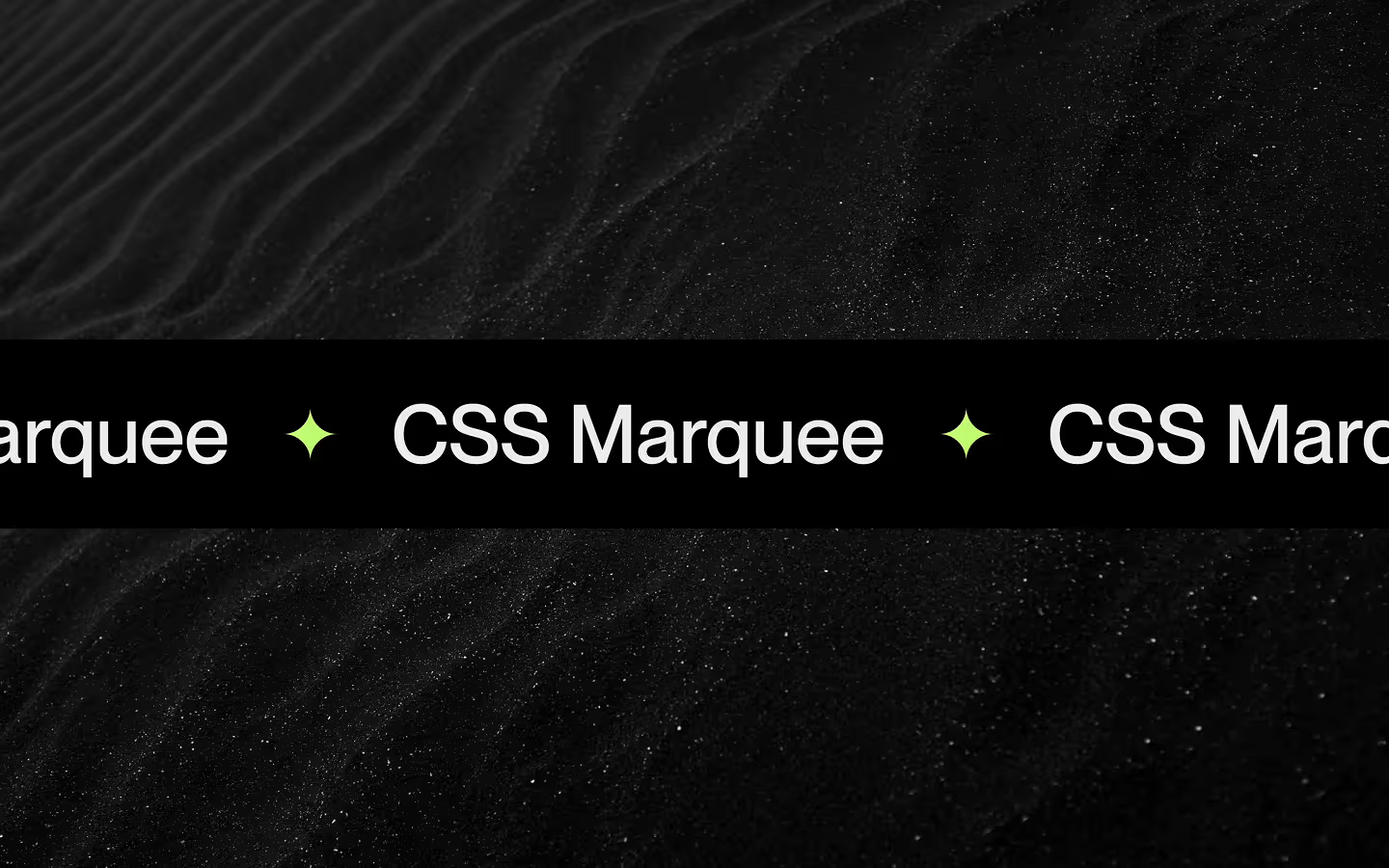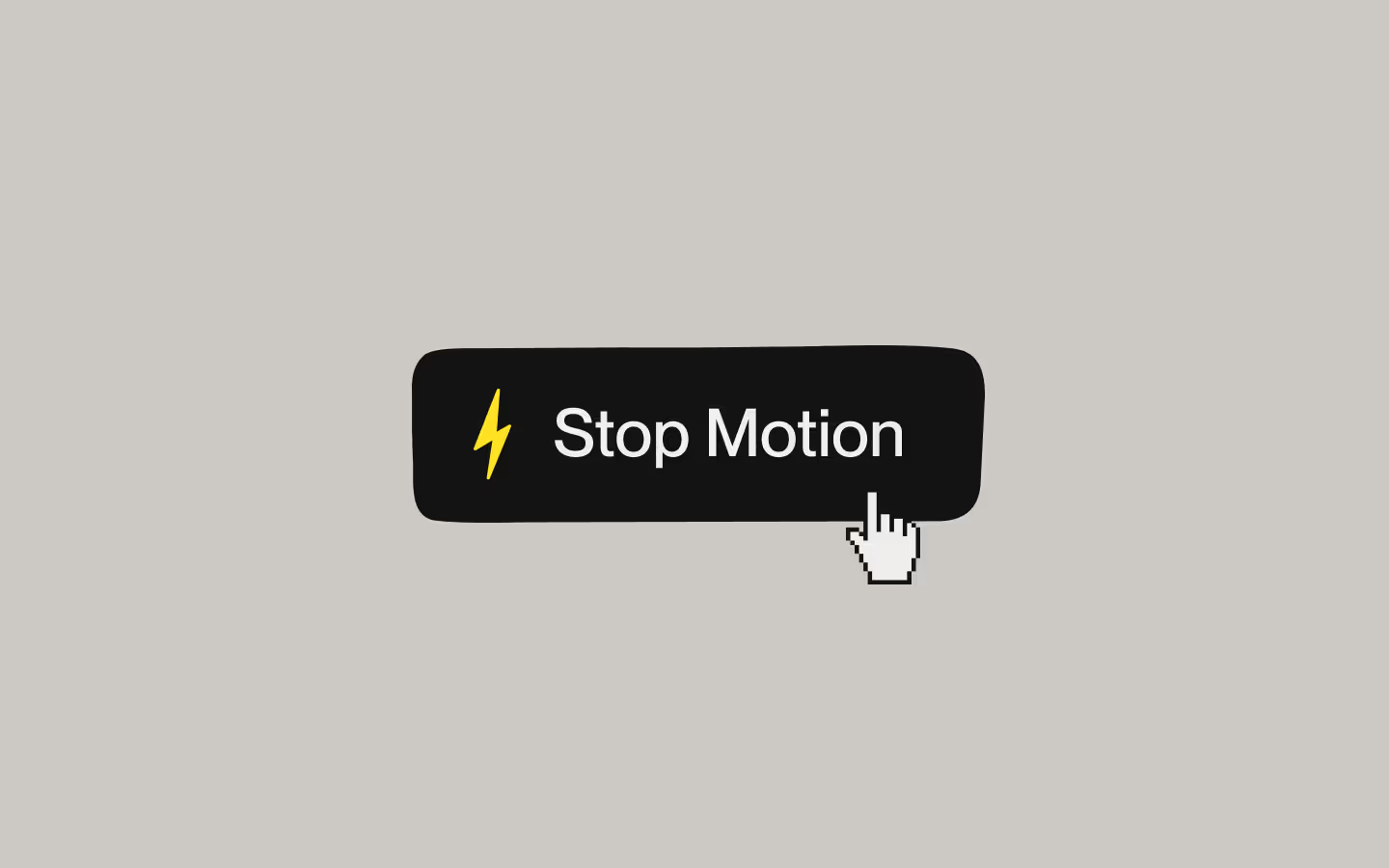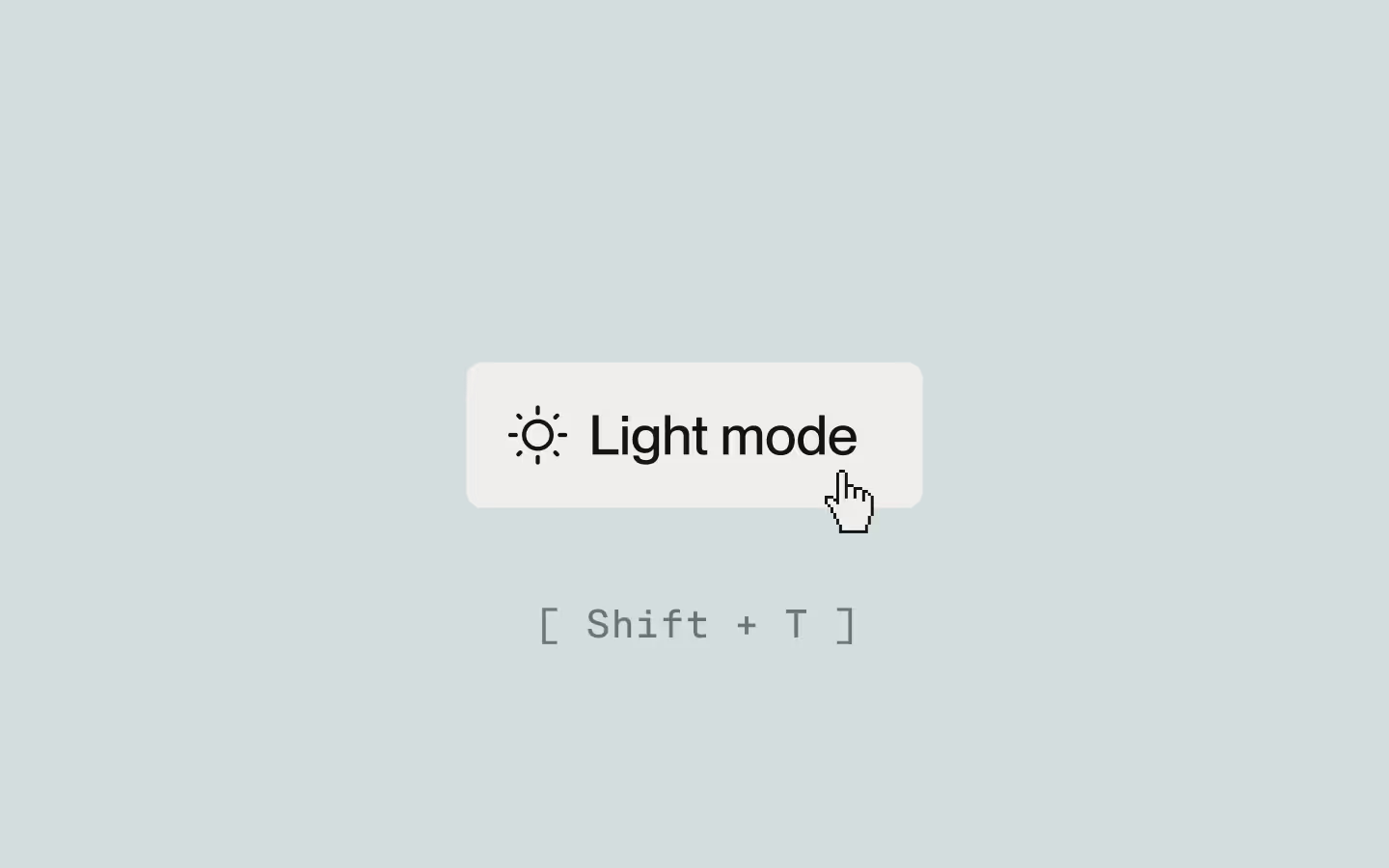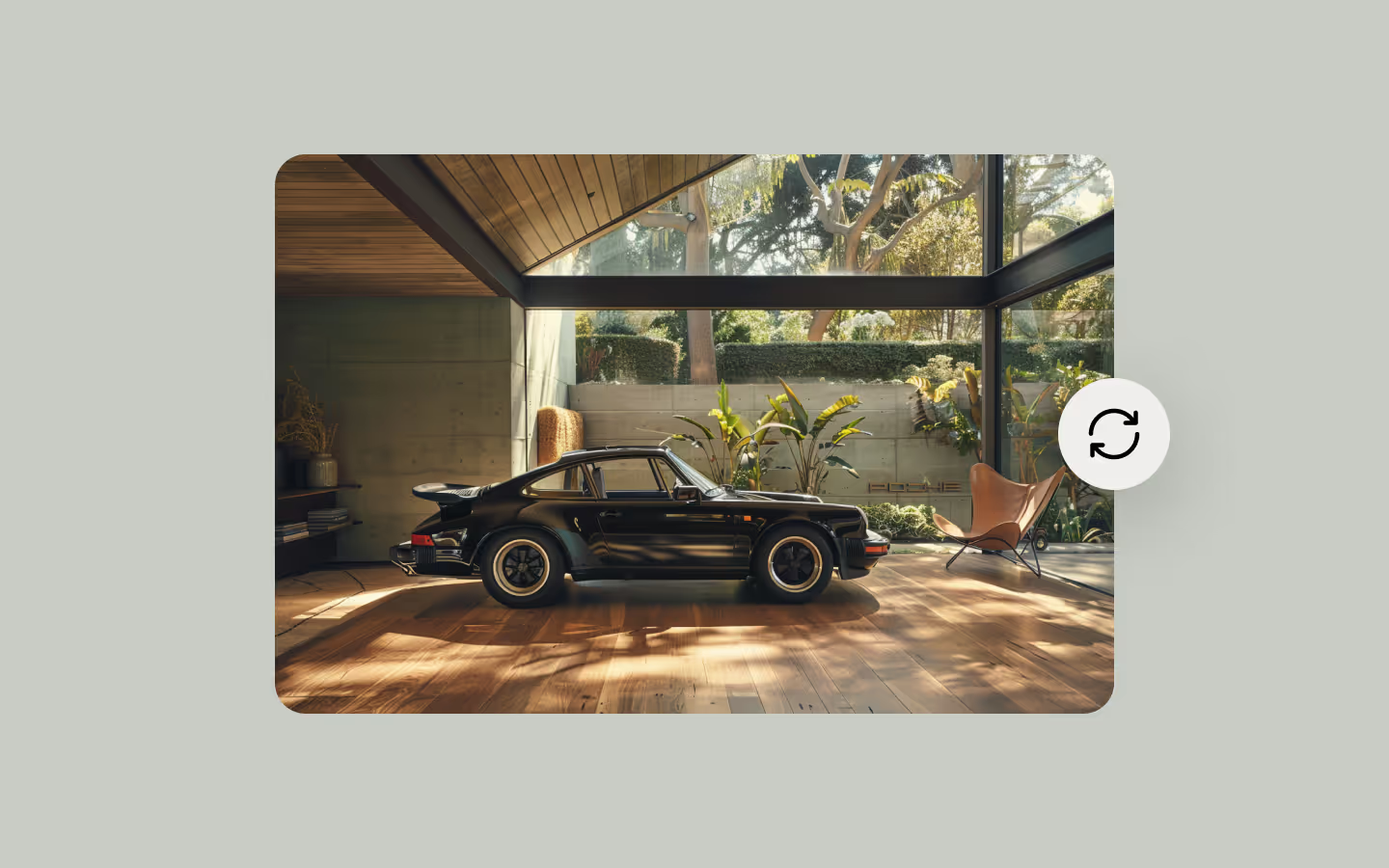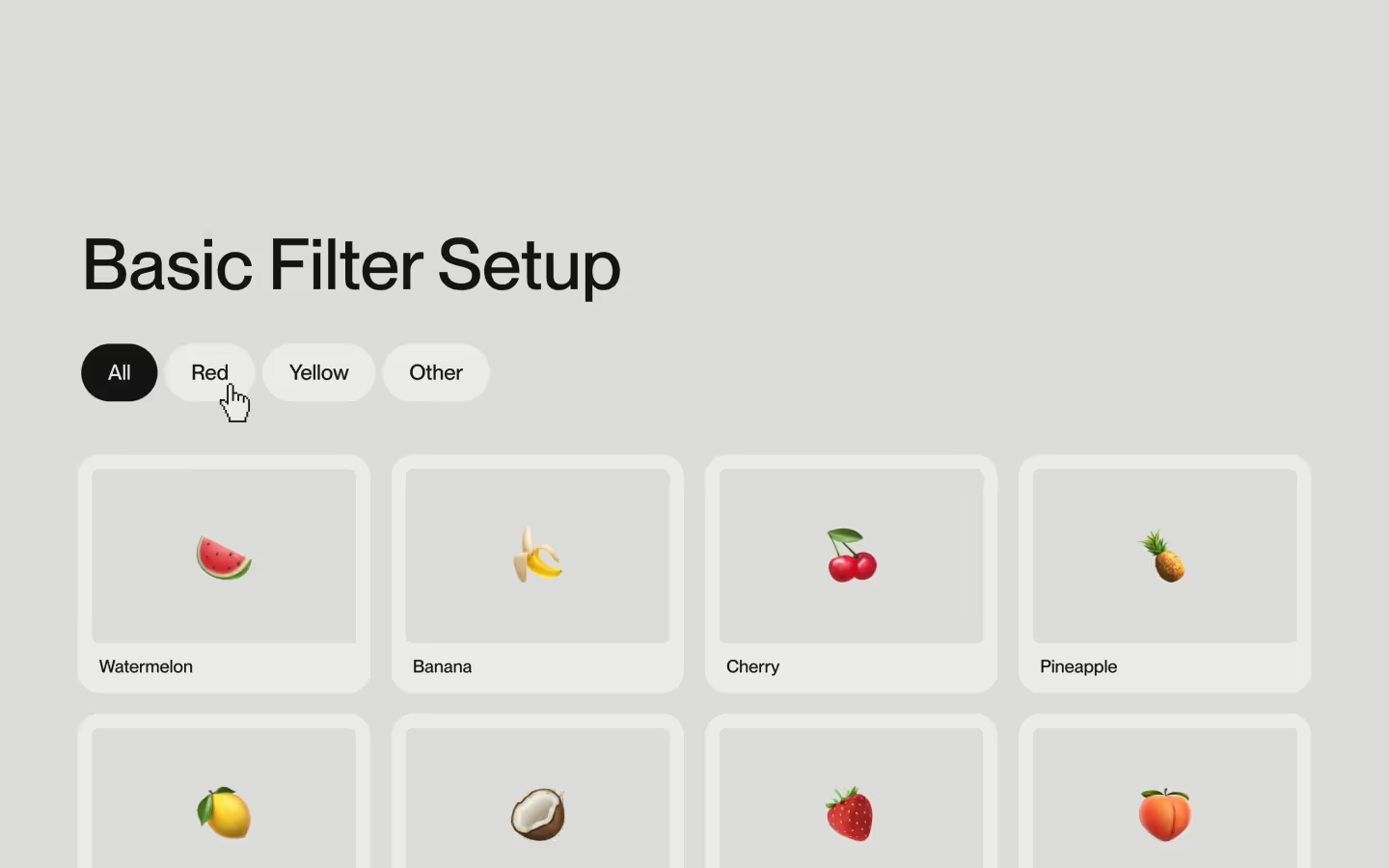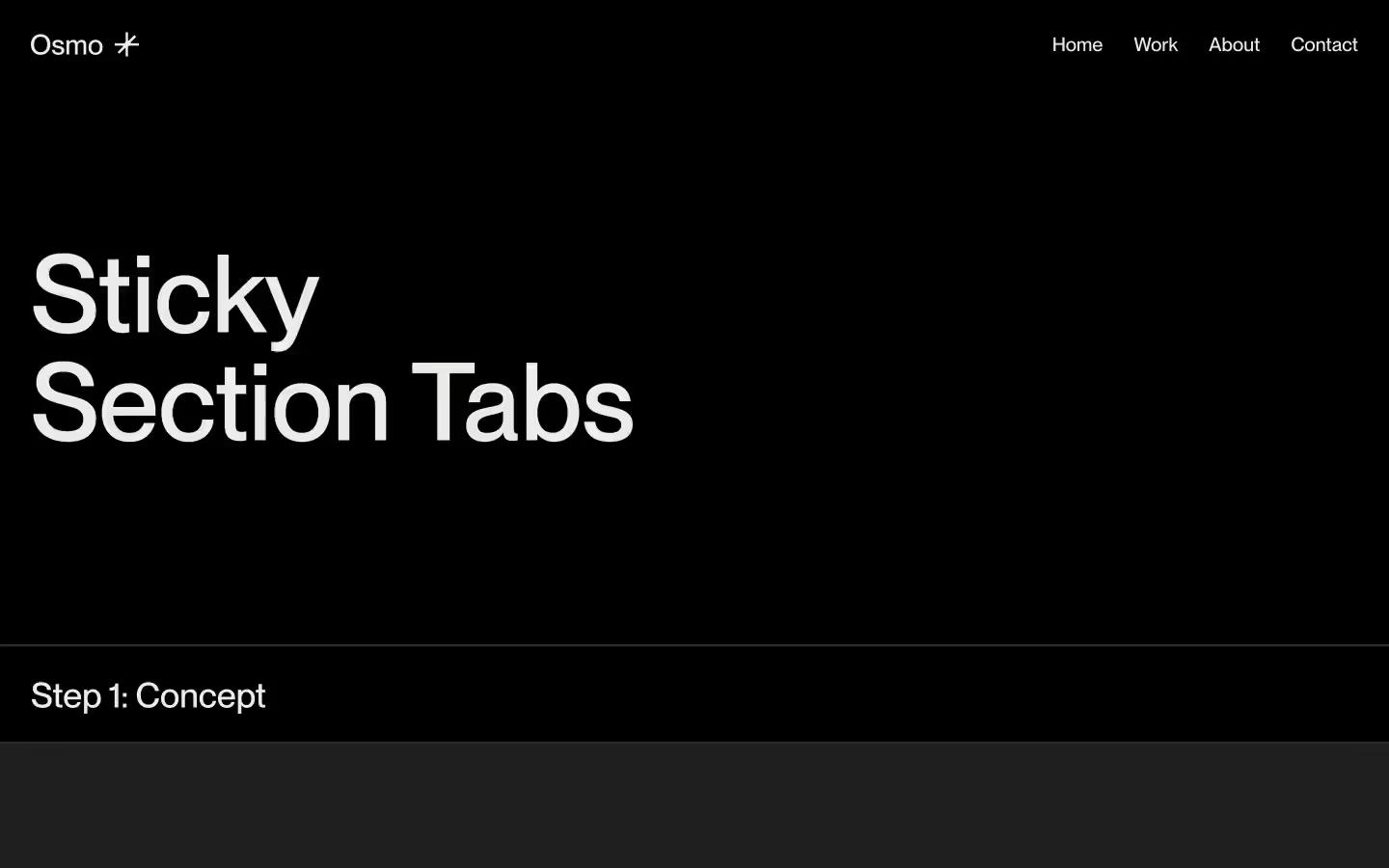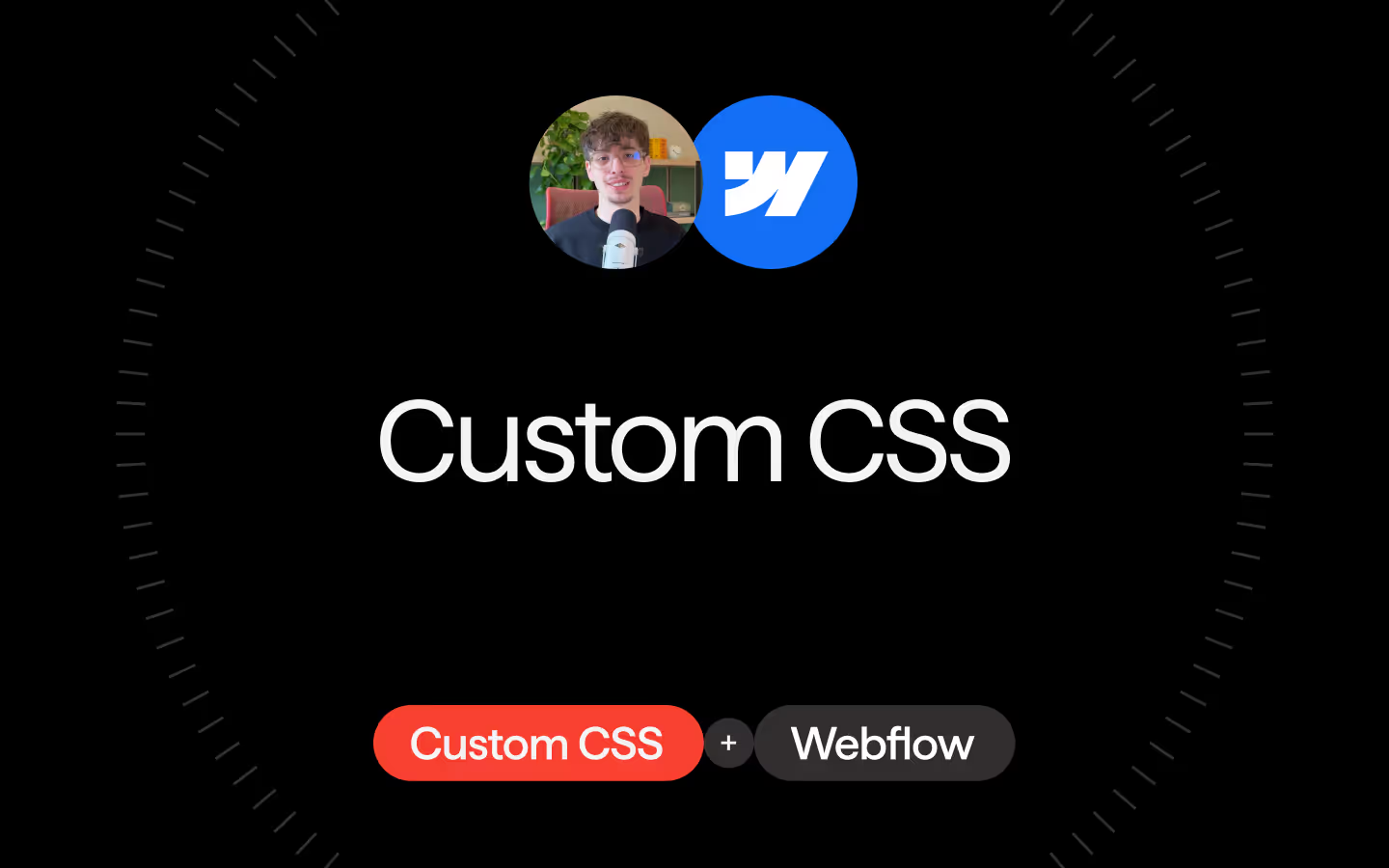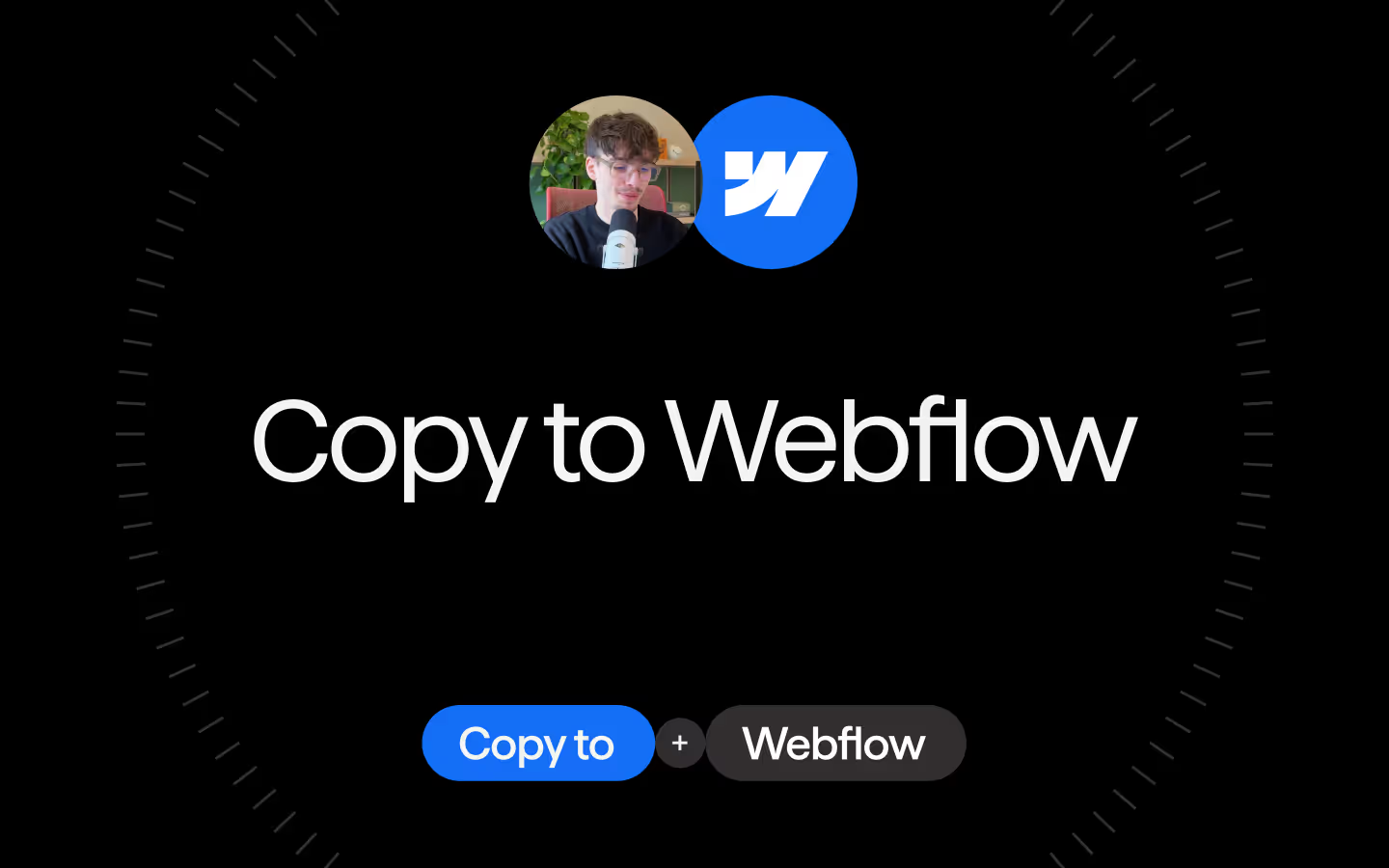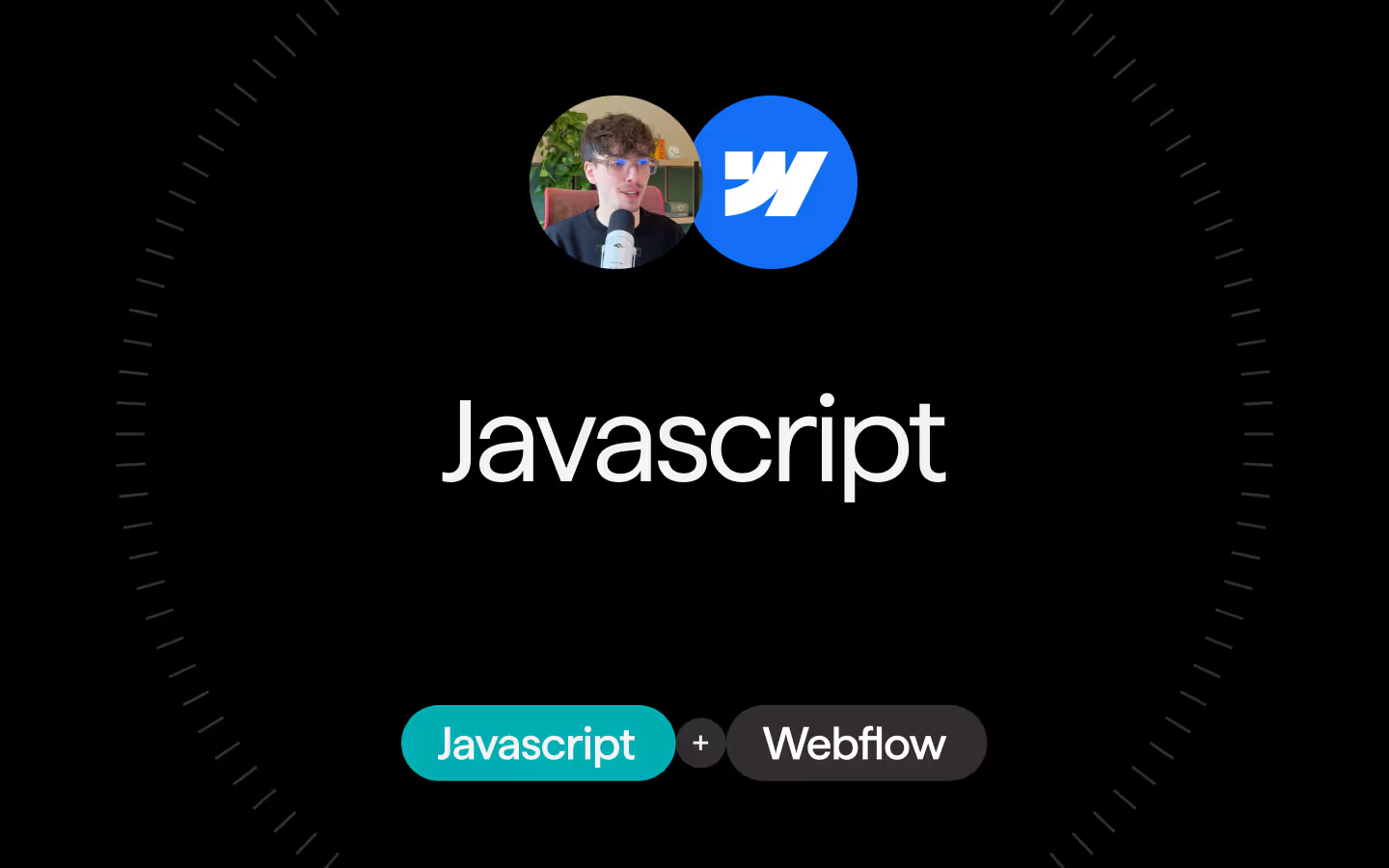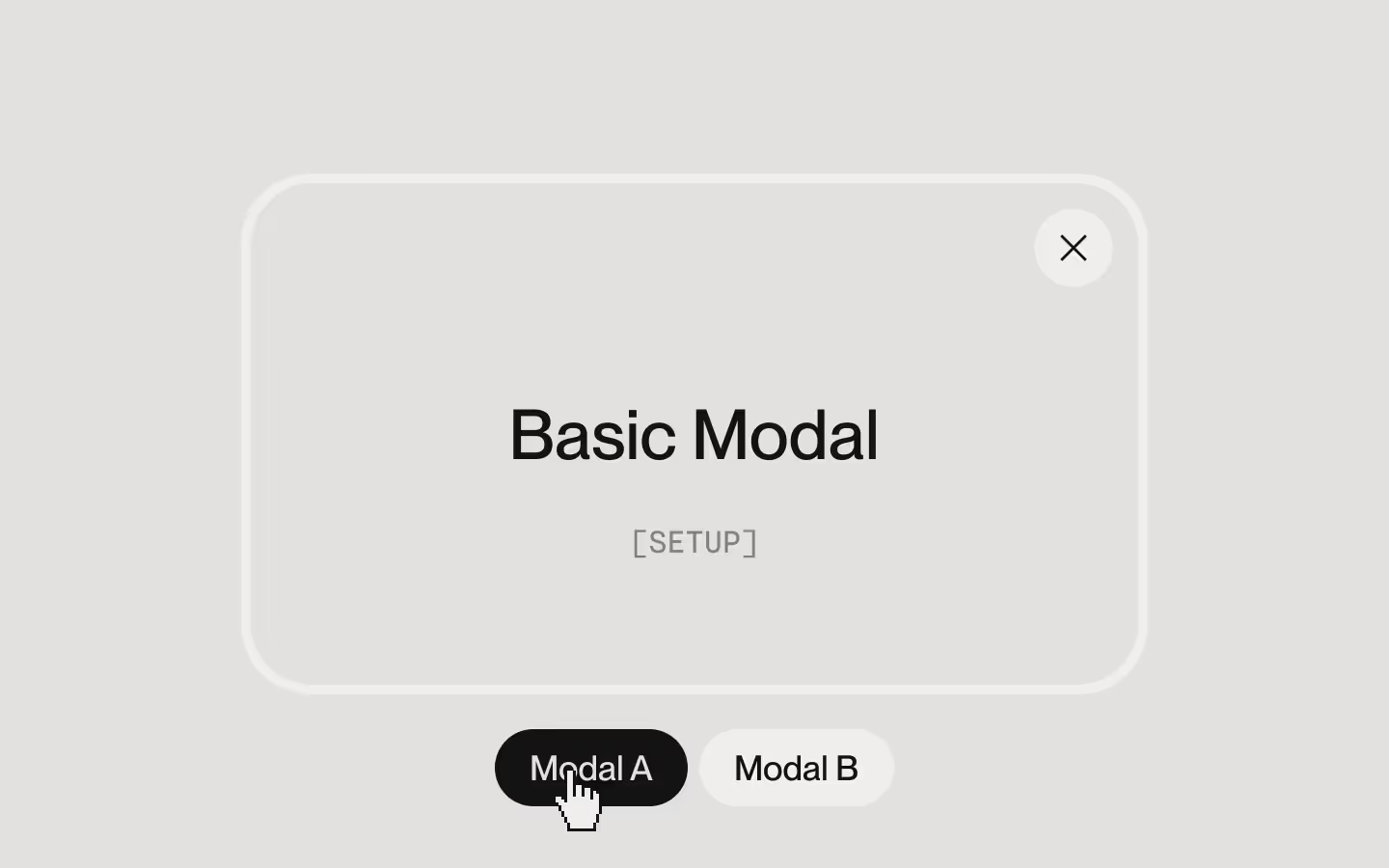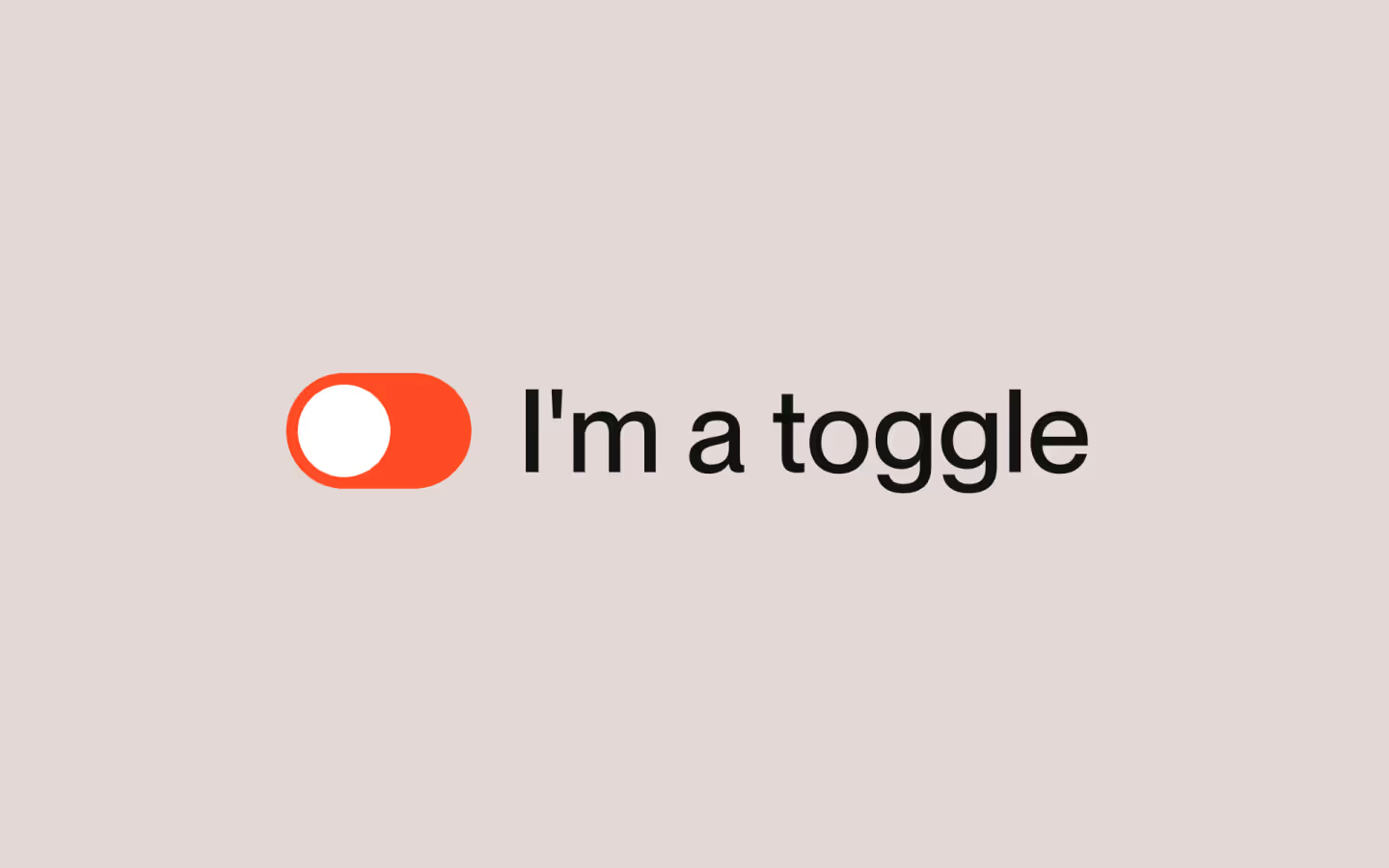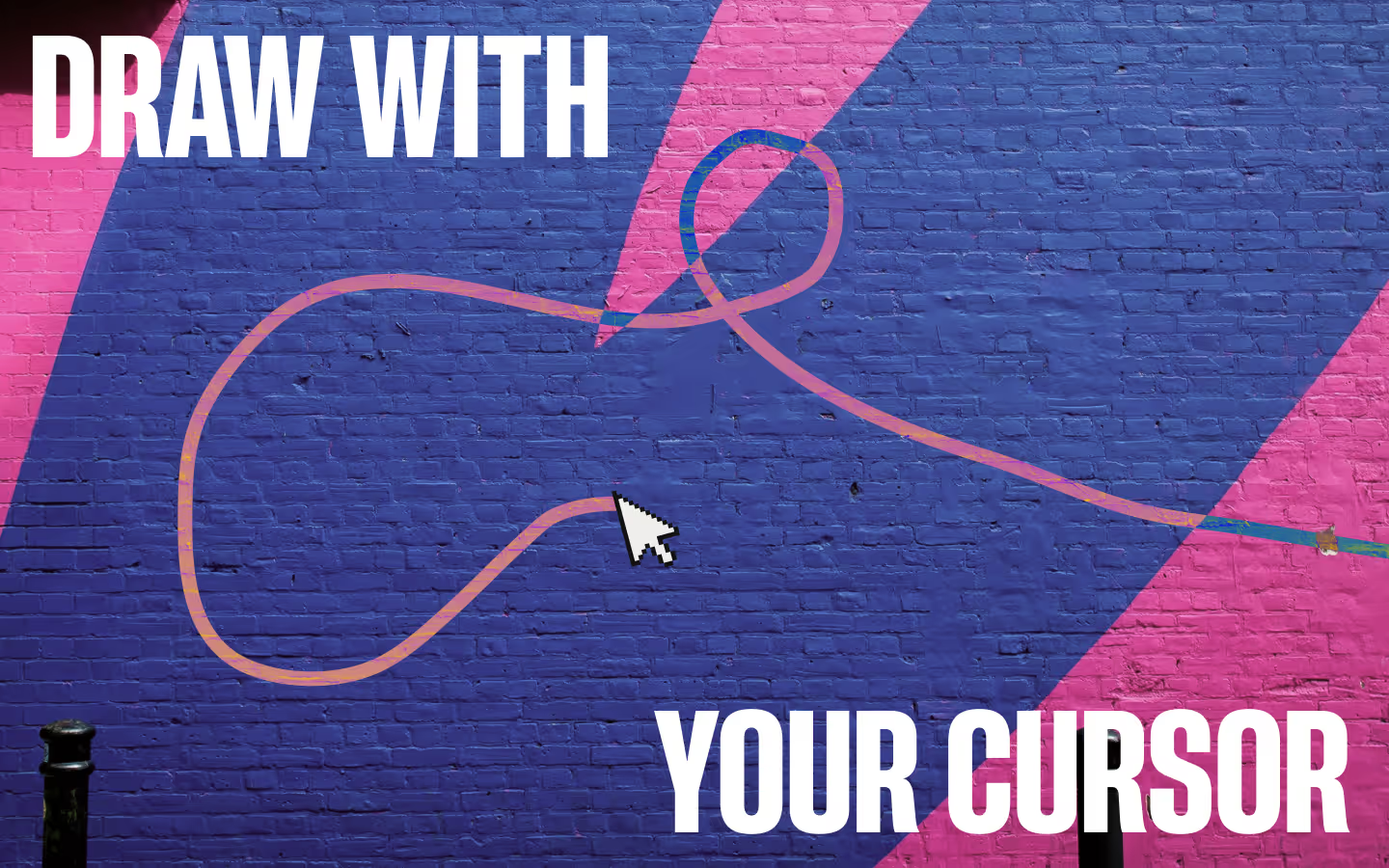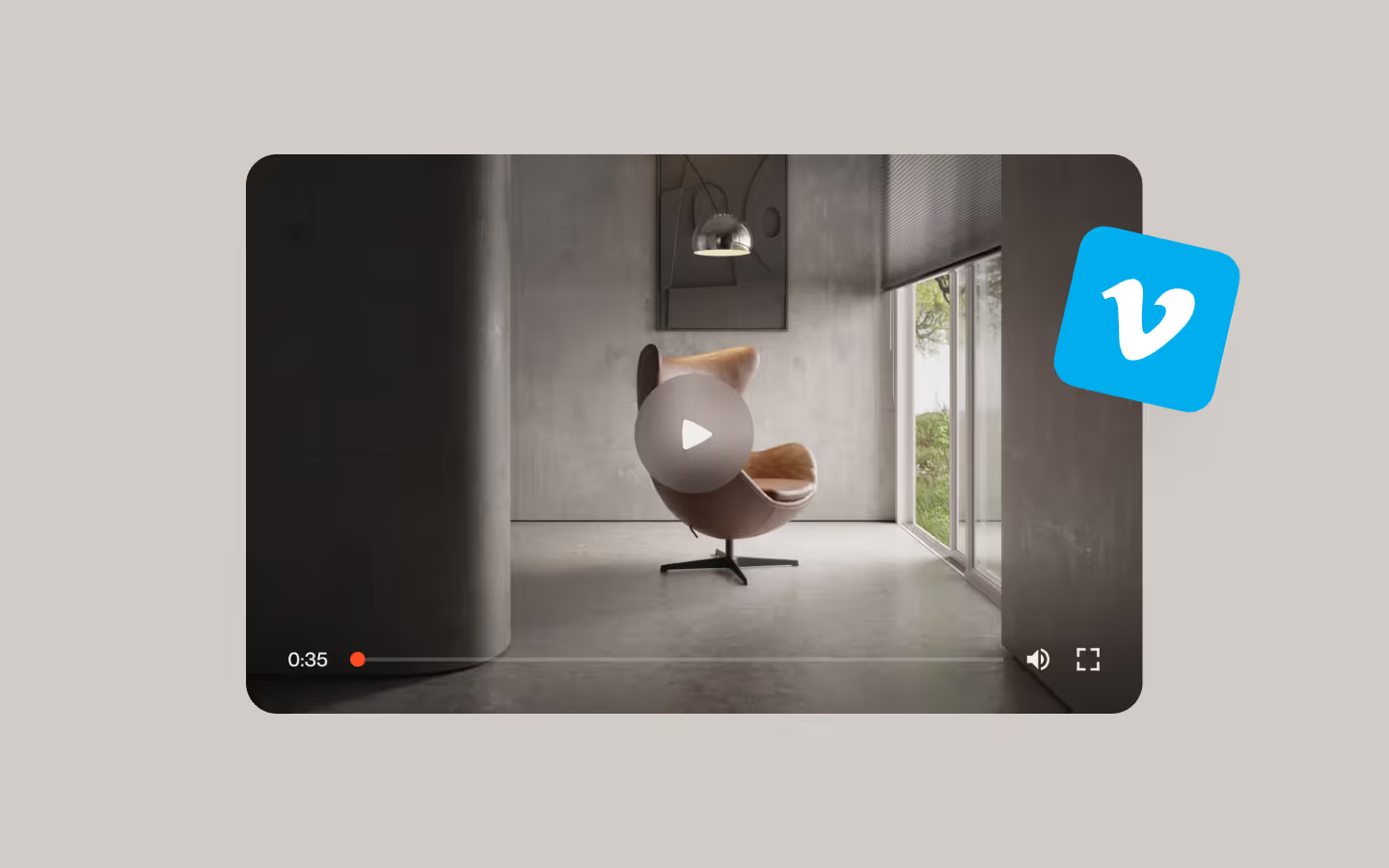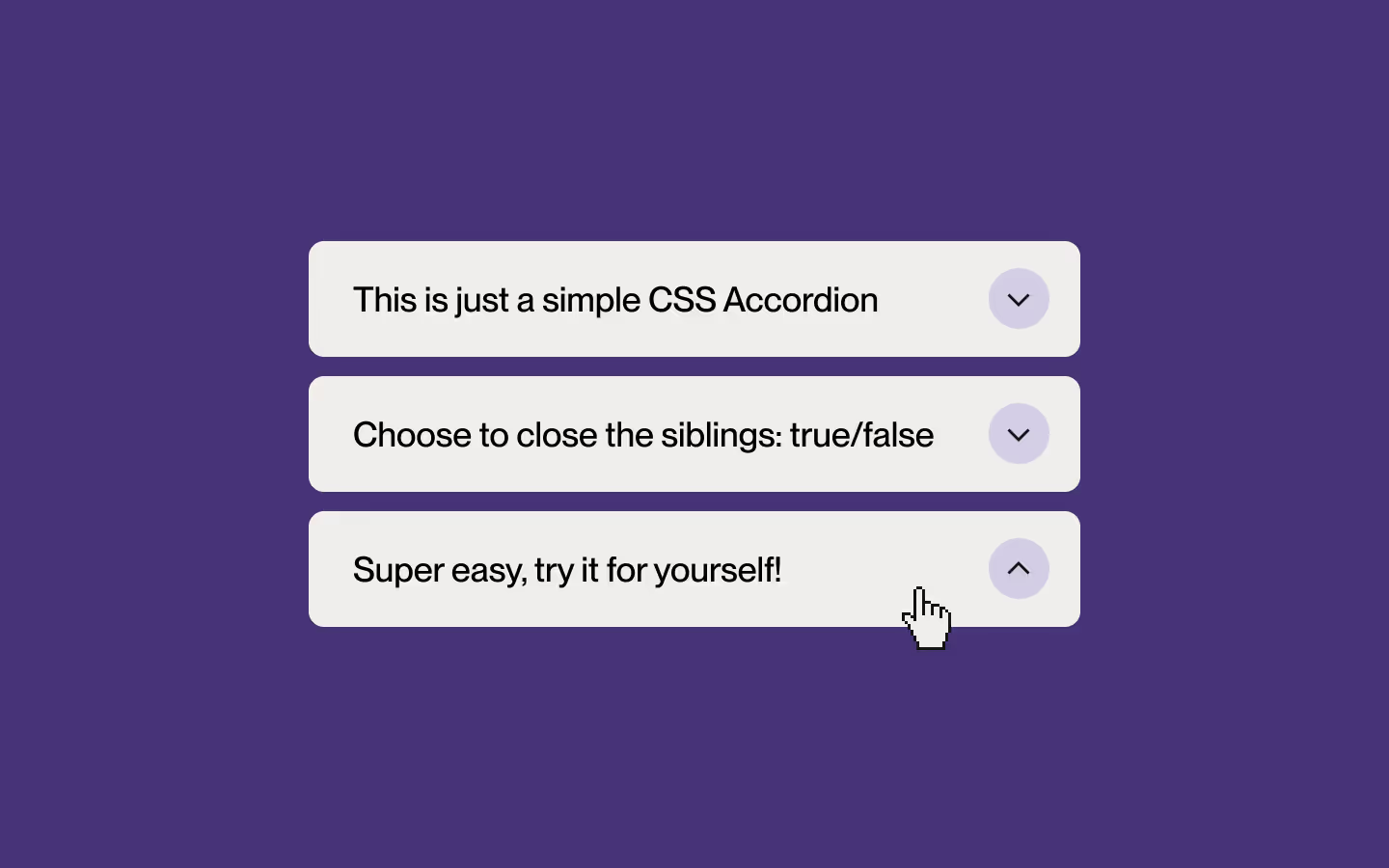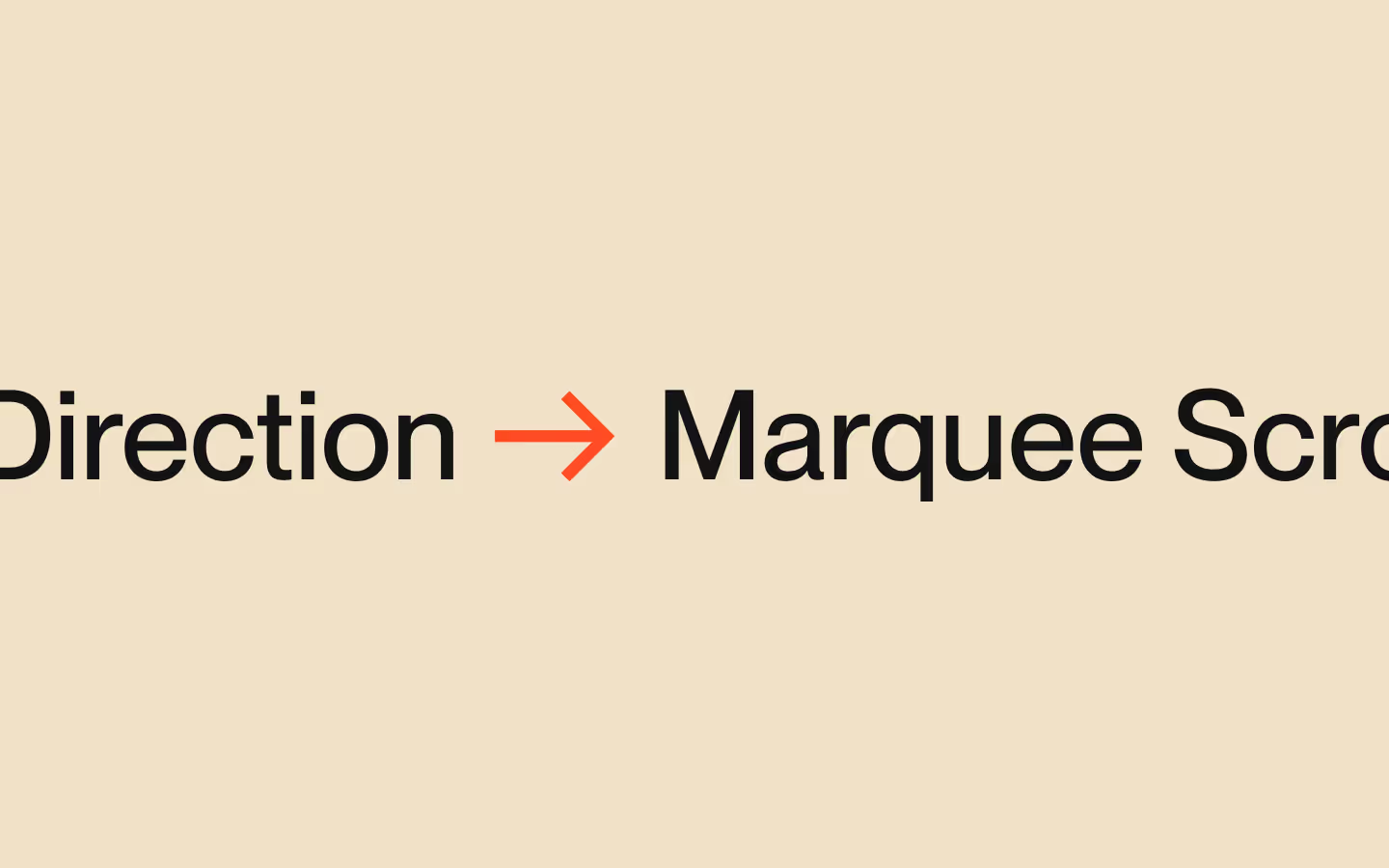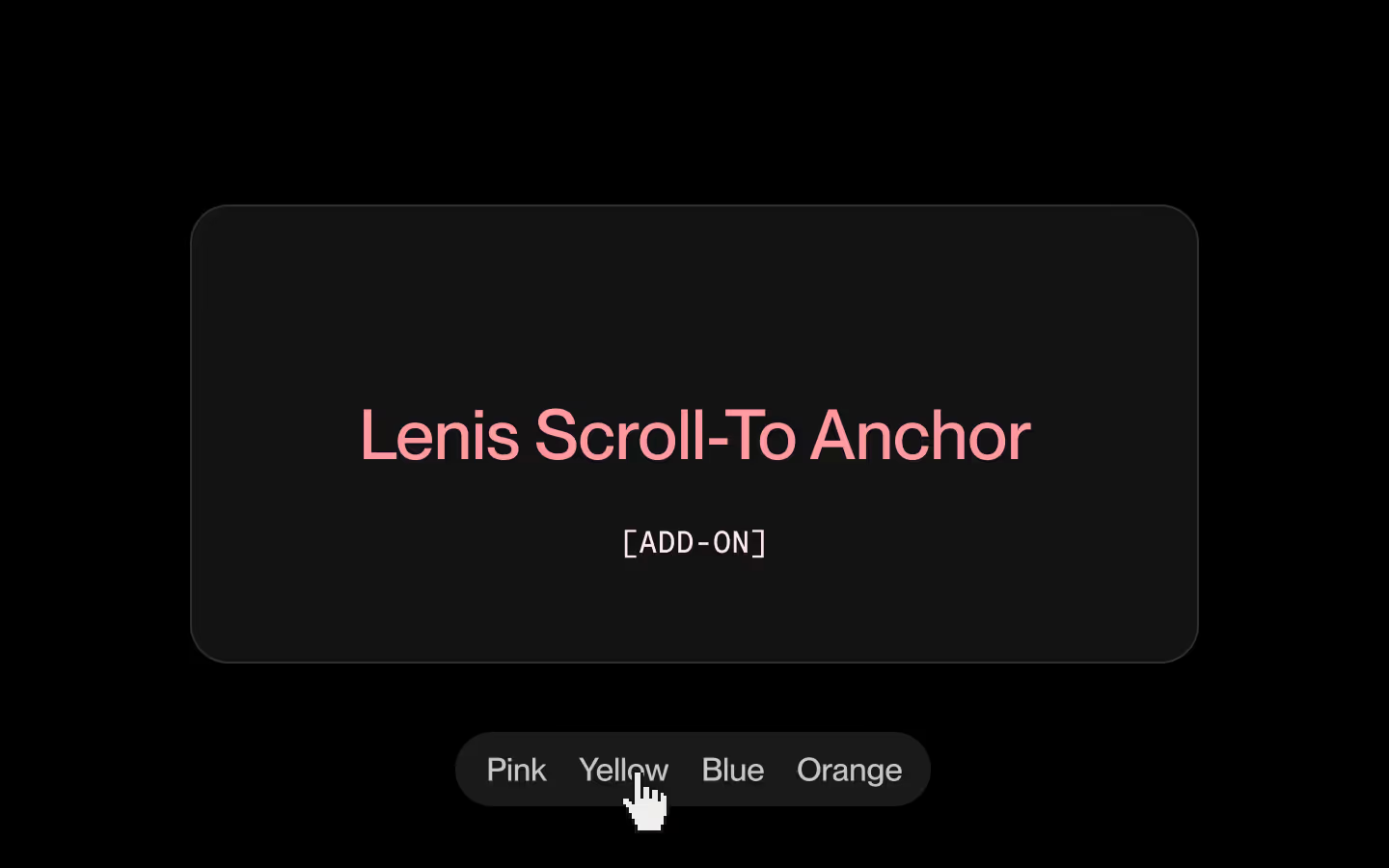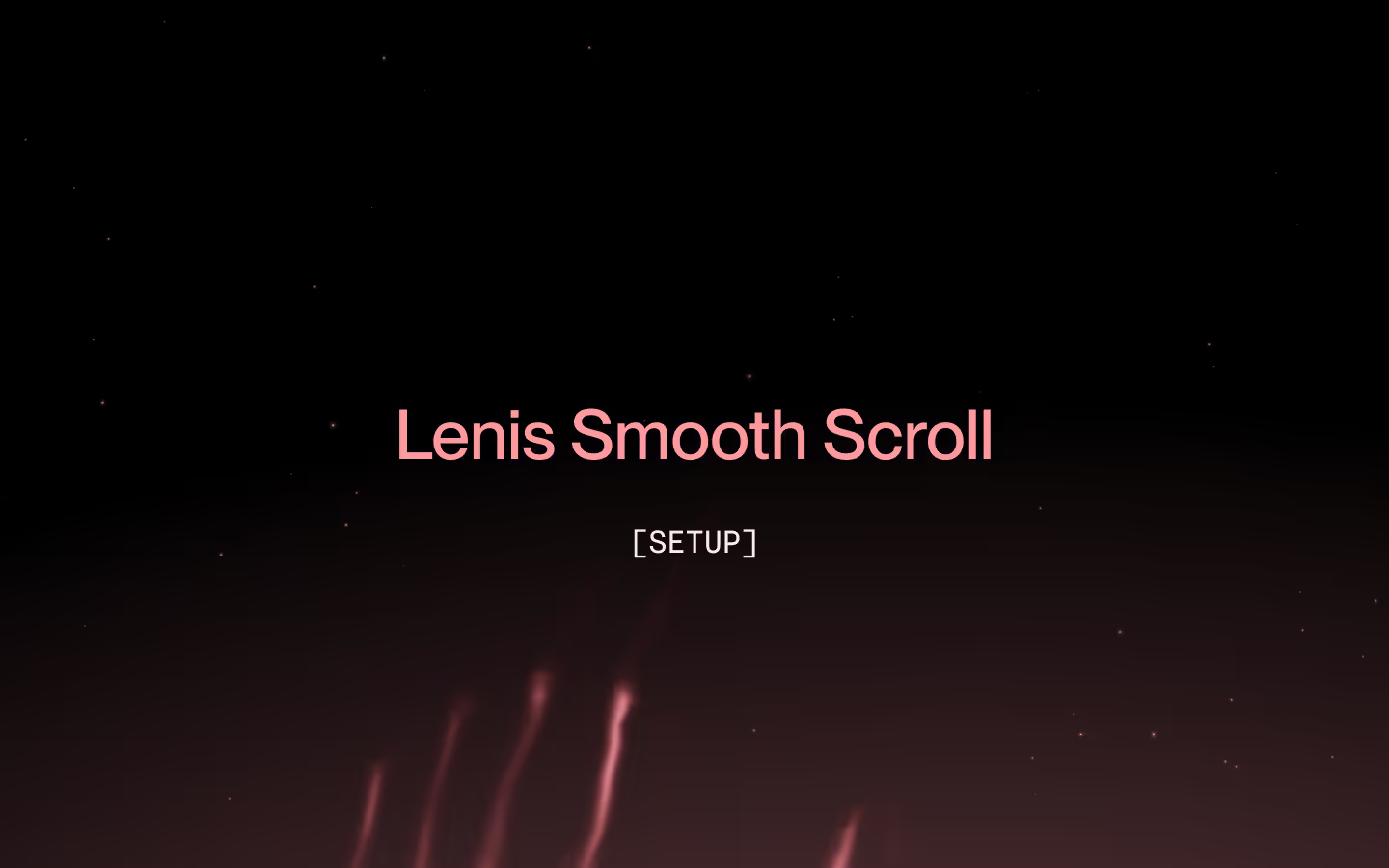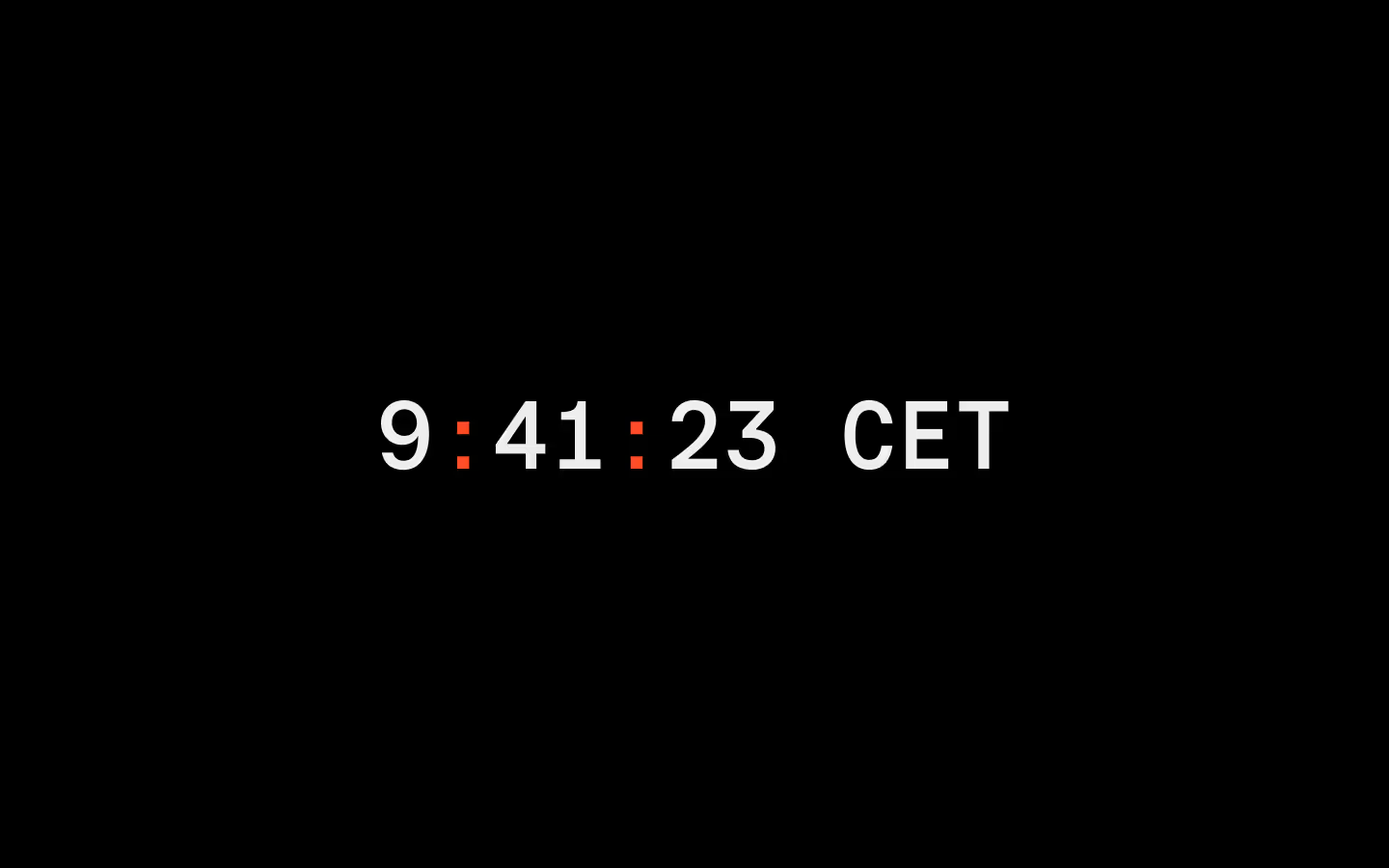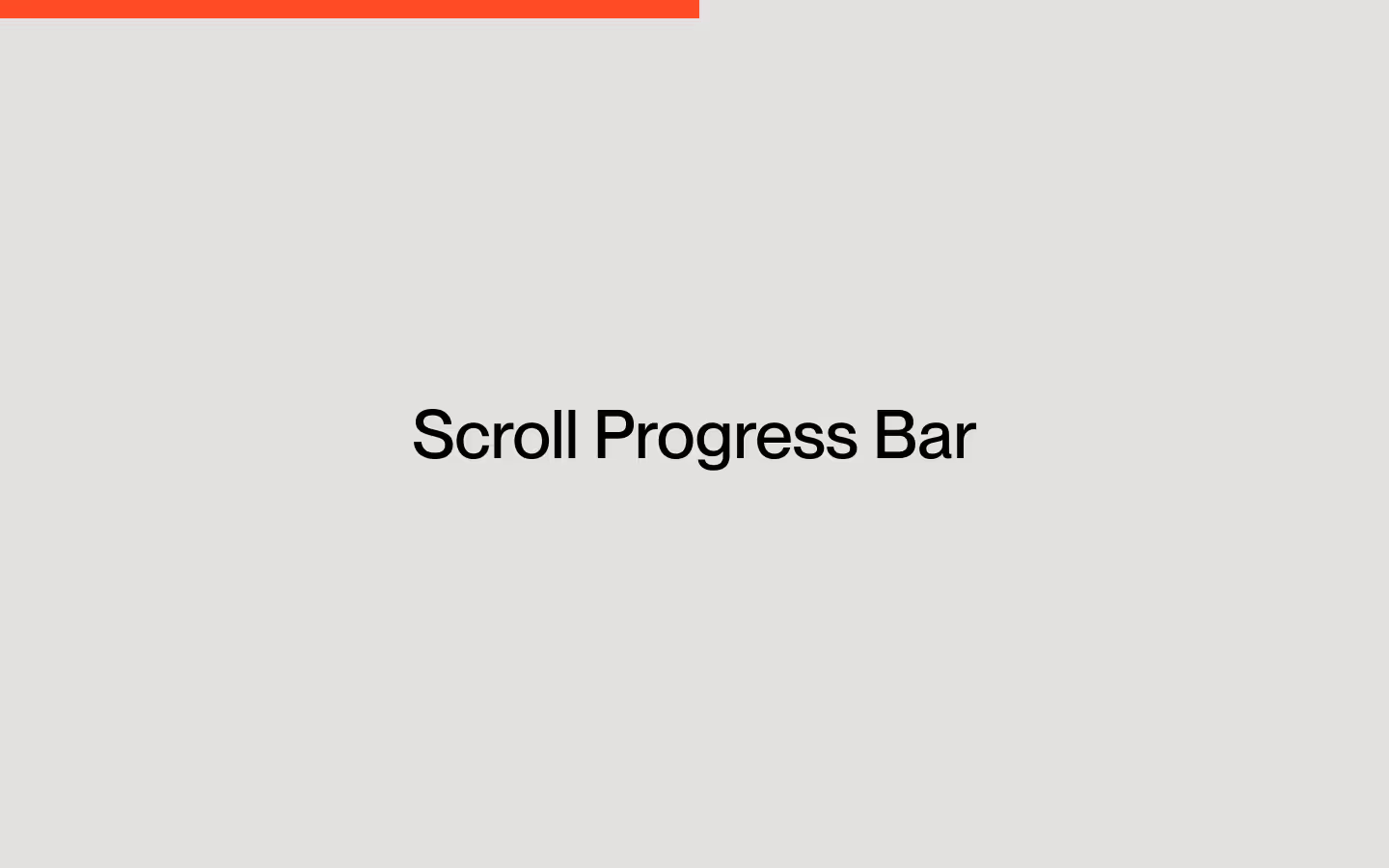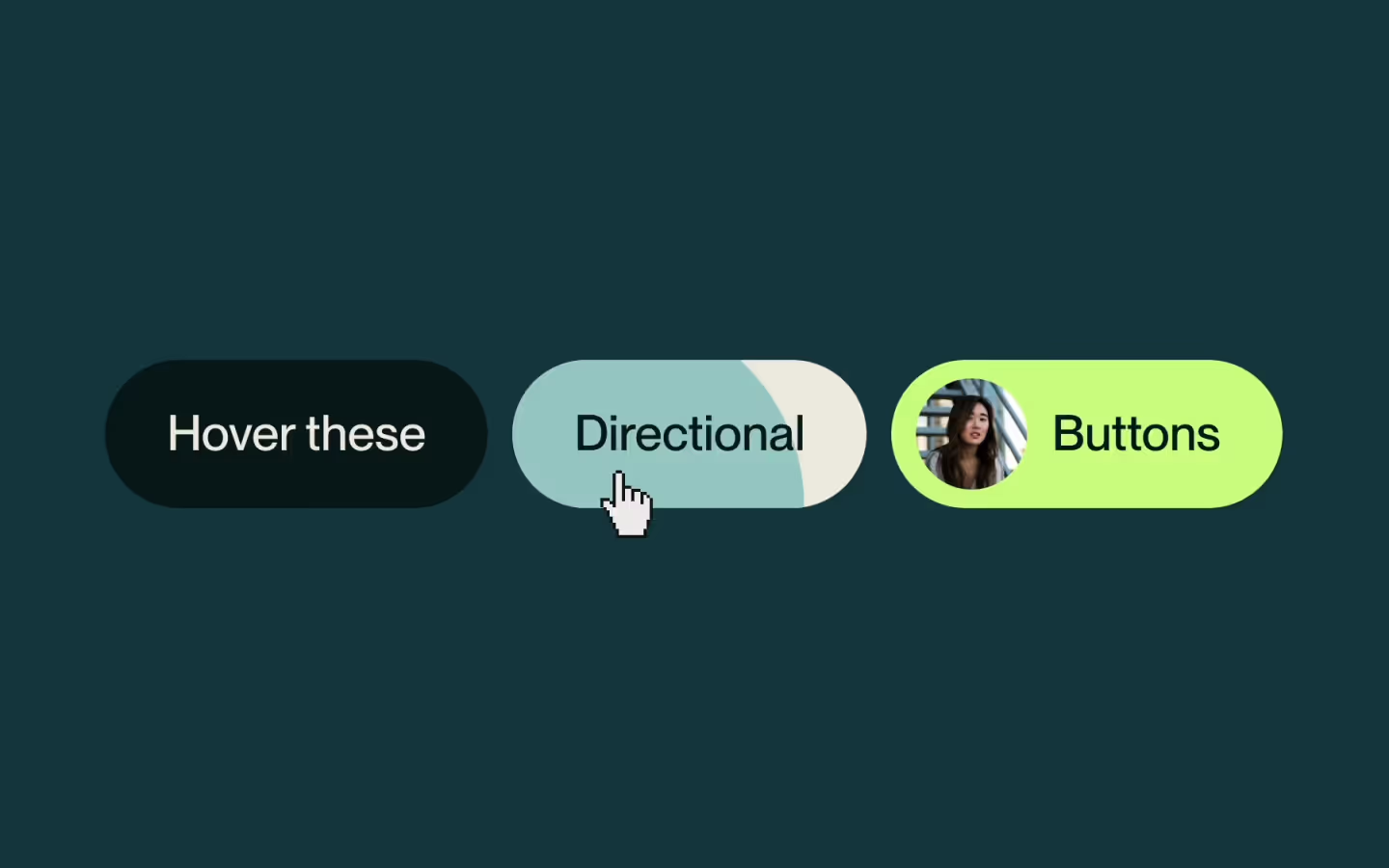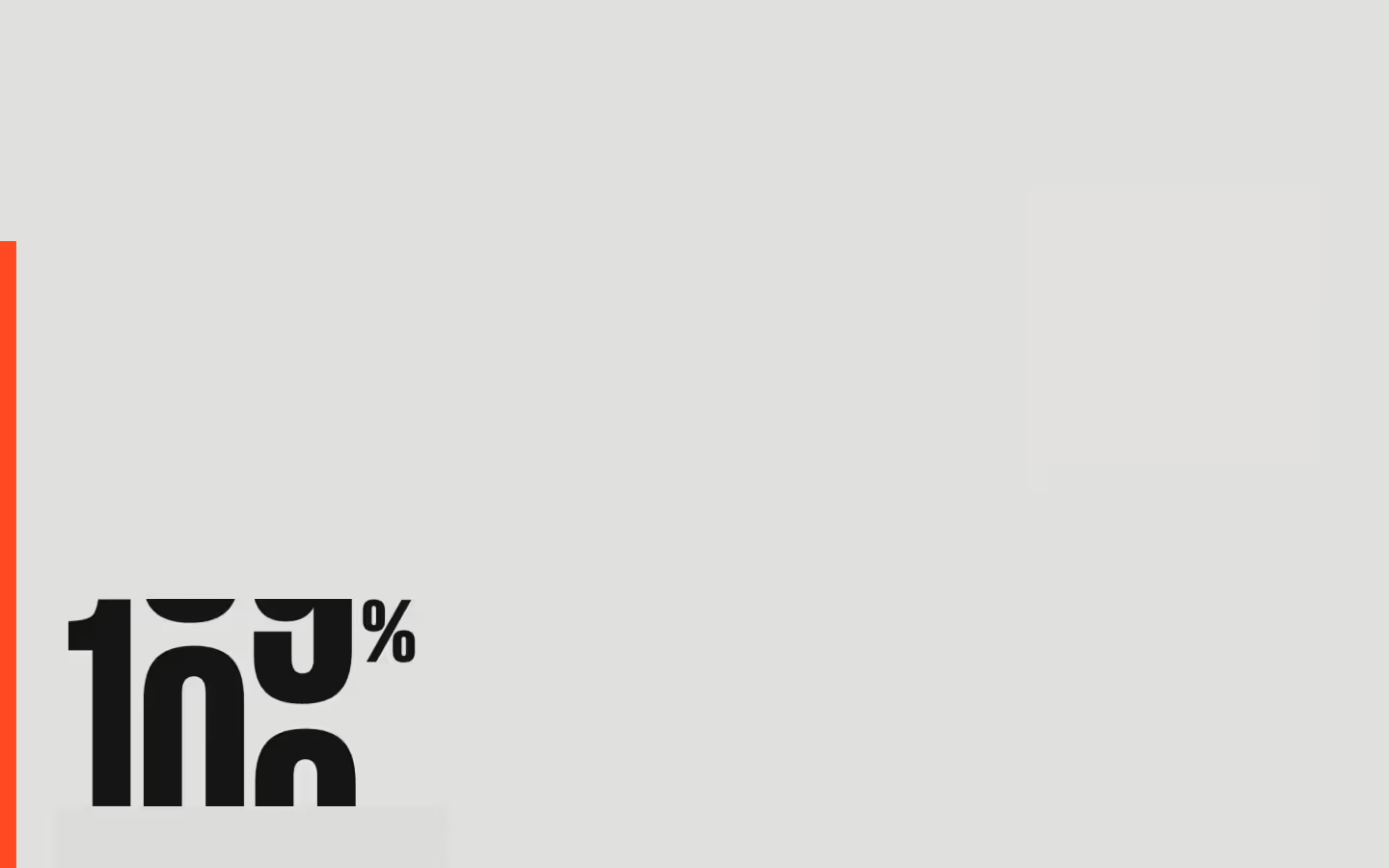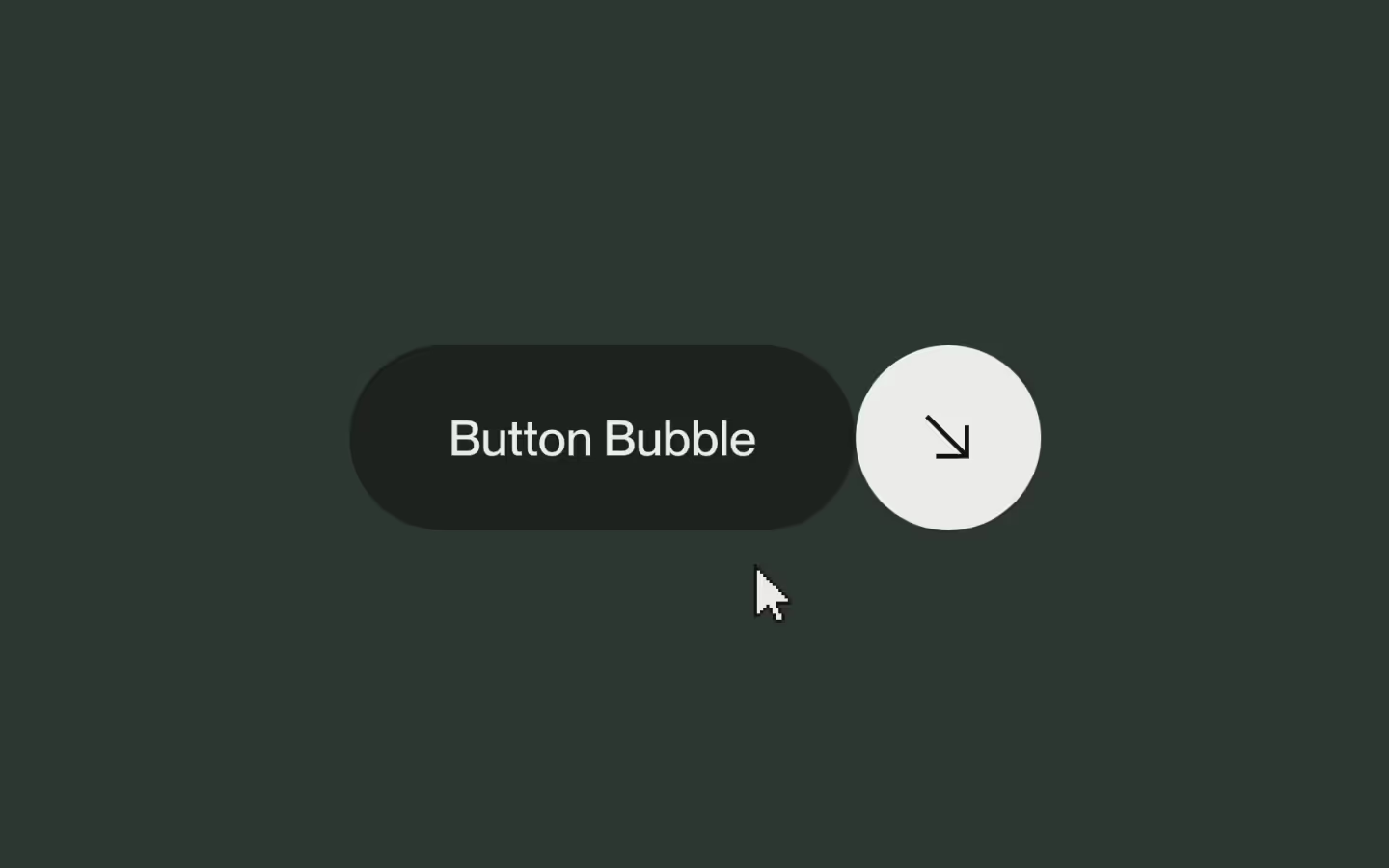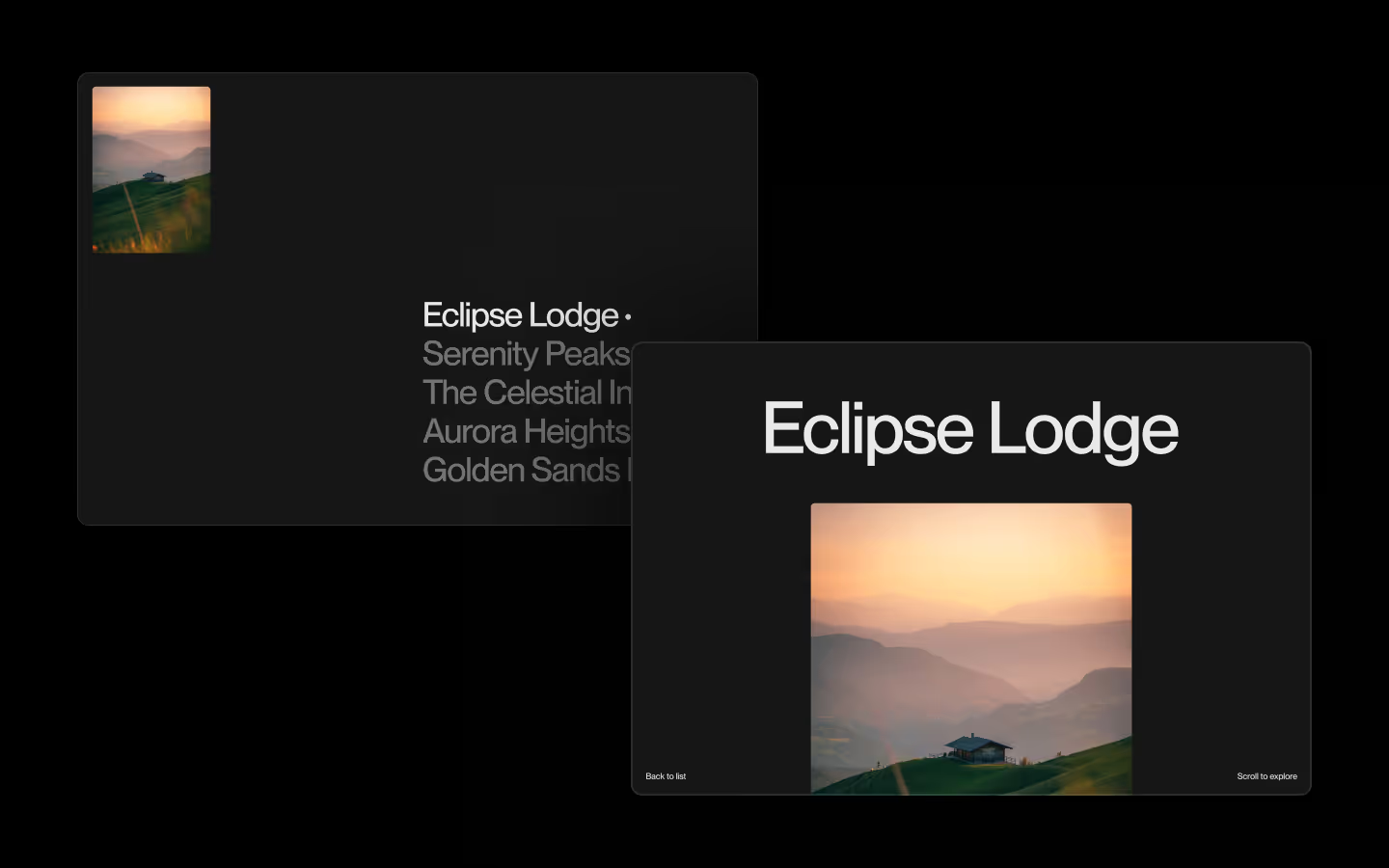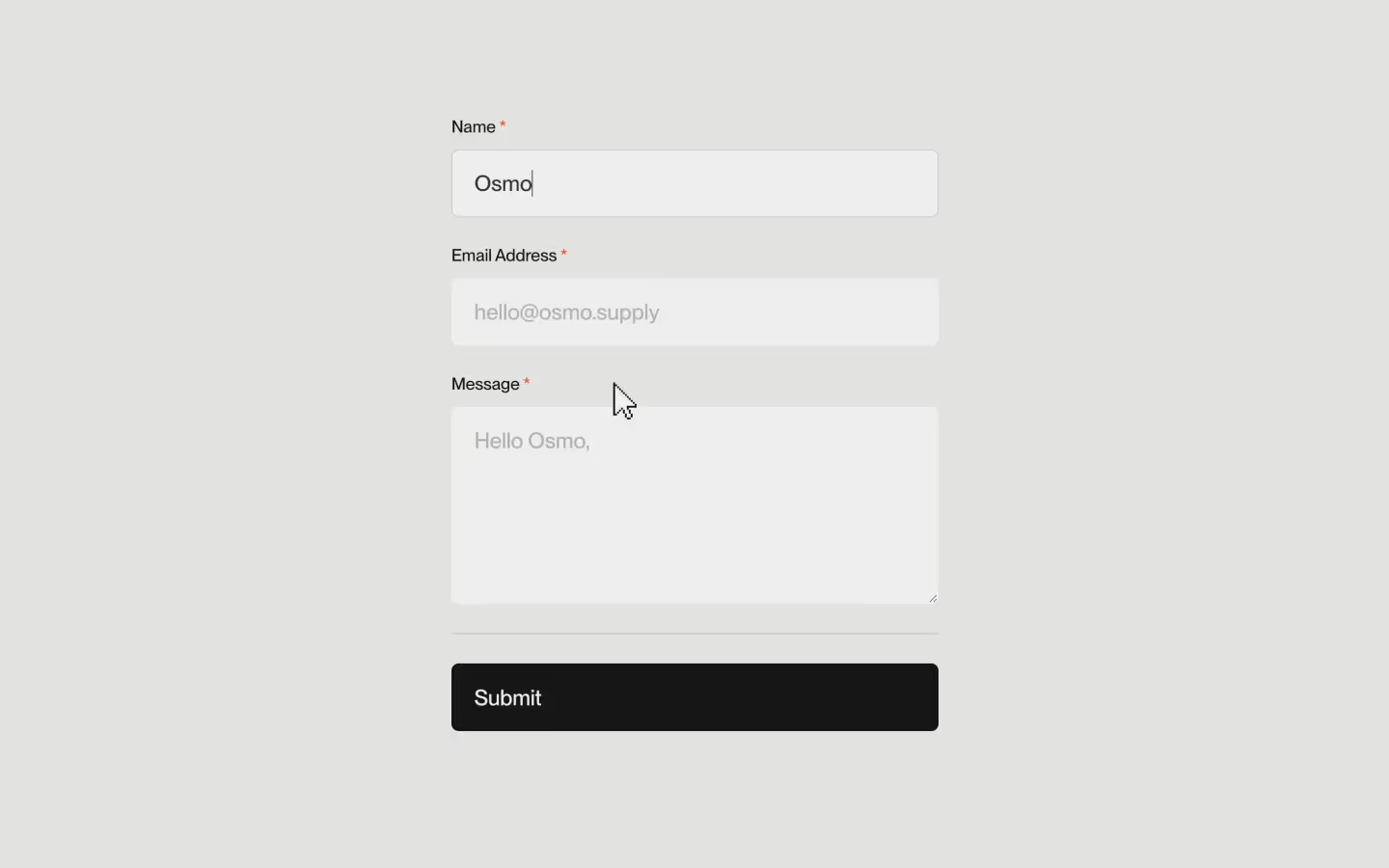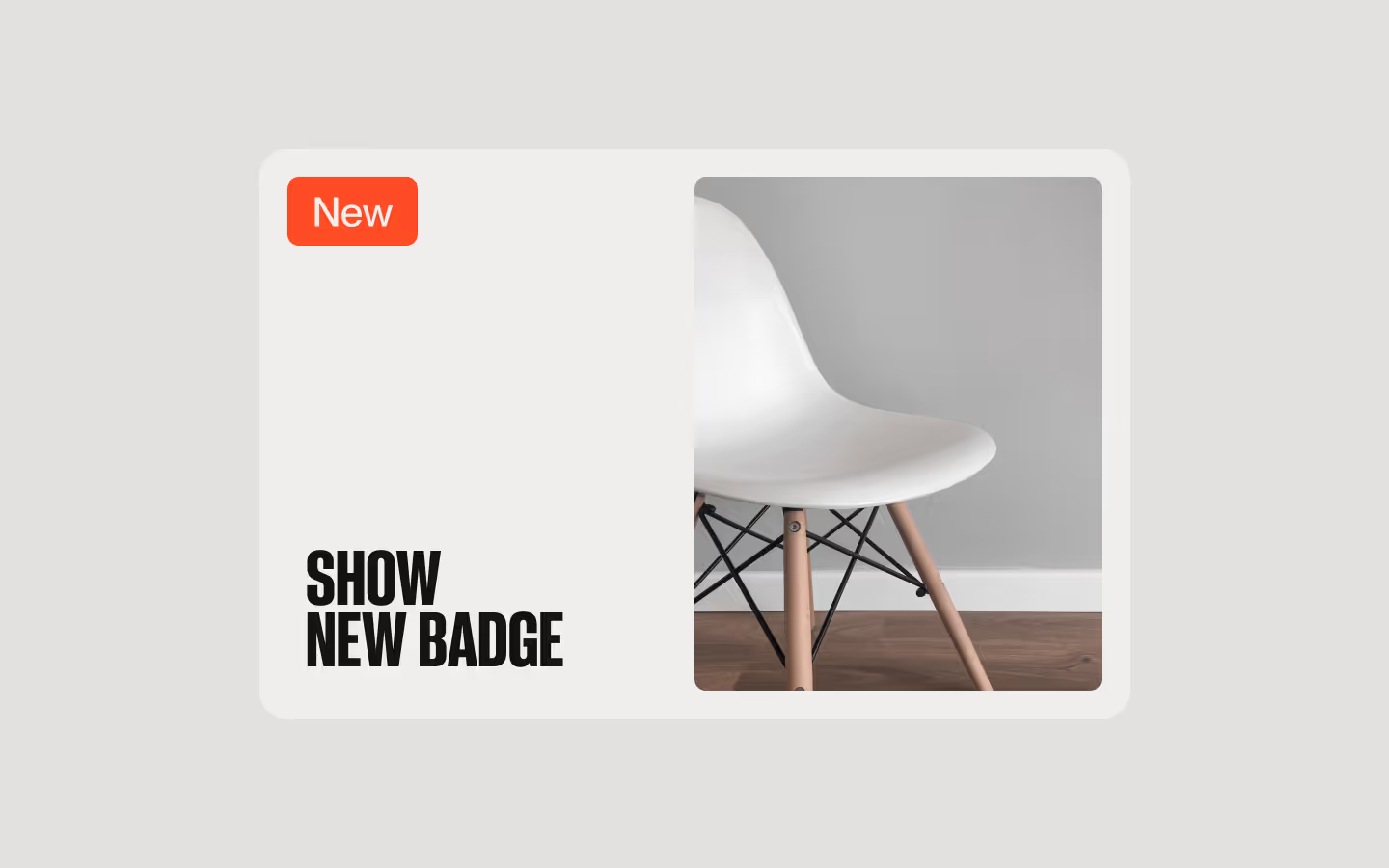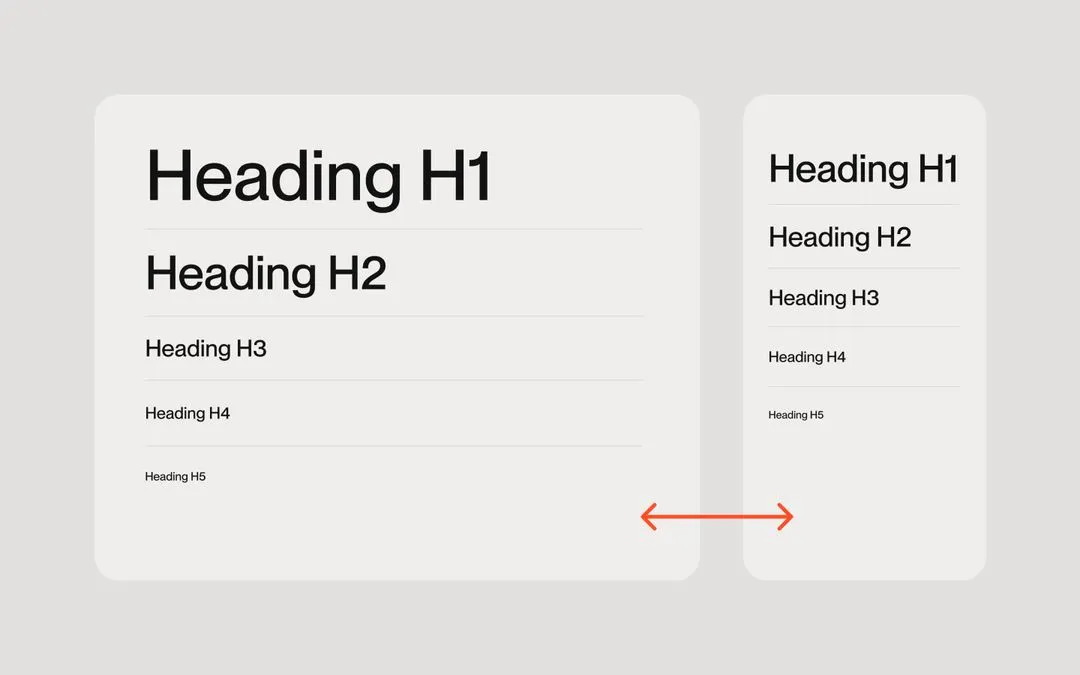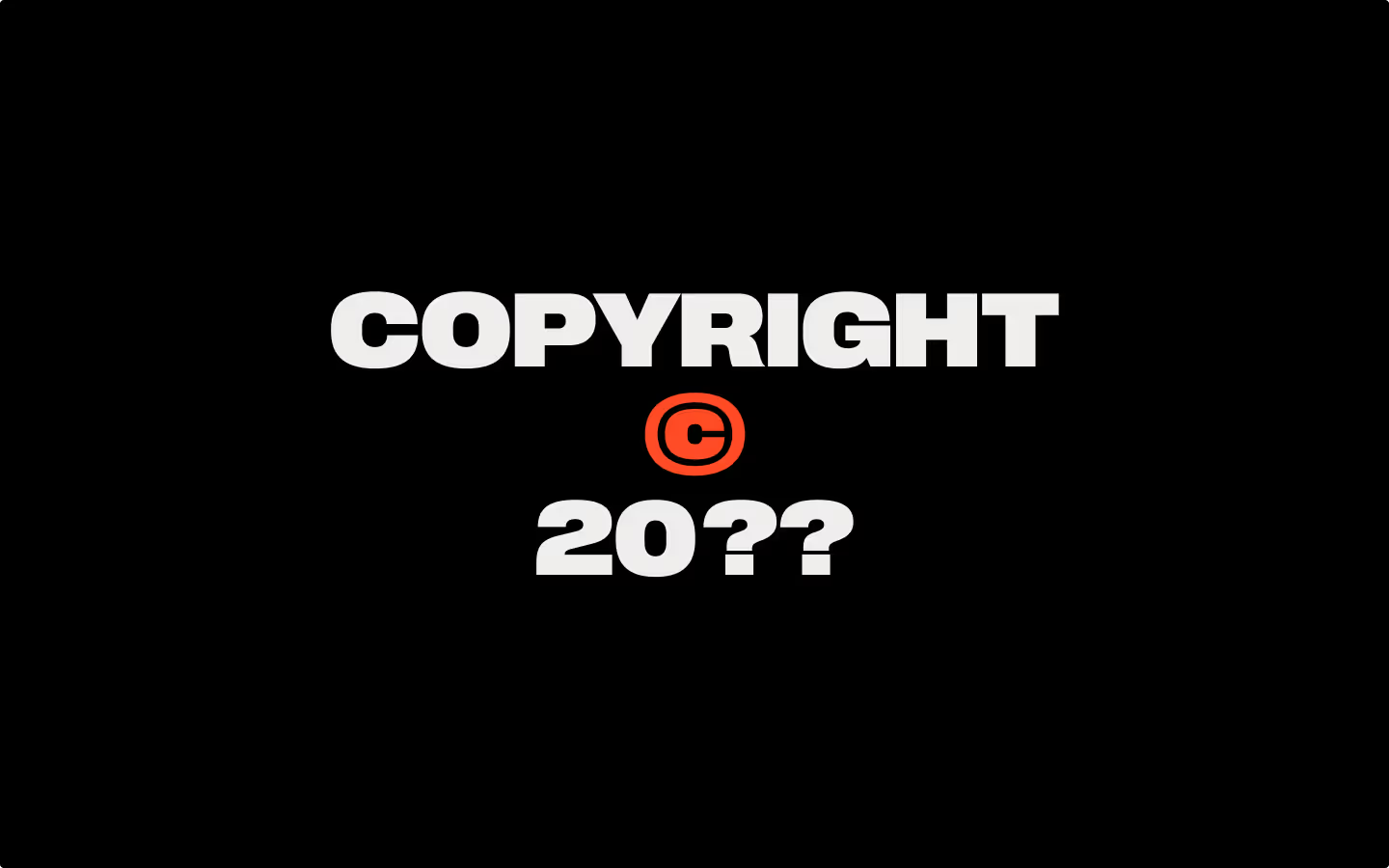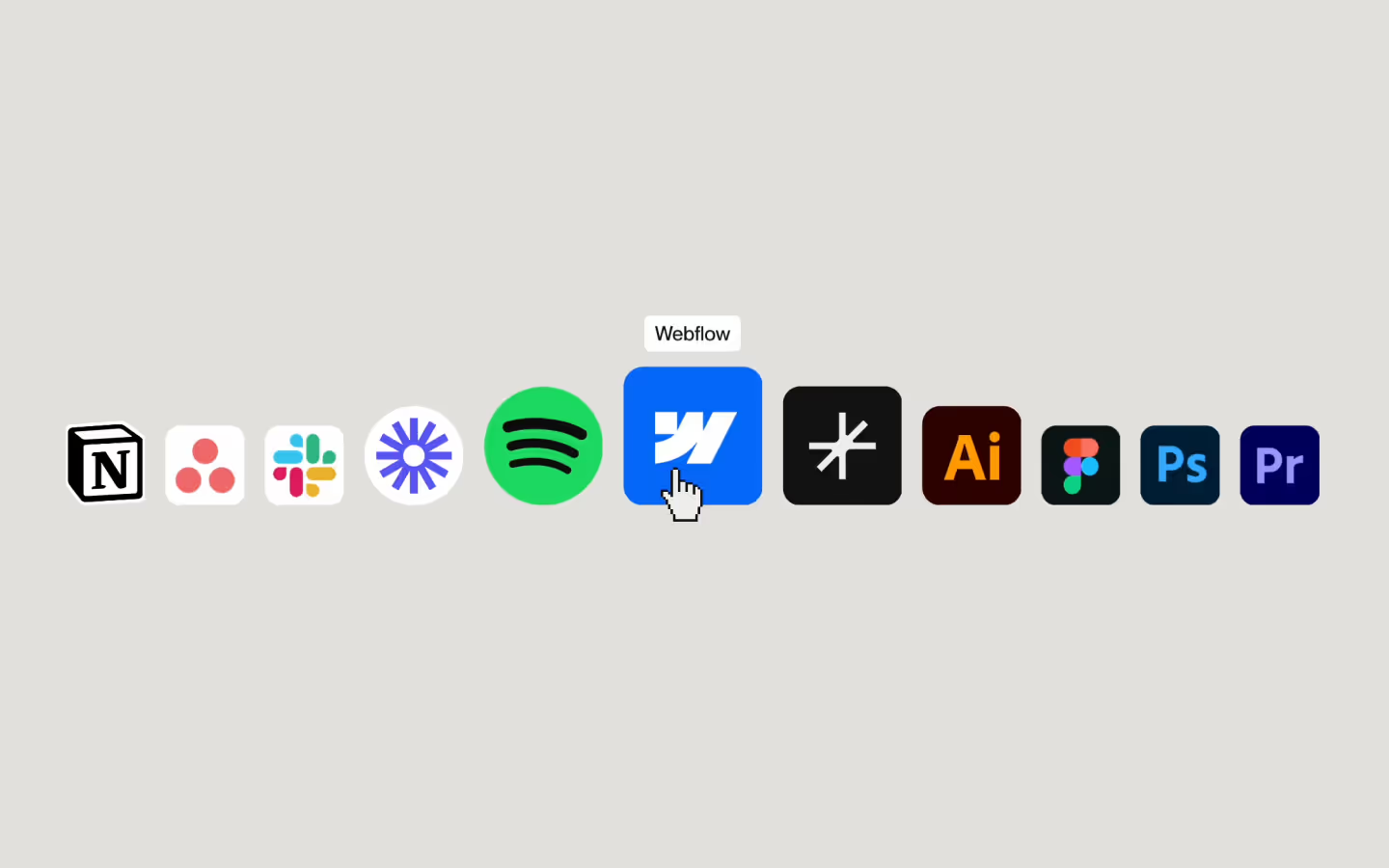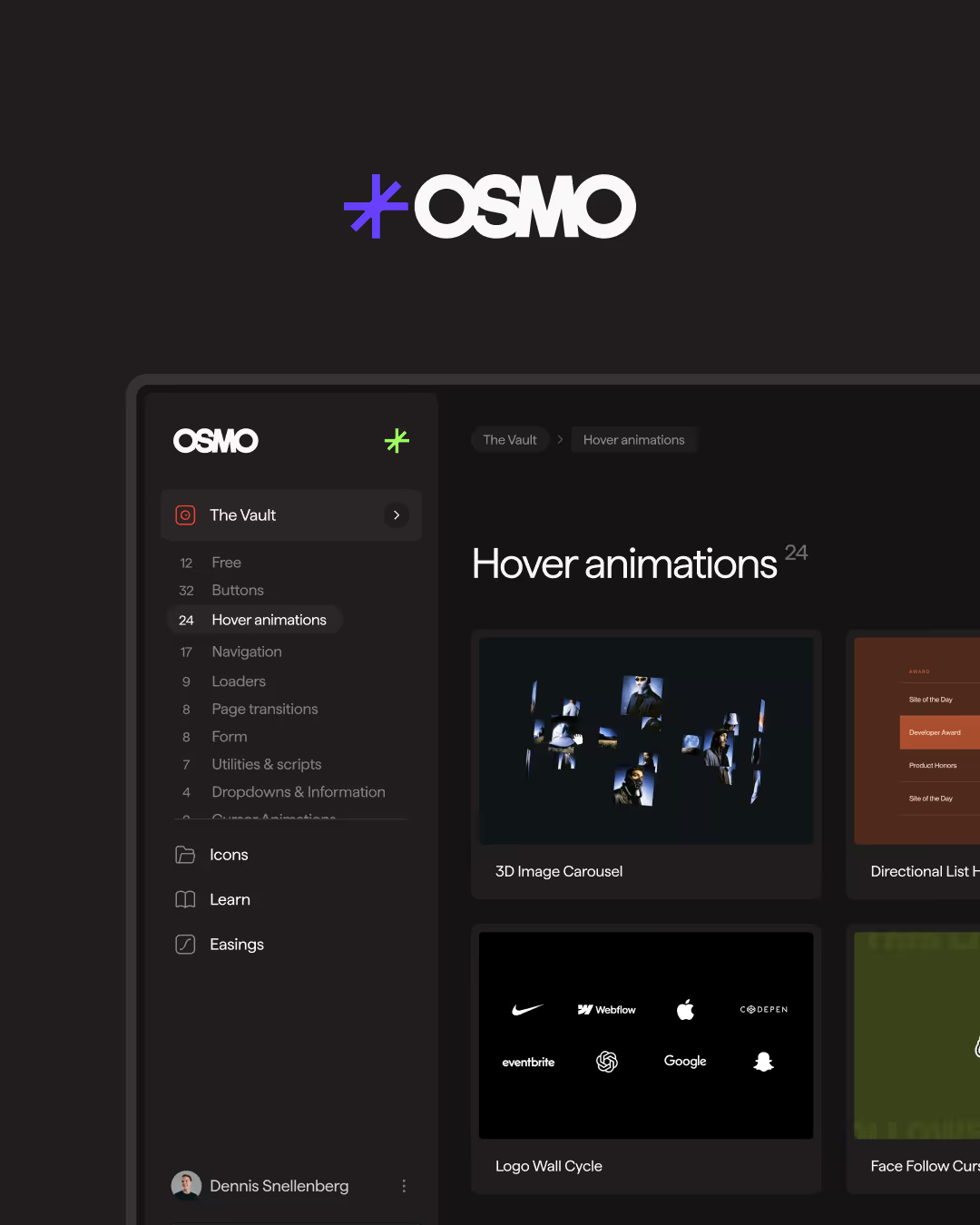Magnetic Cursor

Documentation
Webflow
Code
Setup: External Scripts
External Scripts in Webflow
Make sure to always put the External Scripts before the Javascript step of the resource.
In this video you learn where to put these in your Webflow project? Or how to include a paid GSAP Club plugin in your project?
HTML
<script src="https://cdn.jsdelivr.net/npm/gsap@3.13.0/dist/gsap.min.js"></script>
<script src="https://cdn.jsdelivr.net/npm/gsap@3.13.0/dist/Flip.min.js"></script>Step 1: Copy structure to Webflow
Copy structure to Webflow
In the video below we described how you can copy + paste the structure of this resource to your Webflow project.
Copy to Webflow
Webflow structure is not required for this resource.
Step 1: Add HTML
HTML
<!-- Cursor follower -->
<div class="cursor">
<div class="cursor-bg"></div>
</div>
<!-- Example of a link -->
<a data-magnetic-cursor-target href="#" class="magnetic-link">
<div class="magnetic-link__inner">
<span class="magnetic-link__label">Here’s a link</span>
<svg xmlns="http://www.w3.org/2000/svg" width="100%" viewbox="0 0 14 32" fill="none" class="magnetic-link__icon">
<path d="M3 24L11 16L3 8" stroke="currentColor" stroke-width="2" stroke-miterlimit="10" stroke-linecap="round"></path>
</svg>
</div>
<div data-magnetic-cursor-bg class="magnetic-link__bg"></div>
</a>HTML structure is not required for this resource.
Step 2: Add CSS
CSS
.magnetic-link {
color: inherit;
padding: .5em .875em;
text-decoration: none;
position: relative;
}
.magnetic-link__inner {
z-index: 1;
grid-column-gap: .35em;
grid-row-gap: .35em;
justify-content: center;
align-items: center;
display: flex;
position: relative;
}
.magnetic-link__icon {
justify-content: center;
align-items: center;
width: .4em;
margin-bottom: -.125em;
display: flex;
}
.magnetic-link__bg {
z-index: 0;
border-radius: .25em;
position: absolute;
inset: 0%;
}
.cursor {
aspect-ratio: 1;
border-radius: 100em;
width: .75em;
position: fixed;
inset: 0% auto auto 0%;
}
.cursor-bg {
border-radius: inherit;
background-color: #fff;
width: 100%;
height: 100%;
}
.magnetic-link .cursor-bg {
opacity: 0.1;
}Step 2: Add custom Javascript
Custom Javascript in Webflow
In this video, Ilja gives you some guidance about using JavaScript in Webflow:
Step 2: Add Javascript
Step 3: Add Javascript
Javascript
function initMagneticCursor() {
gsap.registerPlugin(Flip);
const cursor = document.querySelector(".cursor");
if(!cursor) return;
const cursorBg = cursor.querySelector(".cursor-bg");
// First, make the cursor div follow our mouse
gsap.set(".cursor", {xPercent:-50, yPercent: -50});
let xTo = gsap.quickTo(".cursor", "x", {duration: 0.6, ease: "power3"});
let yTo = gsap.quickTo(".cursor", "y", {duration: 0.6, ease: "power3"});
window.addEventListener("mousemove", e => {
xTo(e.clientX);
yTo(e.clientY);
});
// Then, make the setup for our flipping button
const hoverTargets = document.querySelectorAll("[data-magnetic-cursor-target]");
if(!hoverTargets.length) return;
hoverTargets.forEach((target) => {
const bgHolder = target.querySelector("[data-magnetic-cursor-bg]");
target.addEventListener("mouseenter", () =>{
// Register the 'state'
const state = Flip.getState(cursorBg);
// Add bg element into the link
bgHolder.appendChild(cursorBg);
// Create the Flip animation
Flip.from(state,{
ease:"back.out(1)",
duration: 0.3
});
});
target.addEventListener("mouseleave", () =>{
// Register 'state' again, include opacity for subtle ease
const state = Flip.getState(cursorBg,{
props:"opacity"
});
// Add bg element back into the cursor
cursor.appendChild(cursorBg);
// Flip for a smooth animation
Flip.from(state,{
ease:"power4.out",
duration: 0.5,
});
});
});
}
// Initialize Magnetic Cursor
document.addEventListener('DOMContentLoaded', () => {
initMagneticCursor();
});Step 3: Add custom CSS
Step 2: Add custom CSS
Custom CSS in Webflow
Curious about where to put custom CSS in Webflow? Ilja explains it in the below video:
CSS
.magnetic-link .cursor-bg {
opacity: 0.1;
}Implementation
Cursor
Use a fixed positioned element .cursor that follows the pointer via gsap.quickTo, and ensure it contains a single .cursor-bg child that flips between the cursor and targets.
<!-- Cursor follower -->
<div class="cursor">
<div class="cursor-bg"></div>
</div>Targets
Use [data-magnetic-cursor-target] to mark any hoverable element that should 'capture' the cursor’s background, enabling the Flip animation from the global cursor into the target.
Background Slot
Place a single child with [data-magnetic-cursor-bg] inside each target; this element acts as the drop-zone where the cursor’s .cursor-bg is appended on hover and Flip-animated into place. This doesn't necessarily have to be a full background, definitely checkout the live preview link to see how you can apply this script.
Flip Behavior
On mouseenter of a target, the script 'captures' state with Flip.getState(cursorBg) and appends the background element into the target’s [data-magnetic-cursor-bg], then Flip animates it by doing all the necessary calculations itself. On mouseleave, it 'captures' the state again, adds .cursor-bg back into .cursor, and flips it out smoothly.
Hover Styling
Style the cursor background while it lives inside a target using a parent selector, so the visual treatment changes only when the Flip has moved it into [data-magnetic-cursor-bg]. Here's an example:
/* This will set the background to 10% opacity, ONLY when its inside the link */
.magnetic-link .cursor-bg {
opacity: 0.1;
}Resource details
Last updated
September 30, 2025
Category
Cursor Animations
Need help?
Join Slack





